Prosthetic heart valve with pouch
Hariton , et al. January 12, 2
U.S. patent number 10,888,421 [Application Number 16/269,328] was granted by the patent office on 2021-01-12 for prosthetic heart valve with pouch. This patent grant is currently assigned to CARDIOVALVE LTD.. The grantee listed for this patent is CARDIOVALVE LTD.. Invention is credited to Aviram Baum, Boaz Harari, Ilia Hariton, Meni Iamberger, Yelena Kasimov.
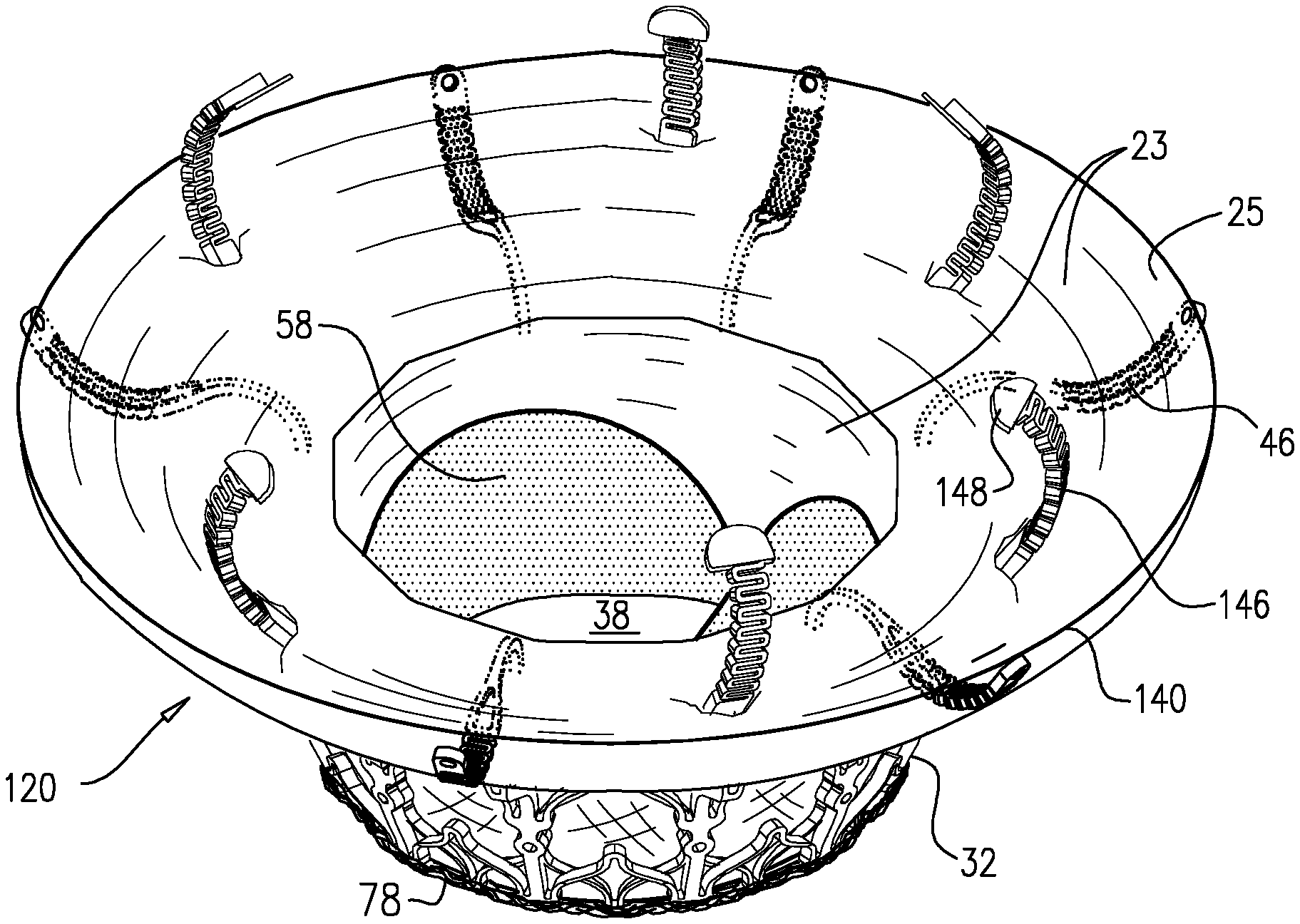
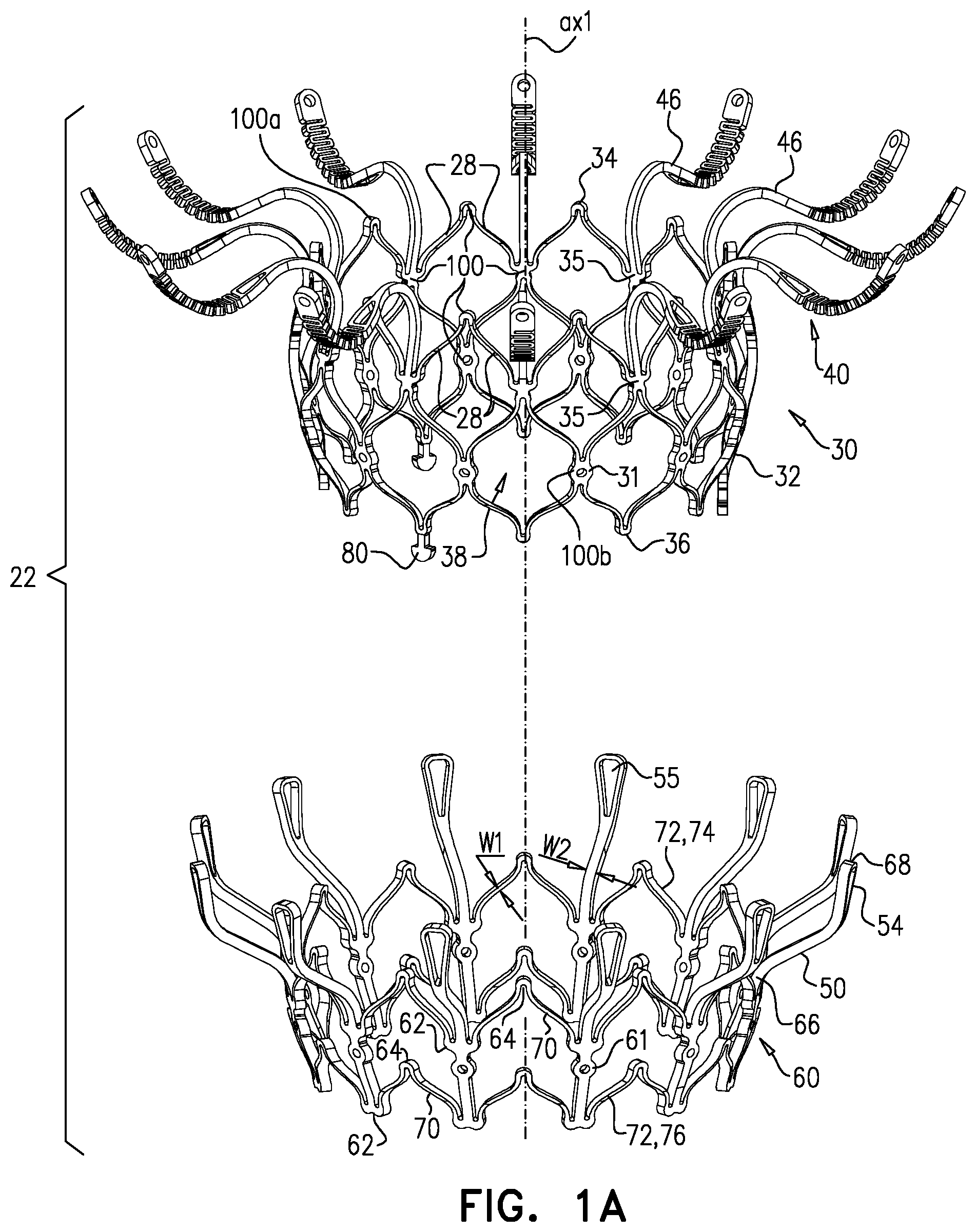
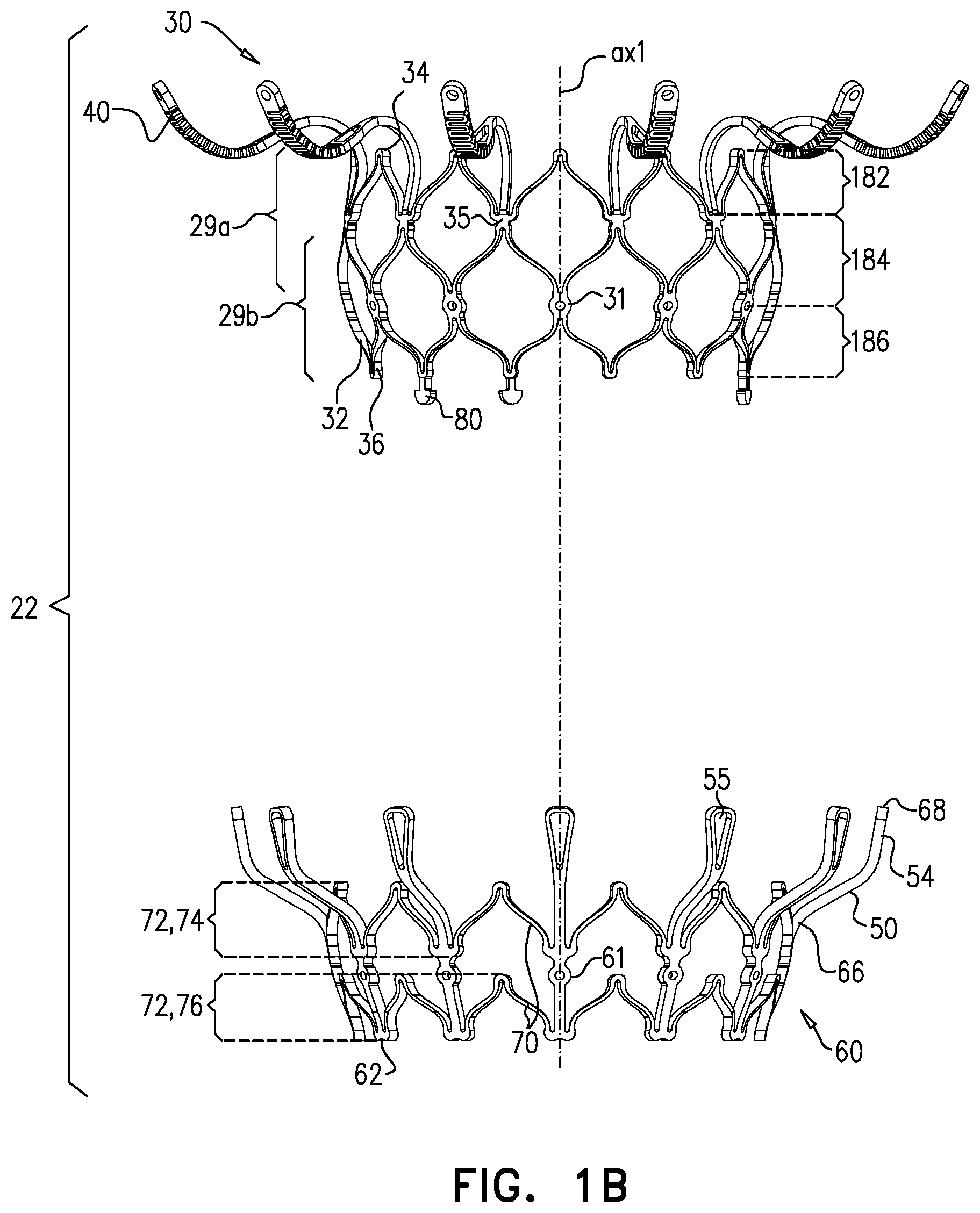
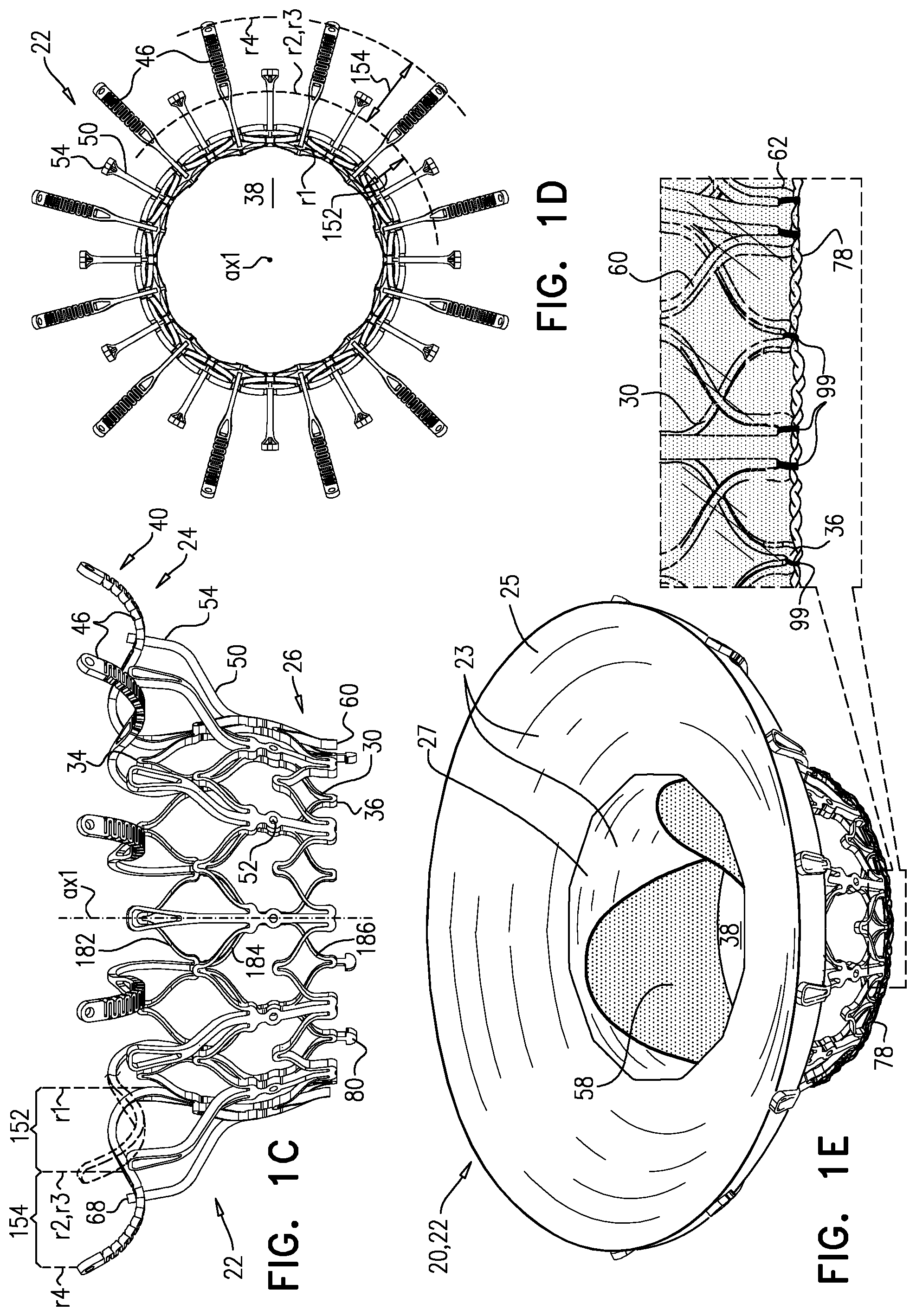
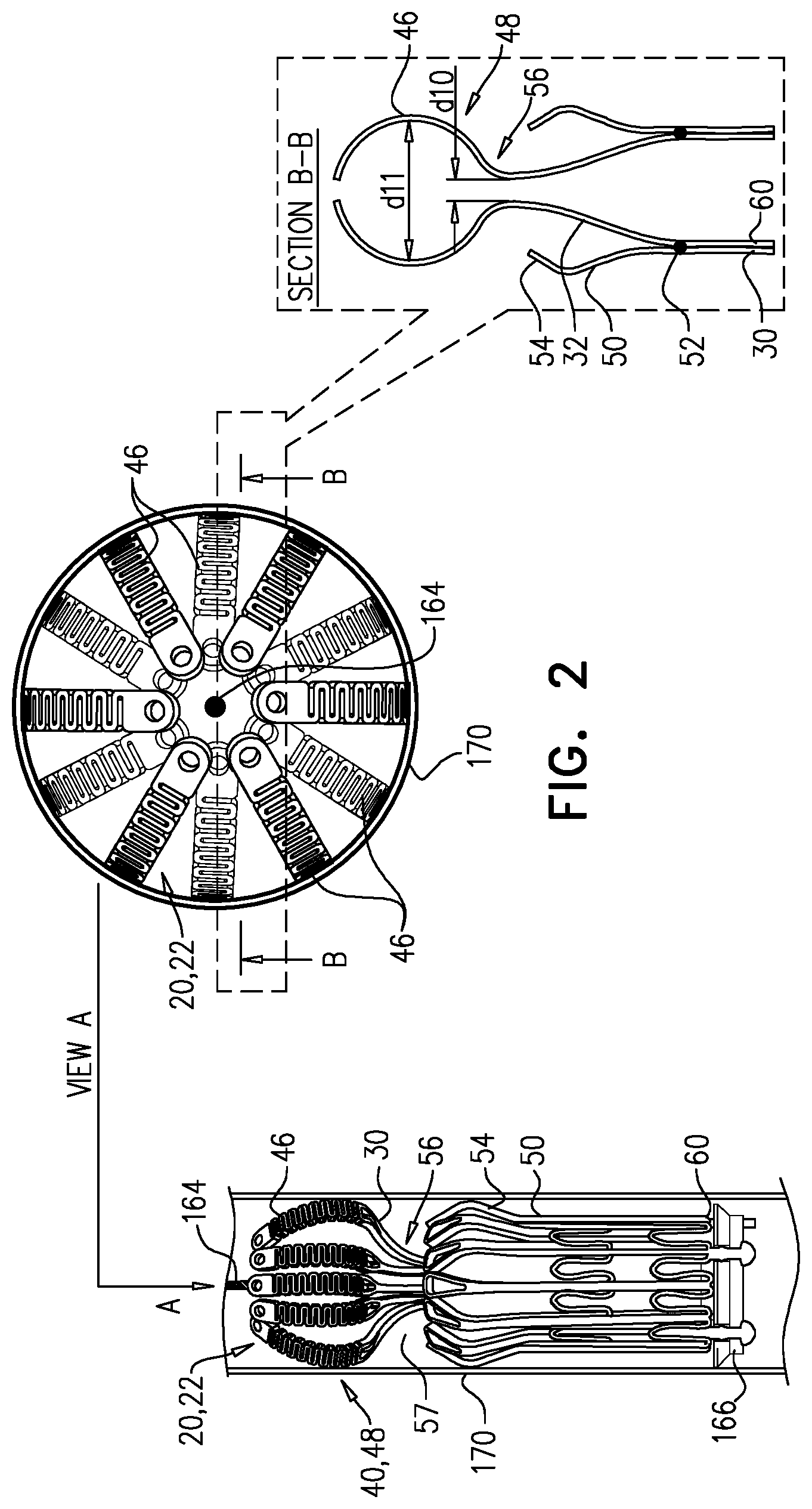
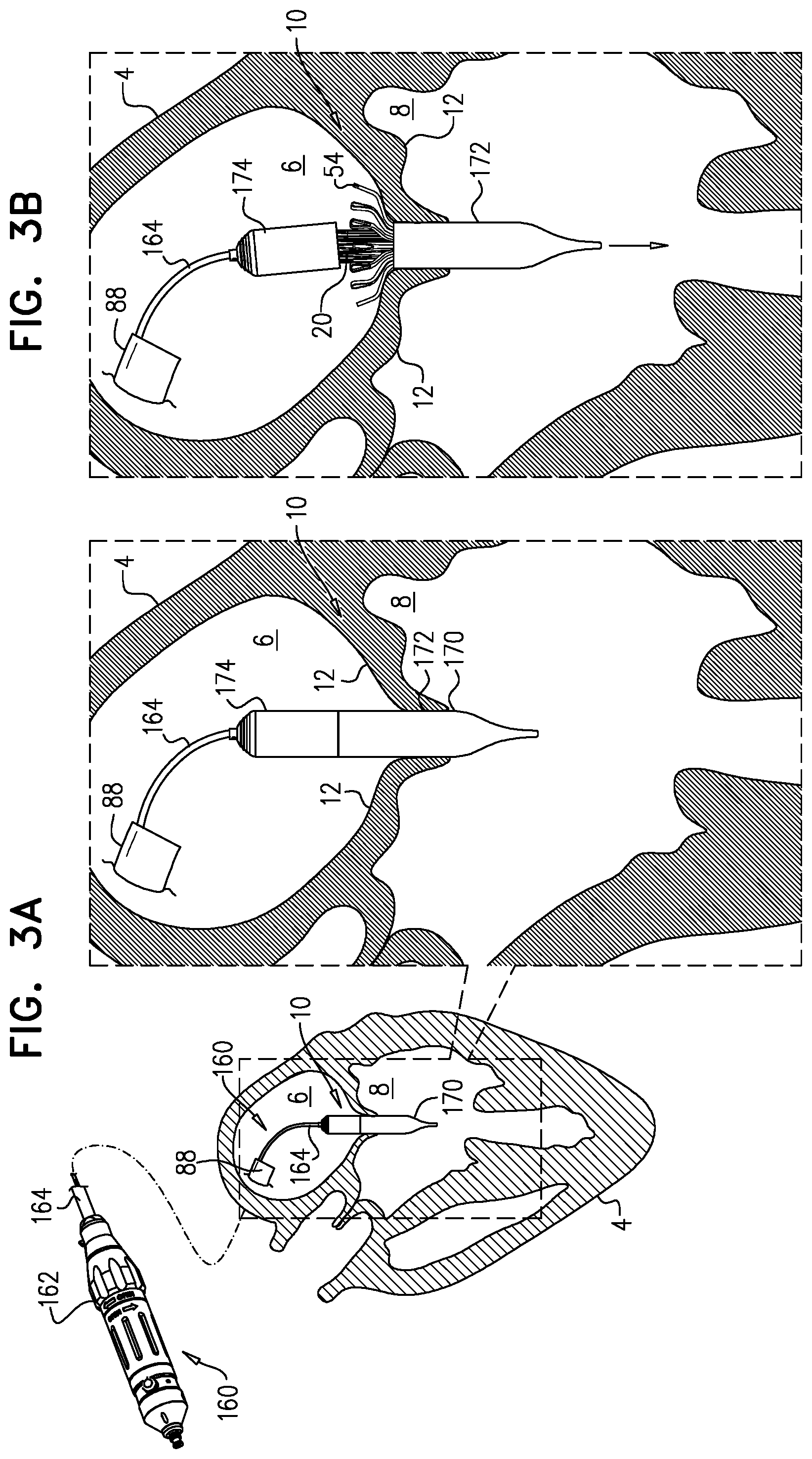
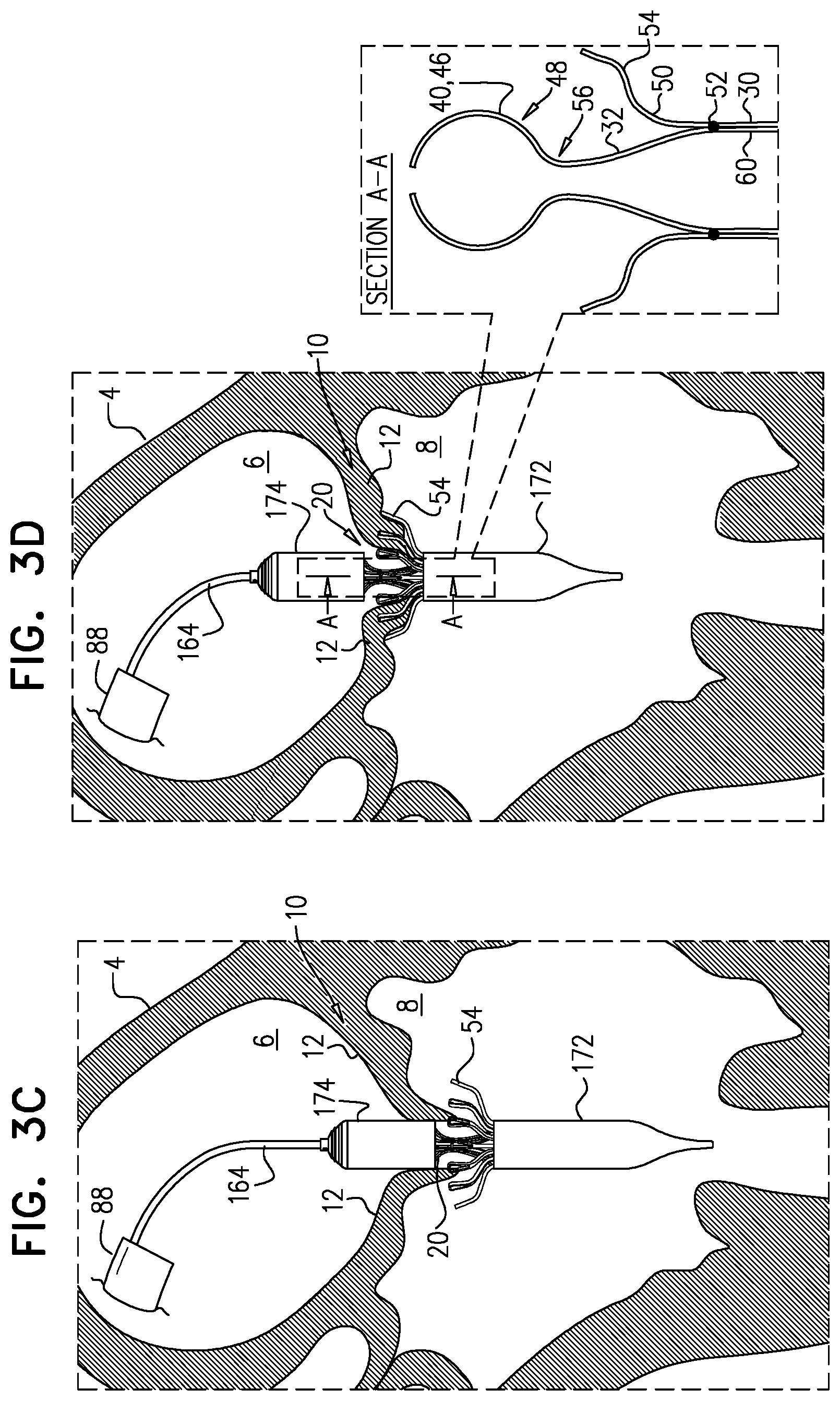
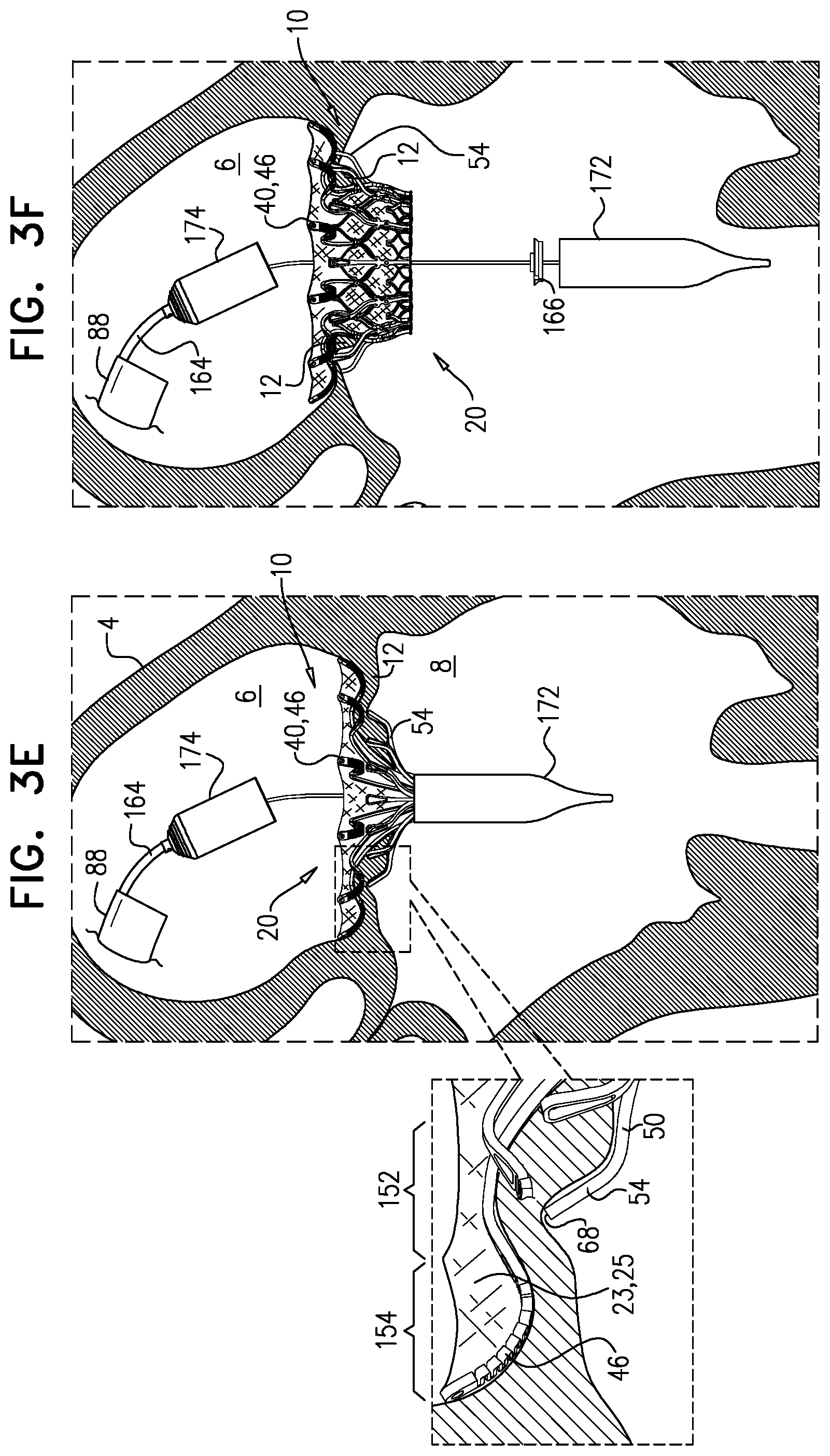
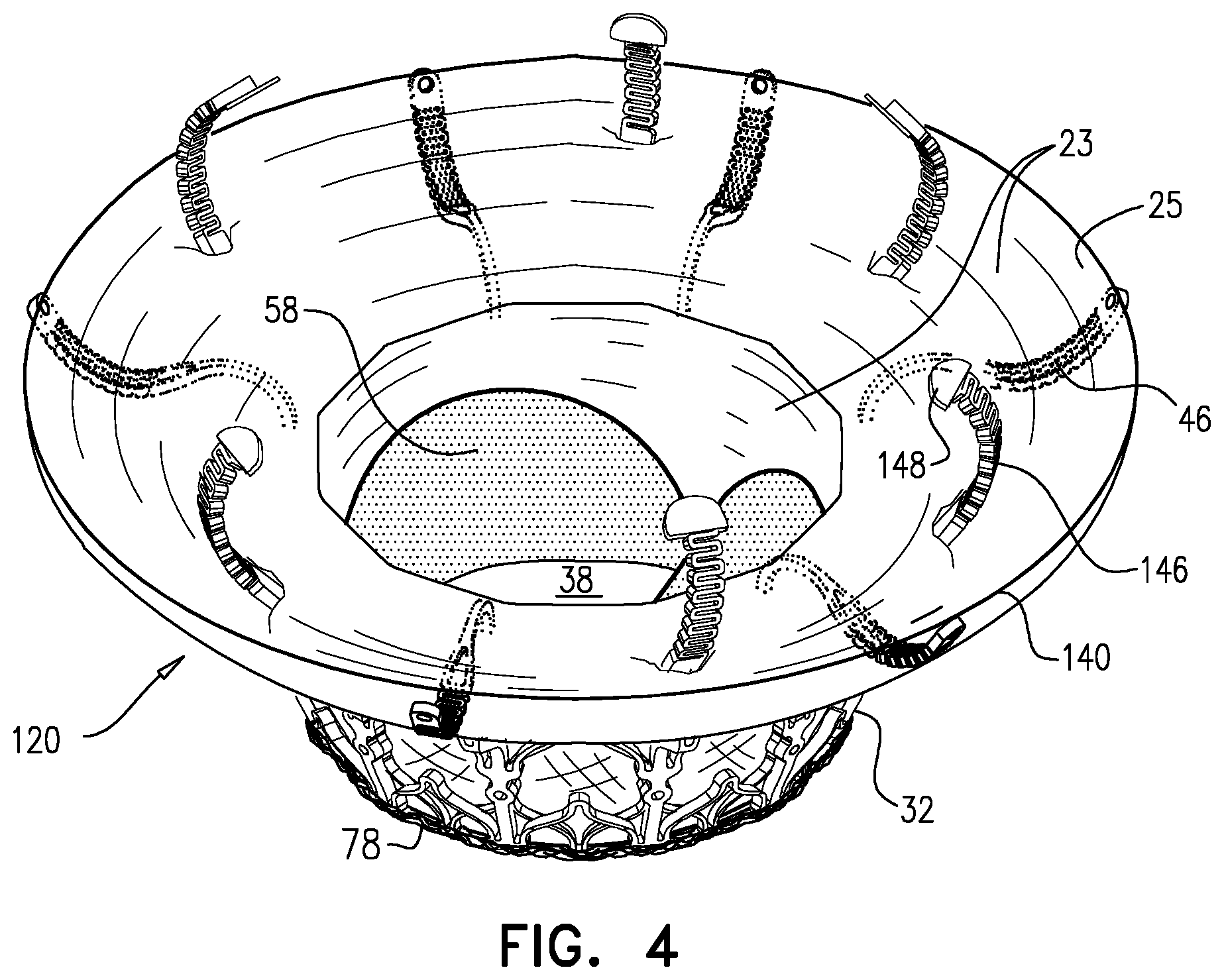
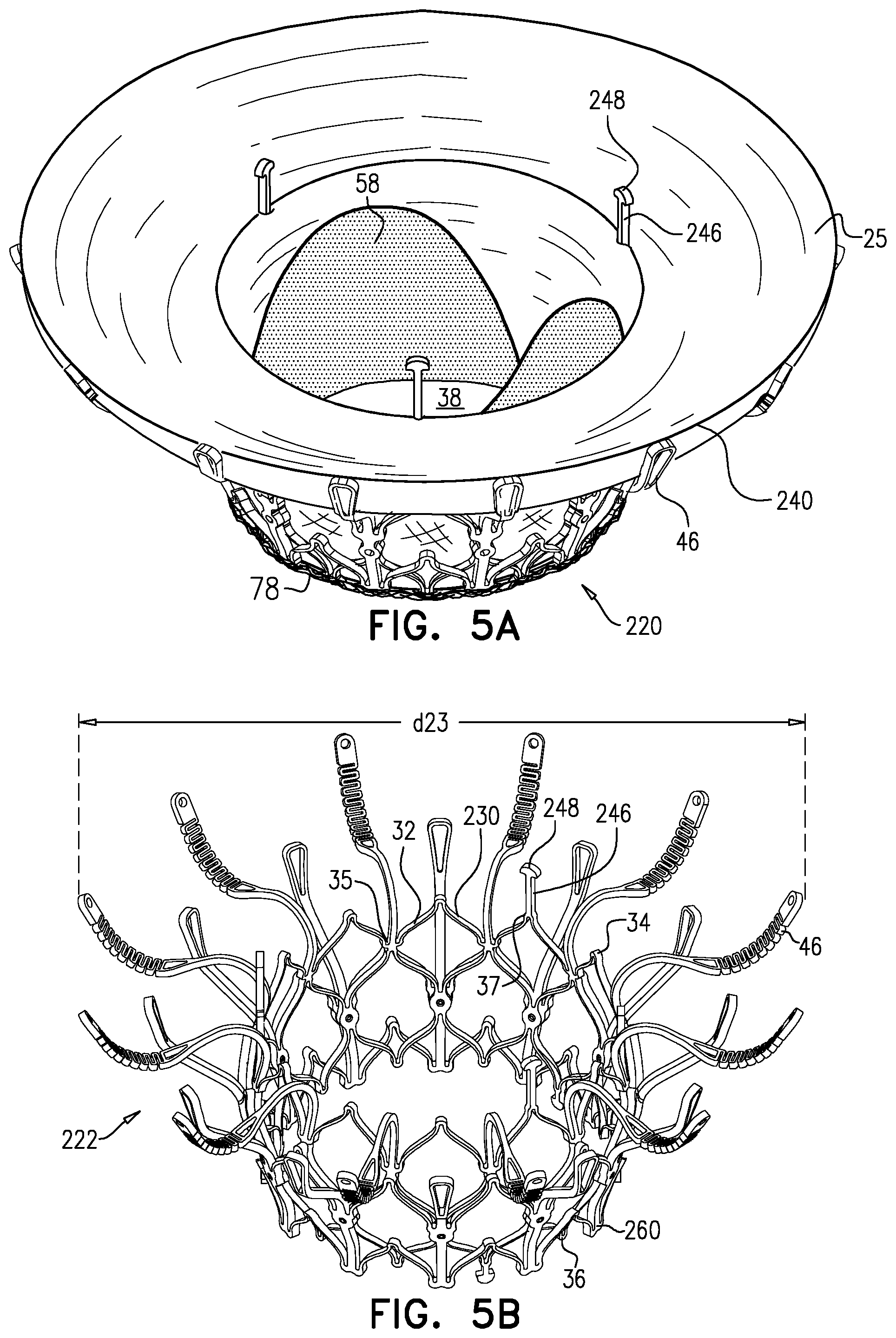
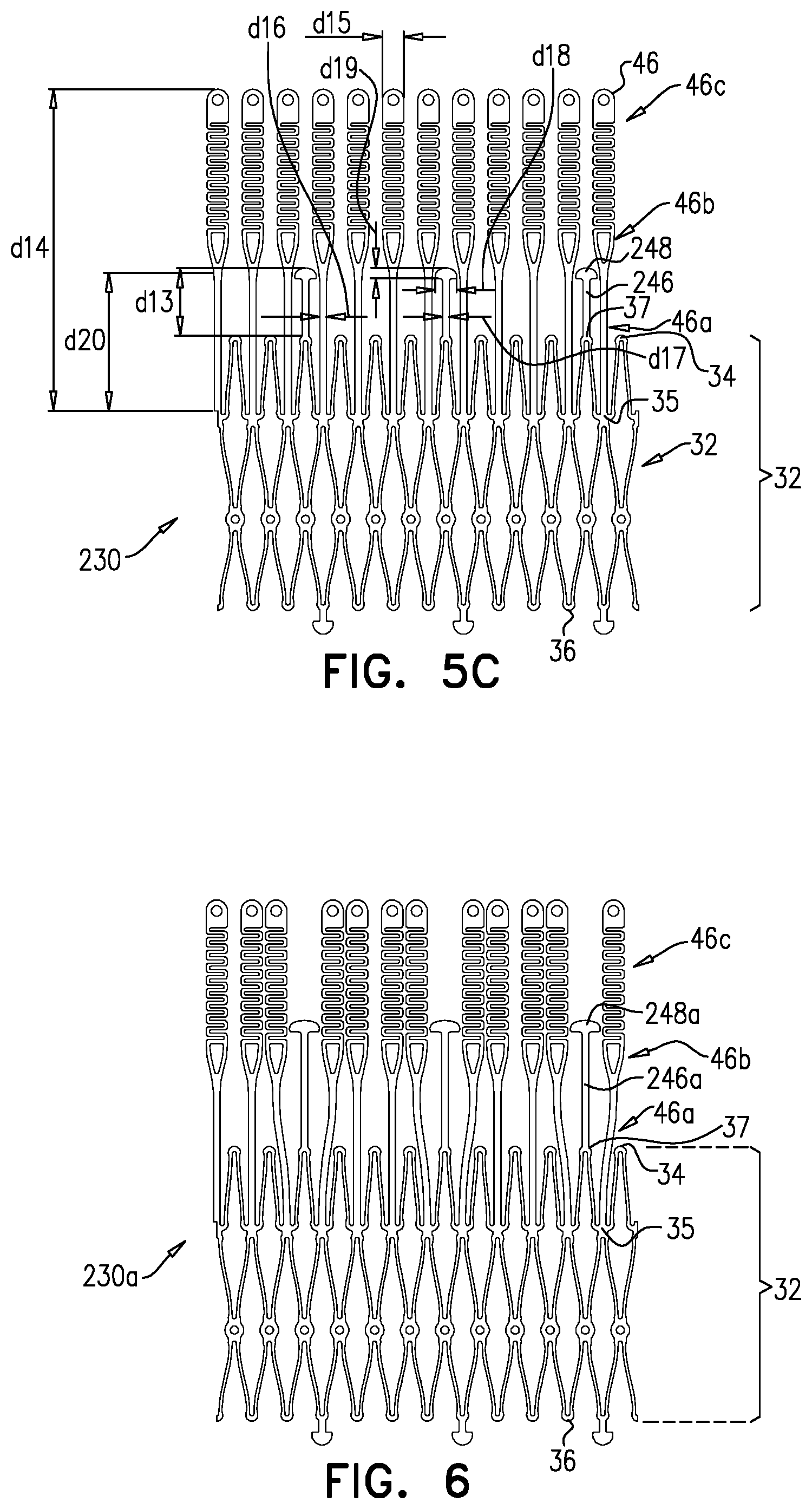
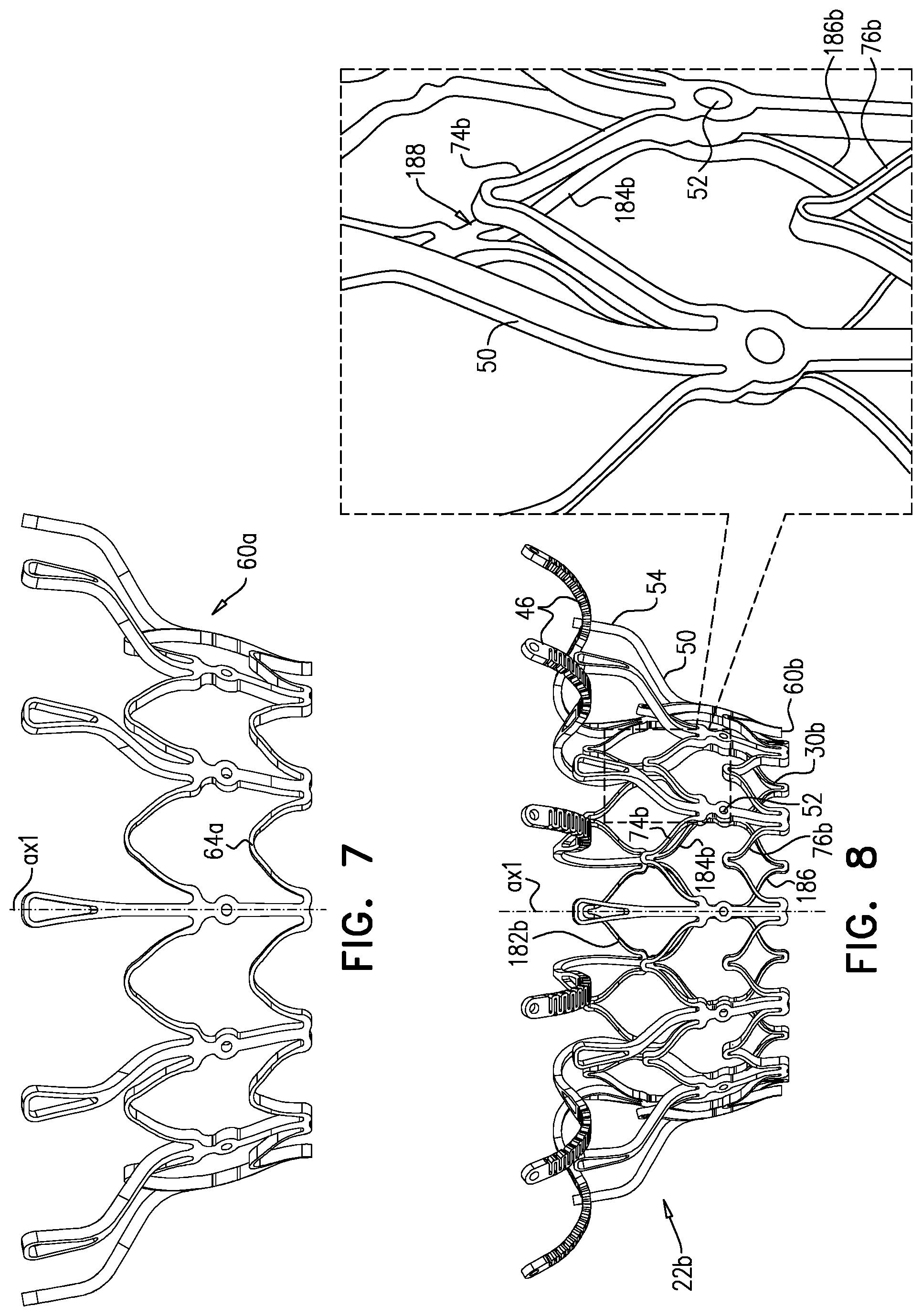
View All Diagrams
| United States Patent | 10,888,421 |
| Hariton , et al. | January 12, 2021 |
Prosthetic heart valve with pouch
Abstract
A valve body circumscribes a longitudinal axis and defines a lumen along the axis. Upstream arms are coupled to the valve body, and extend radially outward from the valve body to respective arm-tips. Downstream legs are coupled to the valve body, and extend radially outward from the valve body and toward the plurality of arms. A flexible pouch extends radially outward from the valve body. The arms and the legs narrow the pouch therebetween to form a narrowed portion of the pouch, thereby defining, in an interior space of the pouch: (a) an inner portion, radially inward from the narrowed portion, and in fluid communication with the lumen, and (b) an outer portion, radially outward from the narrowed portion, and in fluid communication with the inner portion via the narrowed portion. Other embodiments are also described.
| Inventors: | Hariton; Ilia (Zichron Yaackov, IL), Iamberger; Meni (Kfar Saba, IL), Kasimov; Yelena (Petach-Tikva, IL), Harari; Boaz (Ganey Tikva, IL), Baum; Aviram (Tel Aviv, IL) | ||||||||||
|---|---|---|---|---|---|---|---|---|---|---|---|
| Applicant: |
|
||||||||||
| Assignee: | CARDIOVALVE LTD. (Or Yehuda,
IL) |
||||||||||
| Family ID: | 1000005293929 | ||||||||||
| Appl. No.: | 16/269,328 | ||||||||||
| Filed: | February 6, 2019 |
Prior Publication Data
| Document Identifier | Publication Date | |
|---|---|---|
| US 20190167423 A1 | Jun 6, 2019 | |
Related U.S. Patent Documents
| Application Number | Filing Date | Patent Number | Issue Date | ||
|---|---|---|---|---|---|
| 16135969 | Sep 19, 2018 | ||||
| 16135979 | Sep 19, 2018 | ||||
| PCT/IL2018/050725 | Jul 4, 2018 | ||||
| 15956956 | Apr 19, 2018 | 10575948 | |||
| 62560384 | Sep 19, 2017 | ||||
| 62560384 | Sep 19, 2017 | ||||
| Current U.S. Class: | 1/1 |
| Current CPC Class: | A61F 2/2418 (20130101); A61F 2/24 (20130101); A61F 2220/0075 (20130101); A61F 2220/0008 (20130101); A61F 2210/0014 (20130101); A61F 2250/0003 (20130101); A61F 2/2427 (20130101); A61F 2250/0039 (20130101); A61F 2/2436 (20130101) |
| Current International Class: | A61F 2/24 (20060101) |
References Cited [Referenced By]
U.S. Patent Documents
| 4261342 | April 1981 | Aranguren Duo |
| 4275469 | June 1981 | Gabbay |
| 4423525 | January 1984 | Vallana et al. |
| 4853986 | August 1989 | Allen |
| 4892541 | January 1990 | Alonso |
| 4994077 | February 1991 | Dobben |
| 5078739 | January 1992 | Martin |
| 5108420 | April 1992 | Marks |
| 5314473 | May 1994 | Godin |
| 5332402 | July 1994 | Teitelbaum |
| 5397351 | March 1995 | Pavcnik et al. |
| 5405378 | April 1995 | Strecker |
| 5443500 | August 1995 | Sigwart |
| 5473812 | December 1995 | Morris et al. |
| 5607444 | March 1997 | Lam |
| 5607470 | March 1997 | Milo |
| 5647857 | July 1997 | Anderson et al. |
| 5702397 | December 1997 | Goble et al. |
| 5765682 | June 1998 | Bley et al. |
| 5776140 | July 1998 | Cottone |
| 5868777 | February 1999 | Lam |
| 5873906 | February 1999 | Lau et al. |
| 5954766 | September 1999 | Zadno-Azizi et al. |
| 5957949 | September 1999 | Leonhardt et al. |
| 5980565 | November 1999 | Jayaraman |
| 6019787 | February 2000 | Richard et al. |
| 6042607 | March 2000 | Williamson, IV et al. |
| 6059827 | May 2000 | Fenton, Jr. |
| 6074417 | June 2000 | Peredo |
| 6113612 | September 2000 | Swanson et al. |
| 6120534 | September 2000 | Ruiz |
| 6152937 | November 2000 | Peterson et al. |
| 6165210 | December 2000 | Lau et al. |
| 6187020 | February 2001 | Zegdi et al. |
| 6193745 | February 2001 | Fogarty et al. |
| 6264700 | July 2001 | Kilcoyne et al. |
| 6287339 | September 2001 | Vazquez et al. |
| 6312465 | November 2001 | Griffin et al. |
| 6332893 | December 2001 | Mortier et al. |
| 6334873 | January 2002 | Lane et al. |
| 6350278 | February 2002 | Lenker et al. |
| 6352561 | March 2002 | Leopold et al. |
| 6391036 | May 2002 | Berg et al. |
| 6402780 | June 2002 | Williamson, IV et al. |
| 6409755 | June 2002 | Vrba |
| 6419696 | July 2002 | Ortiz et al. |
| 6428550 | August 2002 | Vargas et al. |
| 6440164 | August 2002 | DiMatteo et al. |
| 6454799 | September 2002 | Schreck |
| 6458153 | October 2002 | Bailey et al. |
| 6482228 | November 2002 | Norred |
| 6511491 | January 2003 | Grudem et al. |
| 6530952 | March 2003 | Vesely |
| 6540782 | April 2003 | Snyders |
| 6551350 | April 2003 | Thornton et al. |
| 6558396 | May 2003 | Inoue |
| 6558418 | May 2003 | Carpentier et al. |
| 6569196 | May 2003 | Vesely |
| 6602263 | August 2003 | Swanson et al. |
| 6616675 | September 2003 | Evard et al. |
| 6652556 | November 2003 | VanTassel et al. |
| 6669724 | December 2003 | Park et al. |
| 6682558 | January 2004 | Tu et al. |
| 6699256 | March 2004 | Logan et al. |
| 6716244 | April 2004 | Klaco |
| 6719781 | April 2004 | Kim |
| 6719788 | April 2004 | Cox |
| 6730118 | May 2004 | Spenser et al. |
| 6730121 | May 2004 | Ortiz et al. |
| 6733525 | May 2004 | Yang et al. |
| 6764518 | July 2004 | Godin |
| 6767362 | July 2004 | Schreck |
| 6797002 | September 2004 | Spence et al. |
| 6821297 | November 2004 | Snyders |
| 6830585 | December 2004 | Artof et al. |
| 6830638 | December 2004 | Boylan et al. |
| 6893460 | May 2005 | Spenser et al. |
| 6951571 | October 2005 | Srivastava |
| 6960217 | November 2005 | Bolduc |
| 6964684 | November 2005 | Ortiz et al. |
| 6974476 | December 2005 | McGuckin, Jr. et al. |
| 7011681 | March 2006 | Vesely |
| 7018406 | March 2006 | Seguin et al. |
| 7041132 | May 2006 | Quijano et al. |
| 7077861 | July 2006 | Spence |
| 7101395 | September 2006 | Tremulis et al. |
| 7101396 | September 2006 | Artof et al. |
| 7137184 | November 2006 | Schreck |
| 7172625 | February 2007 | Shu et al. |
| 7175656 | February 2007 | Khairkhahan |
| 7198646 | April 2007 | Figulla et al. |
| 7201772 | April 2007 | Schwammenthal et al. |
| 7226477 | June 2007 | Cox |
| 7288111 | October 2007 | Holloway et al. |
| 7316716 | January 2008 | Egan |
| 7329279 | February 2008 | Haug et al. |
| 7335213 | February 2008 | Hyde et al. |
| 7351256 | April 2008 | Hojeibane et al. |
| 7374573 | May 2008 | Gabbay |
| 7377938 | May 2008 | Sarac et al. |
| 7381218 | June 2008 | Schreck |
| 7381219 | June 2008 | Salahieh et al. |
| 7404824 | July 2008 | Webler et al. |
| 7422603 | September 2008 | Lane |
| 7429269 | September 2008 | Schwammenthal et al. |
| 7442204 | October 2008 | Schwammenthal et al. |
| 7445630 | November 2008 | Lashinski et al. |
| 7455677 | November 2008 | Vargas et al. |
| 7455688 | November 2008 | Furst et al. |
| 7462162 | December 2008 | Phan et al. |
| 7481838 | January 2009 | Carpentier et al. |
| 7510575 | March 2009 | Spenser et al. |
| 7513909 | April 2009 | Lane et al. |
| 7524331 | April 2009 | Birdsall |
| 7527646 | May 2009 | Rahdert et al. |
| 7556646 | July 2009 | Yang et al. |
| 7582111 | September 2009 | Krolik et al. |
| 7585321 | September 2009 | Cribier |
| 7597711 | October 2009 | Drews et al. |
| 7611534 | November 2009 | Kapadia et al. |
| 7621948 | November 2009 | Herrmann et al. |
| 7625403 | December 2009 | Krivoruchko |
| 7632302 | December 2009 | Vreeman et al. |
| 7648528 | January 2010 | Styrc |
| 7666204 | February 2010 | Thornton et al. |
| 7682380 | March 2010 | Thornton et al. |
| 7708775 | May 2010 | Rowe et al. |
| 7717952 | May 2010 | Case et al. |
| 7717955 | May 2010 | Lane et al. |
| 7731741 | June 2010 | Eidenschink |
| 7748389 | July 2010 | Salahieh et al. |
| 7753922 | July 2010 | Starksen |
| 7758595 | July 2010 | Allen et al. |
| 7758632 | July 2010 | Hojeibane et al. |
| 7758640 | July 2010 | Vesely |
| 7771467 | August 2010 | Svensson |
| 7771469 | August 2010 | Liddicoat |
| 7776083 | August 2010 | Vesely |
| 7780726 | August 2010 | Seguin |
| 7785341 | August 2010 | Forster et al. |
| 7799069 | September 2010 | Bailey et al. |
| 7803181 | September 2010 | Furst et al. |
| 7811316 | October 2010 | Kalmann et al. |
| 7824442 | November 2010 | Salahieh et al. |
| 7837645 | November 2010 | Bessler et al. |
| 7837727 | November 2010 | Goetz et al. |
| 7842081 | November 2010 | Yadin |
| 7850725 | December 2010 | Vardi et al. |
| 7871432 | January 2011 | Bergin |
| 7871436 | January 2011 | Ryan et al. |
| 7887583 | February 2011 | Macoviak |
| 7892281 | February 2011 | Seguin et al. |
| 7896915 | March 2011 | Guyenot et al. |
| 7914544 | March 2011 | Nguyen et al. |
| 7914569 | March 2011 | Nguyen et al. |
| 7927370 | April 2011 | Webler et al. |
| 7942927 | May 2011 | Kaye et al. |
| 7947072 | May 2011 | Yang et al. |
| 7947075 | May 2011 | Goetz et al. |
| 7951195 | May 2011 | Antonsson et al. |
| 7955375 | June 2011 | Agnew |
| 7955377 | June 2011 | Melsheimer |
| 7955384 | June 2011 | Rafiee et al. |
| 7959666 | June 2011 | Salahieh et al. |
| 7959672 | June 2011 | Salahieh et al. |
| 7967833 | June 2011 | Sterman et al. |
| 7967857 | June 2011 | Lane |
| 7981151 | July 2011 | Rowe |
| 7981153 | July 2011 | Fogarty et al. |
| 7992567 | August 2011 | Hirotsuka et al. |
| 7993393 | August 2011 | Carpentier et al. |
| 8002825 | August 2011 | Letac et al. |
| 8002826 | August 2011 | Seguin |
| 8016877 | September 2011 | Seguin et al. |
| 8016882 | September 2011 | Macoviak et al. |
| 8021420 | September 2011 | Dolan |
| 8021421 | September 2011 | Fogarty et al. |
| 8025695 | September 2011 | Fogarty et al. |
| 8029518 | October 2011 | Goldfarb et al. |
| 8029557 | October 2011 | Sobrino-Serrano et al. |
| 8029564 | October 2011 | Johnson et al. |
| 8034104 | October 2011 | Carpentier et al. |
| 8038720 | October 2011 | Wallace et al. |
| 8043360 | October 2011 | McNamara et al. |
| 8048138 | November 2011 | Sullivan et al. |
| 8048140 | November 2011 | Purdy |
| 8048153 | November 2011 | Salahieh et al. |
| 8052741 | November 2011 | Bruszewski et al. |
| 8052749 | November 2011 | Salahieh et al. |
| 8057493 | November 2011 | Goldfarb et al. |
| 8057532 | November 2011 | Hoffman |
| 8057540 | November 2011 | Letac et al. |
| 8062355 | November 2011 | Figulla et al. |
| 8062359 | November 2011 | Marquez et al. |
| 8070708 | December 2011 | Rottenberg et al. |
| 8070800 | December 2011 | Lock et al. |
| 8070802 | December 2011 | Lamphere et al. |
| 8070804 | December 2011 | Hyde et al. |
| 8075611 | December 2011 | Millwee et al. |
| 8080054 | December 2011 | Rowe |
| 8083793 | December 2011 | Lane et al. |
| D652927 | January 2012 | Braido et al. |
| D653341 | January 2012 | Braido et al. |
| 8092518 | January 2012 | Schreck |
| 8092520 | January 2012 | Quadri |
| 8092521 | January 2012 | Figulla et al. |
| 8105377 | January 2012 | Liddicoat |
| 8109996 | February 2012 | Stacchino et al. |
| 8118866 | February 2012 | Herrmann et al. |
| 8133270 | March 2012 | Kheradvar et al. |
| 8136218 | March 2012 | Millwee et al. |
| 8137398 | March 2012 | Tuval et al. |
| 8142492 | March 2012 | Forster et al. |
| 8142494 | March 2012 | Rahdert et al. |
| 8142496 | March 2012 | Berreklouw |
| 8142497 | March 2012 | Friedman |
| 8147504 | April 2012 | Ino et al. |
| 8157852 | April 2012 | Bloom et al. |
| 8157853 | April 2012 | Laske et al. |
| 8157860 | April 2012 | McNamara et al. |
| 8163008 | April 2012 | Wilson et al. |
| 8163014 | April 2012 | Lane et al. |
| D660433 | May 2012 | Braido et al. |
| D660967 | May 2012 | Braido et al. |
| 8167894 | May 2012 | Miles et al. |
| 8167932 | May 2012 | Bourang et al. |
| 8167935 | May 2012 | McGuckin, Jr. et al. |
| 8172896 | May 2012 | McNamara et al. |
| 8172898 | May 2012 | Alferness et al. |
| 8177836 | May 2012 | Lee et al. |
| 8182528 | May 2012 | Salahieh et al. |
| 8211169 | July 2012 | Lane et al. |
| 8216301 | July 2012 | Bonhoeffer et al. |
| 8221492 | July 2012 | Case et al. |
| 8221493 | July 2012 | Boyle et al. |
| 8226710 | July 2012 | Nguyen et al. |
| 8231670 | July 2012 | Salahieh et al. |
| 8236045 | August 2012 | Benichou et al. |
| 8236049 | August 2012 | Rowe et al. |
| 8252042 | August 2012 | McNamara et al. |
| 8252051 | August 2012 | Chau et al. |
| 8252052 | August 2012 | Salahieh et al. |
| 8257390 | September 2012 | Carley et al. |
| 8267988 | September 2012 | Hamer et al. |
| 8277501 | October 2012 | Chalekian et al. |
| 8287591 | October 2012 | Keidar et al. |
| 8298280 | October 2012 | Yadin et al. |
| 8303653 | November 2012 | Bonhoeffer et al. |
| 8308798 | November 2012 | Pintor et al. |
| 8317853 | November 2012 | Agnew |
| 8317855 | November 2012 | Gregorich et al. |
| 8323335 | December 2012 | Rowe et al. |
| 8328868 | December 2012 | Paul et al. |
| 8337541 | December 2012 | Quadri et al. |
| 8343174 | January 2013 | Goldfarb et al. |
| 8343213 | January 2013 | Salahieh et al. |
| 8348999 | January 2013 | Kheradvar et al. |
| 8361144 | January 2013 | Fish et al. |
| 8366767 | February 2013 | Zhang |
| 8372140 | February 2013 | Hoffman et al. |
| 8377119 | February 2013 | Drews et al. |
| 8398708 | March 2013 | Meiri et al. |
| 8403981 | March 2013 | Forster et al. |
| 8403983 | March 2013 | Quadri et al. |
| 8408214 | April 2013 | Spenser |
| 8414644 | April 2013 | Quadri et al. |
| 8425593 | April 2013 | Braido et al. |
| 8430934 | April 2013 | Das |
| 8444689 | May 2013 | Zhang |
| 8449599 | May 2013 | Chau et al. |
| 8449625 | May 2013 | Campbell et al. |
| 8454686 | June 2013 | Alkhatib |
| 8460365 | June 2013 | Haverkost et al. |
| 8474460 | July 2013 | Barrett et al. |
| 8500821 | August 2013 | Sobrino-Serrano et al. |
| 8512400 | August 2013 | Tran et al. |
| 8539662 | September 2013 | Stacchino et al. |
| 8540767 | September 2013 | Zhang |
| 8545544 | October 2013 | Spenser et al. |
| 8551160 | October 2013 | Figulla et al. |
| 8551161 | October 2013 | Dolan |
| 8562672 | October 2013 | Bonhoeffer et al. |
| 8579964 | November 2013 | Lane et al. |
| 8579965 | November 2013 | Bonhoeffer et al. |
| 8585755 | November 2013 | Chau et al. |
| 8585756 | November 2013 | Bonhoeffer et al. |
| 8591460 | November 2013 | Wilson et al. |
| 8591570 | November 2013 | Revuelta et al. |
| 8623075 | January 2014 | Murray, III et al. |
| 8623080 | January 2014 | Fogarty et al. |
| 8628569 | January 2014 | Benichou et al. |
| 8628570 | January 2014 | Seguin |
| 8628571 | January 2014 | Hacohen et al. |
| 8652203 | February 2014 | Quadri et al. |
| 8652204 | February 2014 | Quill et al. |
| 8657872 | February 2014 | Seguin |
| 8663322 | March 2014 | Keranen |
| 8673020 | March 2014 | Sobrino-Serrano et al. |
| 8679174 | March 2014 | Ottma et al. |
| 8685086 | April 2014 | Navia et al. |
| 8696742 | April 2014 | Pintor et al. |
| 8728155 | May 2014 | Montorfano et al. |
| 8734507 | May 2014 | Keranen |
| 8747460 | June 2014 | Tuval et al. |
| 8771345 | July 2014 | Tuval et al. |
| 8784472 | July 2014 | Eidenschink |
| 8784479 | July 2014 | Antonsson et al. |
| 8784481 | July 2014 | Alkhatib et al. |
| 8795355 | August 2014 | Alkhatib |
| 8795356 | August 2014 | Quadri et al. |
| 8795357 | August 2014 | Yohanan et al. |
| 8801776 | August 2014 | House et al. |
| 8808386 | August 2014 | Braido et al. |
| 8840663 | September 2014 | Salahieh et al. |
| 8840664 | September 2014 | Karapetian et al. |
| 8845722 | September 2014 | Gabbay |
| 8852261 | October 2014 | White |
| 8852272 | October 2014 | Gross et al. |
| 8870948 | October 2014 | Erzberger et al. |
| 8870949 | October 2014 | Rowe |
| 8870950 | October 2014 | Hacohen |
| 8876800 | November 2014 | Behan |
| 8894702 | November 2014 | Quadri et al. |
| 8900294 | December 2014 | Paniagua et al. |
| 8900295 | December 2014 | Migliazza et al. |
| 8906083 | December 2014 | Obermiller et al. |
| 8911455 | December 2014 | Quadri et al. |
| 8911489 | December 2014 | Ben-Muvhar |
| 8911493 | December 2014 | Rowe et al. |
| 8932343 | January 2015 | Alkhatib et al. |
| 8961595 | February 2015 | Alkhatib |
| 8979922 | March 2015 | Jayasinghe et al. |
| 8986370 | March 2015 | Annest |
| 8986373 | March 2015 | Chau et al. |
| 8986375 | March 2015 | Garde et al. |
| 8992599 | March 2015 | Thubrikar et al. |
| 8992604 | March 2015 | Gross et al. |
| 8992608 | March 2015 | Haug et al. |
| 8998982 | April 2015 | Richter et al. |
| 9005273 | April 2015 | Salahieh et al. |
| 9011527 | April 2015 | Li et al. |
| 9017399 | April 2015 | Gross et al. |
| D730520 | May 2015 | Braido et al. |
| D730521 | May 2015 | Braido et al. |
| 9023100 | May 2015 | Quadri et al. |
| 9034032 | May 2015 | McLean et al. |
| 9034033 | May 2015 | McLean et al. |
| 9039757 | May 2015 | McLean et al. |
| D732666 | June 2015 | Nguyen et al. |
| 9050188 | June 2015 | Schweich, Jr. et al. |
| 9072603 | July 2015 | Tuval et al. |
| 9084676 | July 2015 | Chau et al. |
| 9095434 | August 2015 | Rowe |
| 9125738 | September 2015 | Figulla et al. |
| 9125740 | September 2015 | Morriss et al. |
| 9132006 | September 2015 | Spenser et al. |
| 9132009 | September 2015 | Hacohen et al. |
| 9138312 | September 2015 | Tuval et al. |
| 9155619 | October 2015 | Liu et al. |
| 9173738 | November 2015 | Murray, III et al. |
| 9220594 | December 2015 | Braido et al. |
| 9226820 | January 2016 | Braido et al. |
| 9226839 | January 2016 | Kariniemi et al. |
| 9232995 | January 2016 | Kovalsky et al. |
| 9241790 | January 2016 | Lane et al. |
| 9241791 | January 2016 | Braido et al. |
| 9241792 | January 2016 | Benichou et al. |
| 9241794 | January 2016 | Braido et al. |
| 9248014 | February 2016 | Lane et al. |
| 9289290 | March 2016 | Alkhatib et al. |
| 9289291 | March 2016 | Gorman, III et al. |
| 9295550 | March 2016 | Nguyen et al. |
| 9295552 | March 2016 | McLean et al. |
| 9301836 | April 2016 | Buchbinder et al. |
| 9308087 | April 2016 | Lane et al. |
| D755384 | May 2016 | Pesce et al. |
| 9326852 | May 2016 | Spenser |
| 9326876 | May 2016 | Acosta et al. |
| 9345573 | May 2016 | Nyuli et al. |
| 9387078 | July 2016 | Gross et al. |
| 9421098 | August 2016 | Gifford, III et al. |
| 9427303 | August 2016 | Liddy et al. |
| 9427316 | August 2016 | Schweich, Jr. et al. |
| 9439757 | September 2016 | Wallace et al. |
| 9474599 | October 2016 | Keranen |
| 9474638 | October 2016 | Robinson et al. |
| 9480559 | November 2016 | Vidlund et al. |
| 9498314 | November 2016 | Kim et al. |
| 9498332 | November 2016 | Hacohen et al. |
| 9532870 | January 2017 | Cooper et al. |
| 9554897 | January 2017 | Lane et al. |
| 9566152 | February 2017 | Schweich, Jr. et al. |
| 9629716 | April 2017 | Seguin |
| 9662203 | May 2017 | Sheahan et al. |
| 9681952 | June 2017 | Hacohen et al. |
| 9717591 | August 2017 | Chau et al. |
| 9743932 | August 2017 | Amplatz et al. |
| 9763657 | September 2017 | Hacohen et al. |
| 9763817 | September 2017 | Roeder |
| D800908 | October 2017 | Hariton et al. |
| 9788941 | October 2017 | Hacohen |
| 9987132 | June 2018 | Hariton et al. |
| 10010414 | July 2018 | Cooper et al. |
| 10098732 | October 2018 | Hariton et al. |
| 10226341 | March 2019 | Gross et al. |
| 10245143 | April 2019 | Gross et al. |
| 10258471 | April 2019 | Lutter et al. |
| 10321995 | June 2019 | Christianson et al. |
| 10327895 | June 2019 | Lozonschi et al. |
| 10376361 | August 2019 | Gross et al. |
| 10531872 | January 2020 | Hacohen et al. |
| 10548731 | February 2020 | Lashinski et al. |
| 2001/0002445 | May 2001 | Vesely |
| 2001/0021872 | September 2001 | Bailey et al. |
| 2001/0056295 | December 2001 | Solem |
| 2002/0032481 | March 2002 | Gabbay |
| 2002/0099436 | July 2002 | Thornton et al. |
| 2002/0151970 | October 2002 | Garrison et al. |
| 2002/0177894 | November 2002 | Acosta et al. |
| 2003/0009236 | January 2003 | Godin |
| 2003/0036791 | February 2003 | Philipp et al. |
| 2003/0060875 | March 2003 | Wittens |
| 2003/0069635 | April 2003 | Cartledge et al. |
| 2003/0074052 | April 2003 | Besselink |
| 2003/0083742 | May 2003 | Spence et al. |
| 2003/0105519 | June 2003 | Fasol et al. |
| 2003/0158578 | August 2003 | Pantages et al. |
| 2004/0010272 | January 2004 | Manetakis et al. |
| 2004/0039414 | February 2004 | Carley et al. |
| 2004/0093060 | May 2004 | Seguin et al. |
| 2004/0122503 | June 2004 | Campbell et al. |
| 2004/0122514 | June 2004 | Fogarty et al. |
| 2004/0133267 | July 2004 | Lane |
| 2004/0143315 | July 2004 | Bruun et al. |
| 2004/0176839 | September 2004 | Huynh et al. |
| 2004/0186558 | September 2004 | Pavcnik et al. |
| 2004/0186565 | September 2004 | Schreck |
| 2004/0186566 | September 2004 | Hindrichs et al. |
| 2004/0210244 | October 2004 | Vargas et al. |
| 2004/0210304 | October 2004 | Seguin et al. |
| 2004/0220593 | November 2004 | Greenhalgh |
| 2004/0225354 | November 2004 | Allen et al. |
| 2004/0249433 | December 2004 | Freitag |
| 2004/0260389 | December 2004 | Case et al. |
| 2004/0260394 | December 2004 | Douk et al. |
| 2005/0004668 | January 2005 | Aklog et al. |
| 2005/0021056 | January 2005 | St. Goar et al. |
| 2005/0027305 | February 2005 | Shiu et al. |
| 2005/0038494 | February 2005 | Eidenschink |
| 2005/0055086 | March 2005 | Stobie |
| 2005/0075731 | April 2005 | Artof et al. |
| 2005/0080430 | April 2005 | Wright, Jr. et al. |
| 2005/0137686 | June 2005 | Salahieh et al. |
| 2005/0137688 | June 2005 | Salahieh et al. |
| 2005/0137689 | June 2005 | Salahieh et al. |
| 2005/0137690 | June 2005 | Salahieh et al. |
| 2005/0137695 | June 2005 | Salahieh et al. |
| 2005/0137697 | June 2005 | Salahieh et al. |
| 2005/0143809 | June 2005 | Salahieh et al. |
| 2005/0149160 | July 2005 | McFerran |
| 2005/0154443 | July 2005 | Linder et al. |
| 2005/0182486 | August 2005 | Gabbay |
| 2005/0197695 | September 2005 | Stacchino et al. |
| 2005/0203549 | September 2005 | Realyvasquez |
| 2005/0216079 | September 2005 | MaCoviak |
| 2005/0234508 | October 2005 | Cummins et al. |
| 2005/0240200 | October 2005 | Bergheim |
| 2005/0251251 | November 2005 | Cribier |
| 2005/0256566 | November 2005 | Gabbay |
| 2005/0267573 | December 2005 | Macoviak et al. |
| 2006/0004439 | January 2006 | Spenser et al. |
| 2006/0015171 | January 2006 | Armstrong |
| 2006/0020327 | January 2006 | Lashinski et al. |
| 2006/0020333 | January 2006 | Lashinski et al. |
| 2006/0041189 | February 2006 | Vancaillie |
| 2006/0047297 | March 2006 | Case |
| 2006/0052867 | March 2006 | Revuelta et al. |
| 2006/0089627 | April 2006 | Burnett et al. |
| 2006/0111773 | May 2006 | Rittgers et al. |
| 2006/0116750 | June 2006 | Hebert et al. |
| 2006/0135964 | June 2006 | Vesely |
| 2006/0155357 | July 2006 | Melsheimer |
| 2006/0161250 | July 2006 | Shaw |
| 2006/0178700 | August 2006 | Quinn |
| 2006/0178740 | August 2006 | Stacchino et al. |
| 2006/0190036 | August 2006 | Wendel et al. |
| 2006/0190038 | August 2006 | Carley et al. |
| 2006/0195183 | August 2006 | Navia et al. |
| 2006/0195184 | August 2006 | Lane et al. |
| 2006/0201519 | September 2006 | Frazier et al. |
| 2006/0212111 | September 2006 | Case et al. |
| 2006/0241656 | October 2006 | Starksen et al. |
| 2006/0241745 | October 2006 | Solem |
| 2006/0241748 | October 2006 | Lee et al. |
| 2006/0247680 | November 2006 | Amplatz et al. |
| 2006/0253191 | November 2006 | Salahieh et al. |
| 2006/0259136 | November 2006 | Nguyen et al. |
| 2006/0259137 | November 2006 | Artof et al. |
| 2006/0271166 | November 2006 | Thill et al. |
| 2006/0271171 | November 2006 | McQuinn et al. |
| 2006/0287719 | December 2006 | Rowe et al. |
| 2007/0016288 | January 2007 | Gurskis et al. |
| 2007/0027528 | February 2007 | Agnew |
| 2007/0027549 | February 2007 | Godin |
| 2007/0038295 | February 2007 | Case et al. |
| 2007/0043435 | February 2007 | Seguin et al. |
| 2007/0055340 | March 2007 | Pryor |
| 2007/0078510 | April 2007 | Ryan |
| 2007/0112422 | May 2007 | Dehdashtian |
| 2007/0118151 | May 2007 | Davidson |
| 2007/0162103 | July 2007 | Case et al. |
| 2007/0162107 | July 2007 | Haug et al. |
| 2007/0162111 | July 2007 | Fukamachi et al. |
| 2007/0173932 | July 2007 | Cali et al. |
| 2007/0198077 | August 2007 | Cully et al. |
| 2007/0198097 | August 2007 | Zegdi |
| 2007/0213813 | September 2007 | Von Segesser et al. |
| 2007/0219630 | September 2007 | Chu |
| 2007/0225759 | September 2007 | Thommen et al. |
| 2007/0225760 | September 2007 | Moszner et al. |
| 2007/0233186 | October 2007 | Meng |
| 2007/0233237 | October 2007 | Krivoruchko |
| 2007/0239272 | October 2007 | Navia et al. |
| 2007/0255400 | November 2007 | Parravicini et al. |
| 2008/0004688 | January 2008 | Spenser et al. |
| 2008/0004697 | January 2008 | Lichtenstein et al. |
| 2008/0051703 | February 2008 | Thornton et al. |
| 2008/0071361 | March 2008 | Tuval et al. |
| 2008/0071363 | March 2008 | Tuval et al. |
| 2008/0071366 | March 2008 | Tuval et al. |
| 2008/0071369 | March 2008 | Tuval et al. |
| 2008/0077235 | March 2008 | Kirson |
| 2008/0082083 | April 2008 | Forde et al. |
| 2008/0082159 | April 2008 | Tseng et al. |
| 2008/0082166 | April 2008 | Styrc et al. |
| 2008/0086164 | April 2008 | Rowe |
| 2008/0086204 | April 2008 | Rankin |
| 2008/0091261 | April 2008 | Long et al. |
| 2008/0097595 | April 2008 | Gabbay |
| 2008/0132989 | June 2008 | Snow et al. |
| 2008/0140003 | June 2008 | Bei et al. |
| 2008/0161910 | July 2008 | Revuelta et al. |
| 2008/0167705 | July 2008 | Agnew |
| 2008/0167714 | July 2008 | St. Goar et al. |
| 2008/0188929 | August 2008 | Schreck |
| 2008/0195200 | August 2008 | Vidlund et al. |
| 2008/0200980 | August 2008 | Robin et al. |
| 2008/0208332 | August 2008 | Lamphere et al. |
| 2008/0221672 | September 2008 | Lamphere et al. |
| 2008/0234814 | September 2008 | Salahleh et al. |
| 2008/0243245 | October 2008 | Thambar et al. |
| 2008/0255580 | October 2008 | Hoffman et al. |
| 2008/0262609 | October 2008 | Gross et al. |
| 2008/0269879 | October 2008 | Sathe et al. |
| 2008/0281411 | November 2008 | Berreklouw |
| 2008/0294234 | November 2008 | Hartley et al. |
| 2009/0005863 | January 2009 | Goetz et al. |
| 2009/0036966 | February 2009 | O'Connor et al. |
| 2009/0054969 | February 2009 | Salahieh et al. |
| 2009/0088836 | April 2009 | Bishop et al. |
| 2009/0099554 | April 2009 | Forster et al. |
| 2009/0099650 | April 2009 | Bolduc et al. |
| 2009/0112159 | April 2009 | Slattery et al. |
| 2009/0125098 | May 2009 | Chuter |
| 2009/0171363 | July 2009 | Chocron |
| 2009/0177278 | July 2009 | Spence |
| 2009/0210052 | August 2009 | Forster et al. |
| 2009/0222081 | September 2009 | Linder et al. |
| 2009/0240320 | September 2009 | Tuval et al. |
| 2009/0241656 | October 2009 | Jacquemin |
| 2009/0259306 | October 2009 | Rowe |
| 2009/0264859 | October 2009 | Mas |
| 2009/0264994 | October 2009 | Saadat |
| 2009/0276040 | November 2009 | Rowe et al. |
| 2009/0281619 | November 2009 | Le et al. |
| 2009/0287304 | November 2009 | Dahlgren et al. |
| 2009/0299449 | December 2009 | Styrc |
| 2009/0306768 | December 2009 | Quadri |
| 2009/0319037 | December 2009 | Rowe et al. |
| 2010/0023117 | January 2010 | Yoganathan et al. |
| 2010/0036479 | February 2010 | Hill et al. |
| 2010/0049313 | February 2010 | Alon et al. |
| 2010/0069852 | March 2010 | Kelley |
| 2010/0076548 | March 2010 | Konno |
| 2010/0114299 | May 2010 | Ben Muvhar et al. |
| 2010/0131054 | May 2010 | Tuval et al. |
| 2010/0137979 | June 2010 | Tuval et al. |
| 2010/0160958 | June 2010 | Clark |
| 2010/0161036 | June 2010 | Pintor et al. |
| 2010/0161042 | June 2010 | Maisano et al. |
| 2010/0174363 | July 2010 | Castro |
| 2010/0179643 | July 2010 | Shalev |
| 2010/0179648 | July 2010 | Richter et al. |
| 2010/0179649 | July 2010 | Richter et al. |
| 2010/0217382 | August 2010 | Chau et al. |
| 2010/0222810 | September 2010 | DeBeer et al. |
| 2010/0228285 | September 2010 | Miles et al. |
| 2010/0234940 | September 2010 | Dolan |
| 2010/0249908 | September 2010 | Chau et al. |
| 2010/0249917 | September 2010 | Zhang |
| 2010/0256737 | October 2010 | Pollock et al. |
| 2010/0262232 | October 2010 | Annest |
| 2010/0280603 | November 2010 | Maisano et al. |
| 2010/0280606 | November 2010 | Naor |
| 2010/0312333 | December 2010 | Navia et al. |
| 2010/0324595 | December 2010 | Linder et al. |
| 2010/0331971 | December 2010 | Keranen et al. |
| 2011/0004296 | January 2011 | Lutter et al. |
| 2011/0004299 | January 2011 | Navia et al. |
| 2011/0015729 | January 2011 | Jimenez et al. |
| 2011/0015731 | January 2011 | Carpentier et al. |
| 2011/0015739 | January 2011 | Cheung et al. |
| 2011/0021985 | January 2011 | Spargias |
| 2011/0022165 | January 2011 | Oba et al. |
| 2011/0029072 | February 2011 | Gabbay |
| 2011/0040374 | February 2011 | Goetz et al. |
| 2011/0040375 | February 2011 | Letac et al. |
| 2011/0046662 | February 2011 | Moszner et al. |
| 2011/0054466 | March 2011 | Rothstein et al. |
| 2011/0054596 | March 2011 | Taylor |
| 2011/0054598 | March 2011 | Johnson |
| 2011/0071626 | March 2011 | Wright et al. |
| 2011/0077730 | March 2011 | Fenster |
| 2011/0082538 | April 2011 | Dahlgren et al. |
| 2011/0087322 | April 2011 | Letac et al. |
| 2011/0093063 | April 2011 | Schreck |
| 2011/0098525 | April 2011 | Kermode et al. |
| 2011/0106247 | May 2011 | Miller et al. |
| 2011/0112625 | May 2011 | Ben-Muvhar et al. |
| 2011/0112632 | May 2011 | Chau et al. |
| 2011/0113768 | May 2011 | Bauer et al. |
| 2011/0118830 | May 2011 | Liddicoat et al. |
| 2011/0125257 | May 2011 | Seguin et al. |
| 2011/0125258 | May 2011 | Centola |
| 2011/0137326 | June 2011 | Bachman |
| 2011/0137397 | June 2011 | Chau et al. |
| 2011/0137409 | June 2011 | Yang et al. |
| 2011/0137410 | June 2011 | Hacohen |
| 2011/0144742 | June 2011 | Madrid et al. |
| 2011/0166636 | July 2011 | Rowe |
| 2011/0172784 | July 2011 | Richter et al. |
| 2011/0178597 | July 2011 | Navia et al. |
| 2011/0184510 | July 2011 | Maisano et al. |
| 2011/0190877 | August 2011 | Lane et al. |
| 2011/0190879 | August 2011 | Bobo et al. |
| 2011/0202076 | August 2011 | Richter |
| 2011/0208283 | August 2011 | Rust |
| 2011/0208293 | August 2011 | Tabor |
| 2011/0208298 | August 2011 | Tuval et al. |
| 2011/0213459 | September 2011 | Garrison et al. |
| 2011/0213461 | September 2011 | Seguin et al. |
| 2011/0218619 | September 2011 | Benichou et al. |
| 2011/0218620 | September 2011 | Meiri et al. |
| 2011/0224785 | September 2011 | Hacohen |
| 2011/0238159 | September 2011 | Guyenot et al. |
| 2011/0245911 | October 2011 | Quill et al. |
| 2011/0245917 | October 2011 | Savage et al. |
| 2011/0251675 | October 2011 | Dwork |
| 2011/0251676 | October 2011 | Sweeney et al. |
| 2011/0251678 | October 2011 | Eidenschink et al. |
| 2011/0251679 | October 2011 | Wiemeyer et al. |
| 2011/0251680 | October 2011 | Tran et al. |
| 2011/0251682 | October 2011 | Murray, III et al. |
| 2011/0251683 | October 2011 | Tabor |
| 2011/0257721 | October 2011 | Tabor |
| 2011/0257729 | October 2011 | Spenser et al. |
| 2011/0257736 | October 2011 | Marquez et al. |
| 2011/0257737 | October 2011 | Fogarty et al. |
| 2011/0264191 | October 2011 | Rothstein |
| 2011/0264196 | October 2011 | Savage et al. |
| 2011/0264198 | October 2011 | Murray, III et al. |
| 2011/0264199 | October 2011 | Tran et al. |
| 2011/0264200 | October 2011 | Tran et al. |
| 2011/0264201 | October 2011 | Yeung et al. |
| 2011/0264202 | October 2011 | Murray, III et al. |
| 2011/0264203 | October 2011 | Dwork et al. |
| 2011/0264206 | October 2011 | Tabor |
| 2011/0264208 | October 2011 | Duffy et al. |
| 2011/0270276 | November 2011 | Rothstein et al. |
| 2011/0271967 | November 2011 | Mortier et al. |
| 2011/0282438 | November 2011 | Drews et al. |
| 2011/0282439 | November 2011 | Thill et al. |
| 2011/0282440 | November 2011 | Cao et al. |
| 2011/0283514 | November 2011 | Fogarty et al. |
| 2011/0288632 | November 2011 | White |
| 2011/0288634 | November 2011 | Tuval et al. |
| 2011/0295354 | December 2011 | Bueche et al. |
| 2011/0295363 | December 2011 | Girard et al. |
| 2011/0301688 | December 2011 | Dolan |
| 2011/0301698 | December 2011 | Miller et al. |
| 2011/0301701 | December 2011 | Padala et al. |
| 2011/0301702 | December 2011 | Rust et al. |
| 2011/0313452 | December 2011 | Carley et al. |
| 2011/0313515 | December 2011 | Quadri et al. |
| 2011/0319989 | December 2011 | Lane et al. |
| 2011/0319991 | December 2011 | Hariton et al. |
| 2012/0010694 | January 2012 | Lutter et al. |
| 2012/0016468 | January 2012 | Robin et al. |
| 2012/0022629 | January 2012 | Perera et al. |
| 2012/0022633 | January 2012 | Olson et al. |
| 2012/0022637 | January 2012 | Ben-Muvhar |
| 2012/0022639 | January 2012 | Hacohen et al. |
| 2012/0022640 | January 2012 | Gross et al. |
| 2012/0035703 | February 2012 | Lutter et al. |
| 2012/0035713 | February 2012 | Lutter et al. |
| 2012/0035722 | February 2012 | Tuval |
| 2012/0041547 | February 2012 | Duffy et al. |
| 2012/0041551 | February 2012 | Spenser et al. |
| 2012/0046738 | February 2012 | Lau et al. |
| 2012/0046742 | February 2012 | Tuval et al. |
| 2012/0053676 | March 2012 | Ku et al. |
| 2012/0053682 | March 2012 | Kovalsky et al. |
| 2012/0053688 | March 2012 | Fogarty et al. |
| 2012/0059454 | March 2012 | Millwee et al. |
| 2012/0059458 | March 2012 | Buchbinder et al. |
| 2012/0078237 | March 2012 | Wang et al. |
| 2012/0078353 | March 2012 | Quadri et al. |
| 2012/0078357 | March 2012 | Conklin |
| 2012/0083832 | April 2012 | Delaloye et al. |
| 2012/0083839 | April 2012 | Letac et al. |
| 2012/0083879 | April 2012 | Eberhardt et al. |
| 2012/0089223 | April 2012 | Nguyen et al. |
| 2012/0101570 | April 2012 | Tuval et al. |
| 2012/0101571 | April 2012 | Thambar et al. |
| 2012/0101572 | April 2012 | Kovalsky et al. |
| 2012/0123511 | May 2012 | Brown |
| 2012/0123530 | May 2012 | Carpentier et al. |
| 2012/0130473 | May 2012 | Norris et al. |
| 2012/0130474 | May 2012 | Buckley |
| 2012/0130475 | May 2012 | Shaw |
| 2012/0136434 | May 2012 | Carpentier et al. |
| 2012/0150218 | June 2012 | Sandgren et al. |
| 2012/0165915 | June 2012 | Melsheimer et al. |
| 2012/0179244 | July 2012 | Schankereli et al. |
| 2012/0197292 | August 2012 | Chin-Chen et al. |
| 2012/0283824 | November 2012 | Lutter et al. |
| 2012/0290062 | November 2012 | McNamara et al. |
| 2012/0296360 | November 2012 | Norris et al. |
| 2012/0300063 | November 2012 | Majkrzak et al. |
| 2012/0310328 | December 2012 | Olson et al. |
| 2012/0323316 | December 2012 | Chau et al. |
| 2012/0330408 | December 2012 | Hillukka et al. |
| 2013/0006347 | January 2013 | McHugo |
| 2013/0018450 | January 2013 | Hunt |
| 2013/0018458 | January 2013 | Yohanan et al. |
| 2013/0035759 | February 2013 | Gross et al. |
| 2013/0041451 | February 2013 | Patterson et al. |
| 2013/0046373 | February 2013 | Cartledge et al. |
| 2013/0079872 | March 2013 | Gallagher |
| 2013/0116780 | May 2013 | Miller et al. |
| 2013/0123896 | May 2013 | Bloss et al. |
| 2013/0123900 | May 2013 | Eblacas et al. |
| 2013/0150945 | June 2013 | Crawford et al. |
| 2013/0150956 | June 2013 | Yohanan et al. |
| 2013/0158647 | June 2013 | Norris et al. |
| 2013/0166017 | June 2013 | Cartledge et al. |
| 2013/0166022 | June 2013 | Conklin |
| 2013/0172978 | July 2013 | Vldlund et al. |
| 2013/0172992 | July 2013 | Gross et al. |
| 2013/0190861 | July 2013 | Chau et al. |
| 2013/0211501 | August 2013 | Buckley et al. |
| 2013/0245742 | September 2013 | Norris |
| 2013/0261737 | October 2013 | Costello |
| 2013/0289711 | October 2013 | Liddy et al. |
| 2013/0297013 | November 2013 | Klima et al. |
| 2013/0304197 | November 2013 | Buchbinder et al. |
| 2013/0304200 | November 2013 | McLean et al. |
| 2013/0310928 | November 2013 | Morriss et al. |
| 2013/0325114 | December 2013 | McLean et al. |
| 2013/0331929 | December 2013 | Mitra et al. |
| 2014/0000112 | January 2014 | Braido et al. |
| 2014/0005778 | January 2014 | Buchbinder et al. |
| 2014/0018911 | January 2014 | Zhou et al. |
| 2014/0018915 | January 2014 | Biadillah et al. |
| 2014/0018944 | January 2014 | Ko et al. |
| 2014/0031928 | January 2014 | Murphy et al. |
| 2014/0046430 | February 2014 | Shaw |
| 2014/0052237 | February 2014 | Lane et al. |
| 2014/0067054 | March 2014 | Chau et al. |
| 2014/0081376 | March 2014 | Burkart et al. |
| 2014/0106951 | April 2014 | Brandon |
| 2014/0120287 | May 2014 | Jacoby et al. |
| 2014/0121749 | May 2014 | Roeder |
| 2014/0121763 | May 2014 | Duffy et al. |
| 2014/0135894 | May 2014 | Norris et al. |
| 2014/0135895 | May 2014 | Andress et al. |
| 2014/0142681 | May 2014 | Norris |
| 2014/0142688 | May 2014 | Duffy et al. |
| 2014/0148891 | May 2014 | Johnson |
| 2014/0163690 | June 2014 | White |
| 2014/0172069 | June 2014 | Roeder et al. |
| 2014/0172077 | June 2014 | Bruchman et al. |
| 2014/0172082 | June 2014 | Bruchman et al. |
| 2014/0188210 | July 2014 | Beard et al. |
| 2014/0188221 | July 2014 | Chung et al. |
| 2014/0194981 | July 2014 | Menk et al. |
| 2014/0194983 | July 2014 | Kovalsky et al. |
| 2014/0207231 | July 2014 | Hacohen et al. |
| 2014/0214159 | July 2014 | Vidlund et al. |
| 2014/0222136 | August 2014 | Geist et al. |
| 2014/0222142 | August 2014 | Kovalsky et al. |
| 2014/0236287 | August 2014 | Clague et al. |
| 2014/0236289 | August 2014 | Alkhatib |
| 2014/0249622 | September 2014 | Carmi et al. |
| 2014/0257461 | September 2014 | Robinson et al. |
| 2014/0257467 | September 2014 | Lane et al. |
| 2014/0257475 | September 2014 | Gross et al. |
| 2014/0257476 | September 2014 | Montorfano et al. |
| 2014/0277358 | September 2014 | Slazas |
| 2014/0277409 | September 2014 | Bortlein et al. |
| 2014/0277411 | September 2014 | Bortlein et al. |
| 2014/0277418 | September 2014 | Miller |
| 2014/0277422 | September 2014 | Ratz et al. |
| 2014/0277427 | September 2014 | Ratz et al. |
| 2014/0296962 | October 2014 | Cartledge et al. |
| 2014/0296969 | October 2014 | Tegels et al. |
| 2014/0324164 | October 2014 | Gross et al. |
| 2014/0336744 | November 2014 | Tani et al. |
| 2014/0343670 | November 2014 | Bakis et al. |
| 2014/0358224 | December 2014 | Tegels et al. |
| 2014/0379065 | December 2014 | Johnson et al. |
| 2014/0379074 | December 2014 | Spence et al. |
| 2014/0379076 | December 2014 | Vidlund et al. |
| 2015/0045880 | February 2015 | Hacohen |
| 2015/0045881 | February 2015 | Lim |
| 2015/0094802 | April 2015 | Buchbinder et al. |
| 2015/0119970 | April 2015 | Nakayama et al. |
| 2015/0127097 | May 2015 | Neumann et al. |
| 2015/0142100 | May 2015 | Morriss et al. |
| 2015/0142103 | May 2015 | Vidlund |
| 2015/0157457 | June 2015 | Hacohen |
| 2015/0157458 | June 2015 | Thambar et al. |
| 2015/0164640 | June 2015 | McLean et al. |
| 2015/0173896 | June 2015 | Richter et al. |
| 2015/0173897 | June 2015 | Raanani et al. |
| 2015/0216661 | August 2015 | Hacohen et al. |
| 2015/0238313 | August 2015 | Spence et al. |
| 2015/0245934 | September 2015 | Lombardi et al. |
| 2015/0272730 | October 2015 | Melnick et al. |
| 2015/0282964 | October 2015 | Beard et al. |
| 2015/0320556 | November 2015 | Levi et al. |
| 2015/0327994 | November 2015 | Morriss et al. |
| 2015/0328000 | November 2015 | Ratz et al. |
| 2015/0335429 | November 2015 | Morriss et al. |
| 2015/0342736 | December 2015 | Rabito et al. |
| 2015/0351903 | December 2015 | Morriss et al. |
| 2015/0351904 | December 2015 | Cooper et al. |
| 2015/0351906 | December 2015 | Hammer et al. |
| 2015/0359629 | December 2015 | Ganesan et al. |
| 2016/0030169 | February 2016 | Shahriari |
| 2016/0030171 | February 2016 | Quijano et al. |
| 2016/0095700 | April 2016 | Righini |
| 2016/0106539 | April 2016 | Buchbinder et al. |
| 2016/0113766 | April 2016 | Ganesan et al. |
| 2016/0113768 | April 2016 | Ganesan et al. |
| 2016/0125160 | May 2016 | Heneghan et al. |
| 2016/0213473 | July 2016 | Hacohen et al. |
| 2016/0220367 | August 2016 | Barrett |
| 2016/0228247 | August 2016 | Maimon et al. |
| 2016/0242902 | August 2016 | Morriss et al. |
| 2016/0270911 | September 2016 | Ganesan et al. |
| 2016/0296330 | October 2016 | Hacohen |
| 2016/0310268 | October 2016 | Oba et al. |
| 2016/0310274 | October 2016 | Gross et al. |
| 2016/0317301 | November 2016 | Quadri et al. |
| 2016/0317305 | November 2016 | Pelled et al. |
| 2016/0324633 | November 2016 | Gross et al. |
| 2016/0324635 | November 2016 | Vidlund et al. |
| 2016/0324640 | November 2016 | Gifford, III et al. |
| 2016/0331526 | November 2016 | Schweich, Jr. et al. |
| 2016/0331527 | November 2016 | Vidlund et al. |
| 2016/0367360 | December 2016 | Cartledge et al. |
| 2016/0374802 | December 2016 | Levi et al. |
| 2017/0042678 | February 2017 | Ganesan et al. |
| 2017/0056166 | March 2017 | Ratz et al. |
| 2017/0056171 | March 2017 | Cooper et al. |
| 2017/0065407 | March 2017 | Hacohen et al. |
| 2017/0128205 | May 2017 | Tamir et al. |
| 2017/0135816 | May 2017 | Lashinski et al. |
| 2017/0189174 | July 2017 | Braido et al. |
| 2017/0196688 | July 2017 | Christianson et al. |
| 2017/0196692 | July 2017 | Kirk et al. |
| 2017/0209264 | July 2017 | Chau et al. |
| 2017/0216026 | August 2017 | Quill et al. |
| 2017/0231759 | August 2017 | Geist et al. |
| 2017/0231760 | August 2017 | Lane et al. |
| 2017/0231766 | August 2017 | Hariton et al. |
| 2017/0252159 | September 2017 | Hacohen et al. |
| 2017/0266003 | September 2017 | Hammer et al. |
| 2017/0333187 | November 2017 | Hariton et al. |
| 2017/0360426 | December 2017 | Hacohen et al. |
| 2017/0367823 | December 2017 | Hariton et al. |
| 2018/0014932 | January 2018 | Hammer et al. |
| 2018/0021129 | January 2018 | Peterson et al. |
| 2018/0049873 | February 2018 | Manash et al. |
| 2018/0055628 | March 2018 | Patel et al. |
| 2018/0055630 | March 2018 | Patel et al. |
| 2018/0147059 | May 2018 | Hammer et al. |
| 2018/0153689 | June 2018 | Maimon et al. |
| 2018/0177594 | June 2018 | Patel et al. |
| 2018/0206983 | July 2018 | Noe et al. |
| 2018/0250126 | September 2018 | O'Connor et al. |
| 2018/0296336 | October 2018 | Cooper et al. |
| 2018/0296341 | October 2018 | Noe et al. |
| 2018/0344457 | December 2018 | Gross et al. |
| 2018/0353294 | December 2018 | Calomeni et al. |
| 2019/0053896 | February 2019 | Adamek-bowers et al. |
| 2019/0060060 | February 2019 | Chau et al. |
| 2019/0060068 | February 2019 | Cope et al. |
| 2019/0060070 | February 2019 | Groothuis et al. |
| 2019/0069997 | March 2019 | Ratz et al. |
| 2019/0105153 | April 2019 | Barash et al. |
| 2019/0117391 | April 2019 | Humair |
| 2019/0175339 | June 2019 | Vidlund |
| 2019/0183639 | June 2019 | Moore |
| 2019/0216602 | July 2019 | Lozonschi |
| 2019/0350701 | November 2019 | Adamek-bowers et al. |
| 2019/0365530 | December 2019 | Hoang et al. |
| 2019/0388218 | December 2019 | Vidlund et al. |
| 2019/0388220 | December 2019 | Vidlund et al. |
| 2020/0000579 | January 2020 | Manash et al. |
| 2020/0015964 | January 2020 | Noe et al. |
| 2020/0060818 | February 2020 | Geist et al. |
| 1264582 | Dec 2002 | EP | |||
| 2739214 | Jun 2014 | EP | |||
| 1768630 | Jan 2015 | EP | |||
| 98/43557 | Oct 1998 | WO | |||
| 99/30647 | Jun 1999 | WO | |||
| 00/47139 | Aug 2000 | WO | |||
| 01/62189 | Aug 2001 | WO | |||
| 01/87190 | Nov 2001 | WO | |||
| 03/028558 | Apr 2003 | WO | |||
| 2004/108191 | Dec 2004 | WO | |||
| 2005/107650 | Nov 2005 | WO | |||
| 2006/007401 | Jan 2006 | WO | |||
| 2006054930 | May 2006 | WO | |||
| 2006/070372 | Jul 2006 | WO | |||
| 2006089236 | Aug 2006 | WO | |||
| 2007059252 | May 2007 | WO | |||
| 2008/013915 | Jan 2008 | WO | |||
| 2008/029296 | Mar 2008 | WO | |||
| 2008/070797 | Jun 2008 | WO | |||
| 2008/103722 | Aug 2008 | WO | |||
| 2009/033469 | Mar 2009 | WO | |||
| 2009/053497 | Apr 2009 | WO | |||
| 2009/091509 | Jul 2009 | WO | |||
| 2010/006627 | Jan 2010 | WO | |||
| 2010/037141 | Apr 2010 | WO | |||
| 2010/057262 | May 2010 | WO | |||
| 2010/073246 | Jul 2010 | WO | |||
| 2010/081033 | Jul 2010 | WO | |||
| 2010/121076 | Oct 2010 | WO | |||
| 2011025972 | Mar 2011 | WO | |||
| 2011/069048 | Jun 2011 | WO | |||
| 2011/089601 | Jul 2011 | WO | |||
| 2011/106137 | Sep 2011 | WO | |||
| 2011/111047 | Sep 2011 | WO | |||
| 2011/137531 | Nov 2011 | WO | |||
| 2011/143263 | Nov 2011 | WO | |||
| 2011/154942 | Dec 2011 | WO | |||
| 2012/011108 | Jan 2012 | WO | |||
| 2012/024428 | Feb 2012 | WO | |||
| 2012/036740 | Mar 2012 | WO | |||
| 2012/127309 | Sep 2012 | WO | |||
| 2012/177942 | Dec 2012 | WO | |||
| 2013/021374 | Feb 2013 | WO | |||
| 2013/021375 | Feb 2013 | WO | |||
| 2013/021384 | Feb 2013 | WO | |||
| 2013/059747 | Apr 2013 | WO | |||
| 2013/072496 | May 2013 | WO | |||
| 2013/078497 | Jun 2013 | WO | |||
| 2013/0128436 | Sep 2013 | WO | |||
| 2013/175468 | Nov 2013 | WO | |||
| 2014/022124 | Feb 2014 | WO | |||
| 2014/076696 | May 2014 | WO | |||
| 2014/115149 | Jul 2014 | WO | |||
| 2014/145338 | Sep 2014 | WO | |||
| 2014/164364 | Oct 2014 | WO | |||
| 2014/194178 | Dec 2014 | WO | |||
| 2015/173794 | Nov 2015 | WO | |||
| 2016/016899 | Feb 2016 | WO | |||
| 2016/093877 | Jun 2016 | WO | |||
| 2016/125160 | Aug 2016 | WO | |||
| 2017/223486 | Dec 2017 | WO | |||
| 2018/025260 | Feb 2018 | WO | |||
| 2018/106837 | Jun 2018 | WO | |||
| 2018/112429 | Jun 2018 | WO | |||
| 2018/118717 | Jun 2018 | WO | |||
| 2018/131042 | Jul 2018 | WO | |||
| 2018/131043 | Jul 2018 | WO | |||
| 2019/195860 | Oct 2019 | WO | |||
Other References
|
Office Action dated Nov. 23, 2012, which issued during the prosecution of U.S. Appl. No. 13/033,852. cited by applicant . Office Action dated Dec. 31, 2012, which issued during the prosecution of U.S. Appl. No. 13/044,694. cited by applicant . Office Action dated Feb. 6, 2013, which issued during the prosecution of U.S. Appl. No. 13/412,814. cited by applicant . Office Action dated Jul. 1, 2016, which issued during the prosecution of U.S. Appl. No. 14/161,921. cited by applicant . Office Action dated May 29, 2012, which issued during the prosecution of U.S. Appl. No. 12/840,463. cited by applicant . Office Action dated Nov. 28, 2012, which issued during the prosecution of U.S. Appl. No. 12/961,721. cited by applicant . Office Action dated Feb. 15, 2013, which issued during the prosecution of U.S. Appl. No. 12/840,463. cited by applicant . Office Action dated Feb. 10, 2014, which issued during the prosecution of U.S. Appl. No. 13/033,852. cited by applicant . Office Action dated Sep. 19, 2014, which issued during the prosecution of U.S. Appl. No. 13/044,694. cited by applicant . Office Action dated Jun. 17, 2014, which issued during the prosecution of U.S. Appl. No. 12/961,721. cited by applicant . Office Action dated Jul. 3, 2014, which issued during the prosecution of U.S. Appl. No. 13/033,852. cited by applicant . Office Action dated May 23, 2014, which issued during the prosecution of U.S. Appl. No. 13/412,814. cited by applicant . Office Action dated Sep. 12, 2013, which issued during the prosecution of U.S. Pat. No. 13/412,814. cited by applicant . Office Action dated Aug. 2, 2013, which issued during the prosecution of U.S. Appl. No. 13/033,852. cited by applicant . Office Action dated Jul. 2, 2014, which issued during the prosecution of U.S. Appl. No. 13/811,308. cited by applicant . Office Action dated Jan. 20, 2016, which issued during the prosecution of U.S. Appl. No. 14/161,921. cited by applicant . Office Action dated Jul. 23, 2013, which issued during the prosecution of U.S. Appl. No. 12/961,721. cited by applicant . Office Action dated Jul. 18, 2013, which issued during the prosecution of U.S. Appl. No. 13/044,694. cited by applicant . Office Action dated Nov. 8, 2013, which issued during the prosecution of U.S. Appl. No. 12/840,463. cited by applicant . Office Action dated Jun. 4, 2014, which issued during the prosecution of U.S. Appl. No. 12/840,463. cited by applicant . Office Action dated Aug. 13, 2012, which issued during the prosecution of U.S. Appl. No. 13/044,694. cited by applicant . Office Action dated Jul. 2, 2012, which issued during the prosecution of U.S. Appl. No. 13/033,852. cited by applicant . Office Action dated Feb. 3, 2014, which issued during the prosecution of U.S. Appl. No. 13/811,308. cited by applicant . Notice of Allowance dated Aug. 15, 2014, which issued during the prosecution of U.S. Appl. No. 13/412,814. cited by applicant . Office Action dated Aug. 14, 2012, which issued during the prosecution of U.S. Appl. No. 12/961,721. cited by applicant . Notice of Allowance dated Apr. 8, 2016, which issued during the prosecution of U.S. Appl. No. 14/237,258. cited by applicant . Notice of Allowance dated Aug. 13, 2018, which issued during the prosecution of U.S. Appl. No. 15/995,597. cited by applicant . Notice of Allowance dated Apr. 20, 2018, which issued during the prosecution of U.S. Appl. No. 15/878,206. cited by applicant . Office Action dated Dec. 10, 2015, which issued during the prosecution of U.S. Appl. No. 14/237,258. cited by applicant . Office Action dated Nov. 27, 2015, which issued during the prosecution of U.S. Appl. No. 14/626,267. cited by applicant . Office Action dated Jan. 21, 2016, which issued during the prosecution of U.S. Appl. No. 14/237,264. cited by applicant . Office Action dated Sep. 26, 2016, which issued during the prosecution of U.S. Appl. No. 14/763,004. cited by applicant . Office Action dated Jan. 18, 2017, which issued during the prosecution of U.S. Appl. No. 14/626,267. cited by applicant . Office Action dated Feb. 7, 2017, which issued during the prosecution of U.S. Appl. No. 14/689,608. cited by applicant . Advisory Action dated Apr. 2, 2018, which issued during the prosecution of U.S. Appl. No. 14/763,004. cited by applicant . Office Action dated Jul. 26, 2018, which issued during the prosecution of U.S. Appl. No. 15/872,501. cited by applicant . Office Action dated May 4, 2018, which issued during the prosecution of U.S. Appl. No. 15/872,501. cited by applicant . Office Action dated Apr. 20, 2018, which issued during the prosecution of U.S. Appl. No. 15/886,517. cited by applicant . Office Action dated Aug. 9, 2018, which issued during the prosecution of U.S. Appl. No. 15/899,858. cited by applicant . Office Action dated Aug. 9, 2018, which issued during the prosecution of U.S. Appl. No. 15/902,403. cited by applicant . Office Action dated Jun. 28, 2018, which issued during the prosecution of Design U.S. Appl. No. 29/635,658. cited by applicant . Office Action dated Jun. 28, 2018, which issued during the prosecution of Design U.S. Appl. No. 29/635,661. cited by applicant . Office Action dated Oct. 23, 2017, which issued during the prosecution of U.S. Appl. No. 14/763,004. cited by applicant . Office Action dated Dec. 7, 2017, which issued during the prosecution of U.S. Appl. No. 15/213,791. cited by applicant . Interview Summary dated Feb. 8, 2018, which issued during the prosecution of U.S. Appl. No. 15/213,791. cited by applicant . Office Action dated Feb. 7, 2018. which issued during the prosecution of U.S. Appl. No. 15/197,069. cited by applicant . International Preliminary Report on Patentability dated Jul. 28, 2015, which issued during the prosecution of Applicant's PCT/IL2014/050087 cited by applicant . International Preliminary Report on Patentabiiity dated Aug. 8, 2017, which issued during the prosecution of Applicant's PCT/IL2016/050125. cited by applicant . International Preliminary Report on Patentabiiity dated May 19, 2015, which issued during the prosecution of Applicant's PCT/IL2013/050937. cited by applicant . International Preliminary Report on Patentability dated Feb. 12, 2019. which issued during the prosecution of Applicant's PCT/IL2017/050873. cited by applicant . Langer F et al., "RING plus STRING: Papillary muscle repositioning as an adjunctive repair technique for ischemic mitral regurgitation," J Thorac Cardiovasc Surg 133:247-9, Jan. 2007. cited by applicant . Langer F et al., "RING+STRING: Successful repair technique for ischemic mitral regurgitation with severe leaflet tethering," Circulation 120[suppl 1]: S85-S91, Sep. 2009. cited by applicant . "Transcatheter Valve-in-Valve Implantation for Failed Bioprosthetic Heart Valves", J Webb et al., Circulation. Apr. 2010; 121: 1848-1857. cited by applicant . Jansen, J., Willeke, S., Reul, H. and Rum, G. (1992), Detachable Shape-Memory Sewing Ring for Heart Valves. Artificial Organs, 16:294-297, 1992 (an abstract). cited by applicant . Alexander S. Geha, et al., Replacement of degenerated mitral and aortic bioprostheses without explanation Ann Thorac Surg. Jun. 2001; 72:1509-1514. cited by applicant . Dominique Himbert; Mitral Regurgitation and Stenosis from Bioprosthesis and Annuloplasty Failure: Transcatheter approaches and outcomes , 24 pages Oct. 28, 2013. cited by applicant . Saturn Project--a novel solution for transcatheter heart valve replacement specifically designed to address clinical therapeutic needs on mitral valve: Dec. 2016. cited by applicant . Righini presentation EuroPCR May 2015 (Saturn)--(downloaded from: https://www.pcronline.com/Cases-resourcesimages/Resources/Course-videos-s- lides/2015/Cardiovascularinnovation-pipeline-Mitral-and-tricuspid-valve-in- terventions). cited by applicant . Georg Lutter, MD, et a1; "Percutaneous Valve Replacement: Current State and Future Prospects", The Annals of Thoracic Surgery ; vol. 78, pp. 2I99-2206; Dec. 2004. cited by applicant . Maisano (2015) TCR presentation re Cardiovalve. cited by applicant . Dusan Pavcnik, MD, PhD2, et al; "Development and Initial Experimental Evaluation of a Prosthetic Aortic Valve for Transcatheter Placement", Cardiovascular Radiology. Radiology Apr. 1992, vol. 183, pp. 151-154. cited by applicant . European Search Report dated Feb. 18, 2015, which issued during the prosecution of Applicant's European App No. 12821522.5. cited by applicant . European Search Report dated Jun. 29, 2017, which issued during the prosecution of Applicant's European App No. 111809374.9. cited by applicant . European Search Report dated Sep. 26, 2018 which issued during the prosecution of Applicant's European App No. 18186784.7. cited by applicant . An Office Action dated Jan. 30, 2015, which issued during the prosecution of UK Patent Application No. 1413474.6. cited by applicant . An Office Action dated Feb. 8, 2017, which issued during the prosecution of UK Patent Application No. 1613219.3. cited by applicant . An Office Action together dated Feb. 10, 2017, which issued during the prosecution of European Patent Application No. 12821522.5. cited by applicant . An Office Action dated Jun. 6, 2018, which issued during the prosecution of UK Patent Application No. 1720803.4. cited by applicant . An Office Action dated Jun. 18, 2018, which issued during the prosecution of UK Patent Application No. 1800399.6. cited by applicant . An Office Action together with the English translation dated Nov. 5, 2018 which issued during the prosecution of Chinese Patent Applicattion No. 201680008328.5. cited by applicant . Invitation to Pay Additional Fees dated Jun. 12, 2014 PCT/IL2014/050087. cited by applicant . An Invitation to pay additional fees dated Jan. 2, 2018, which issued during the prosecution of Applicant's PCT/IL2017/050849. cited by applicant . An Invitation to pay additional fees dated Sep. 29, 2017, which issued during the prosecution of Applicant's PCT/IL2017/050873. cited by applicant . An Invitation to pay additional fees dated Oct. 11, 2018, which issued during the prosecution of Applicant's PCT/IL2018/050725. cited by applicant . An International Search Report and a Written Opinion both dated Oct. 13, 2011 which issued during the prosecution of Applicant's PCT/IL11/00231. cited by applicant . An International Search Report and a Written Opinion both dated Dec. 5, 2011, which issued during the prosecution of Applicant's PCT/IL11/00582. cited by applicant . An International Search Report and a Written Opinion both dated Feb. 6, 2013, which issued during the prosecution of Applicant's PCT/IL12/00292. cited by applicant . An International Search Report and a Written Opinion both dated Feb. 6, 2013, which issued during the prosecution of Applicant's PCT/IL12/00293. cited by applicant . International Search Report and a Written Opinion both dated Sep. 4, 2014 which issued during the prosecution of Applicants PCT/IL2014/050087. cited by applicant . International Search Report and a Written Opinion both dated Mar. 17, 2014 which issued during the prosecution of Applicant's PCT/IL2013/050937. cited by applicant . International Preliminary Report on patentabilty dated Dec. 2, 2013, which issued during the prosecution of Applicant's PCT/IL11/00582. cited by applicant . International Preliminary Report on patentabilty dated Sep. 11, 2012, which issued during the prosecution of Applicant's PCT/IL2011/000231. cited by applicant . International Search Report and a Written Opinion both dated May 30, 2016, which issued during the prosecution of Applicant's PCT/IL2016/050125. cited by applicant . International Search Report and a Written Opinion both dated Oct. 27, 2015, which issued during the prosecution of Applicant's PCT/IL2015/050792. cited by applicant . International Search Report and a Written Opinion both dated Jun. 20, 2018, which issued during the prosecution of Applicant's PCT/IL2018/050024. cited by applicant . International Search Report and a Written Opinion both dated Nov. 24, 2017, which issued during the prosecution of Applicant's PCT/IL2017/050873. cited by applicant . International Search Report and a Written Opinion both dated Nov. 9, 2018, which issued during the prosecution of Applicant's PCT/IL2018/050869. cited by applicant . International Search Report and a Written Opinion both dated Dec. 5, 2018, which issued during the prosecution of Applicant's PCT/IL2018/050725. cited by applicant . International Search Report and a Written Opinion both dated Apr. 25, 2019, which issued during the prosecution of Applicant's PCT/IL2019/050142. cited by applicant . International Preliminary Report on patentabilty dated Feb. 11, 2014, which issued during the prosecution of Applican's PCT/IL12/00292. cited by applicant . International Preliminary Repon on patentabilty dated Feb. 11, 2014, which issued during ihe prosecution of Applicant's PCT/IL12/00293. cited by applicant . International Preliminary Report on Patentability dated Jan. 31, 2017, which issued during the prosecution of Applicant's PCT/IL2015/050792. cited by applicant . An Office Action dated Jan. 6, 2020, which issued during the prosecution of U.S. Appl. No. 16/660,231. cited by applicant . An Office Action dated Dec. 31, 2019, which issued during the prosecution of U.S. Appl. No. 16/183,140. cited by applicant . An Office Action dated Jan. 14, 2020, which issued during the prosecution of U.S. Appl. No. 16/284,331. cited by applicant . Notice of Allowance dated Jan. 13, 2020, which issued during the prosecution of U.S. Appl. No. 15/956,956. cited by applicant . European Search Report dated Mar. 5, 2020 which issued during the prosecution of Applicant's European App No. 17752184.6. cited by applicant . European Search Report dated Mar. 4, 2020 which issued during the prosecution of Applicant's European App No. 16706913.7. cited by applicant . Notice of Allowance dated Mar. 12, 2020, which issued during the prosecution of U.S. Appl. No. 16/460,313. cited by applicant . An Office Action dated Jan. 9, 2020, which issued during the prosecution of U.S. Appl. No. 15/600,190. cited by applicant . An Office Action dated Jan. 3, 2020, which issued during the prosecution of U.S. Appl. No. 16/678,355. cited by applicant . An Office Action dated Feb. 6, 2020, which issued during the prosecution of U.S. Appl. No. 15/668,659. cited by applicant . Office Action dated Jan. 5, 2018, which issued during the prosecution of U.S. Appl. No. 15/541,783. cited by applicant . Office Action dated Feb. 2, 2018, which issued during the prosecution of U.S. Appl. No. 15/329,920. cited by applicant . Office Action dated Dec. 4, 2018, which issued during the prosecution of U.S. Appl. No. 16/045,059. cited by applicant . Notice of Allowance dated Sep. 25, 2018, which issued during the prosecution of U.S. Appl. No. 15/188,507. cited by applicant . Office Action dated Jun. 30, 2015, which issued during the prosecution of U.S. Appl. No. 14/522,987. cited by applicant . Notice of Allowance dated Dec. 13, 2013, which issued during the prosecution of U.S. Appl. No. 13/675,119. cited by applicant . Office Action dated Jan. 17, 2018, which issued during the prosecution of U.S. Appl. No. 14/763,004. cited by applicant . Office Action dated Mar. 25, 2015, which issued during the prosecution of U.S. Appl. No. 12/840,463. cited by applicant . Office Action dated Feb. 25, 2016, which issued during the prosecution of U.S. Appl. No. 14/522,987. cited by applicant . Office Action dated Apr. 13, 2016, which issued during the prosecution of U.S. Appl. No. 14/626,267. cited by applicant . Office Action dated Aug. 28, 2015, which issued during the prosecution of U.S. Appl. No. 14/237,264. cited by applicant . Notice of Allowance dated Sep. 29, 2016, which issued during the prosecution of U.S. Appl. No. 14/442,541. cited by applicant . Notice of Allowance dated May 10, 2016, which issued during the prosecution of U.S. Appl. No. 14/237,258. cited by applicant . Notice of Allowance dated May 20, 2016, which issued during the prosecution of U.S. Appl. No. 14/237,258. cited by applicant . Notice of Allowance dated Oct. 16, 2013, which issued during the prosecution of U.S. Appl. No. 13/675,119. cited by applicant . Notice of Allowance dated Feb. 11, 2015, which issued during the prosecution of U.S. Appl. No. 13/033,852. cited by applicant . Notice of Allowance dated May 5, 2015, which issued during the prosecution of U.S. Appl. No. 12/840,463. cited by applicant . Notice of Allowance dated Mar. 10, 2015, which issued during the prosecution of U.S. Appl. No. 13/811,308. cited by applicant . Notice of Allowance dated Jul. 1, 2016, which issued during the prosecution of U.S. Appl. No. 14/442,541. cited by applicant . U.S. Appl. No. 61/555,160, filed Nov. 3, 2011. cited by applicant . U.S. Appl. No. 61/525,281, filed Aug. 19, 2011. cited by applicant . U.S. Appl. No. 61/537,276, filed Sep. 21, 2011. cited by applicant . U.S. Appl. No. 61/515,372, filed Aug. 5, 2011. cited by applicant . U.S. Appl. No. 61/492,449, filed Jun. 2, 2011. cited by applicant . U.S. Appl. No. 61/588,892, filed Jan. 20, 2012. cited by applicant . U.S. Appl. No. 61/283,819, filed Dec. 8, 2009. cited by applicant . U.S. Appl. No. 61/756,034, filed Jan. 24, 2013. cited by applicant . U.S. Appl. No. 61/756,049, filed Jan. 24, 2013. cited by applicant . U.S. Appl. No. 62/372,861, filed Aug. 10, 2016. cited by applicant . U.S. Appl. No. 62/560,384, filed Sep. 19, 2017. cited by applicant . U.S. Appl. No. 62/112,343, filed Feb. 5, 2015. cited by applicant . An Office Action dated Nov. 1, 2019, which issued during the prosecution of U.S. Appl. No. 15/872,501. cited by applicant . An Office Action dated Jun. 25, 2012, which issued during the prosecution of U.S. Appl. No. 15/329,920. cited by applicant . An Office Action dated Sep. 13, 2019, which issued during the prosecution of U.S. Appl. No. 16/460,313. cited by applicant . Office Action dated May 16, 2019. which issued during the prosecution of U.S. Appl. No. 15/433,547. cited by applicant . Office Action dated Aug. 1, 2019, which issued during the prosecution of U.S. Appl. No. 15/668,559. cited by applicant . Office Action dated Aug. 16, 2019, which issued during the prosecution of U.S. Appl. No. 15/668,659. cited by applicant . Office Action dated Jun. 19, 2019, which issued during the prosecution of U.S. Appl. No. 15/682,789. cited by applicant . Office Action dated Jun. 14, 2019, which issued during the prosecution of U.S. Appl. No. 15/703,385. cited by applicant . Office Action dated Oct. 4, 2019, which issued during the prosecution of U.S. Appl. No. 16/183,140. cited by applicant . Office Action dated Jun. 13, 2019, which issued during the prosecution of U.S. Appl. No. 16/388,038. cited by applicant . Office Action dated Nov. 26, 2019, which issued during the prosecution of U.S. Appl. No. 16/532,945. cited by applicant. |
Primary Examiner: Baria; Dinah
Attorney, Agent or Firm: Sughrue Mion, PLLC
Parent Case Text
CROSS-REFERENCES TO RELATED APPLICATIONS
The present application is a Continuation-In-Part of: International patent application PCT/IL2018/050725 to Hariton et al., filed Jul. 4, 2018, and entitled "Prosthetic heart valve," which is a Continuation-In-Part of U.S. patent application Ser. No. 15/956,956 to Iamberger et al., filed Apr. 19, 2018, and entitled "Prosthetic heart valve;" U.S. patent application Ser. No. 16/135,969 to Hariton et al., filed Sep. 19, 2018, and entitled "Prosthetic valve with inflatable cuff configured for radial extension," which claims benefit of U.S. provisional patent application 62/560,384 to Hariton et al., filed Sep. 19, 2017, and entitled "Prosthetic valve and methods of use;" and U.S. patent application Ser. No. 16/135,979 to Hariton et al., filed Sep. 19, 2018, and entitled "Prosthetic valve with inflatable cuff configured to fill a volume between atrial and ventricular tissue anchors," which claims benefit of U.S. provisional patent application 62/560,384 to Hariton et al., filed Sep. 19, 2017, and entitled "Prosthetic valve and methods of use."
All of the above applications are incorporated herein by reference.
Claims
The invention claimed is:
1. Apparatus, comprising: a frame assembly that comprises: a valve body that circumscribes a longitudinal axis and defines a lumen along the axis; a plurality of upstream arms that are coupled to the valve body at a first axial level with respect to the longitudinal axis, each of the plurality of upstream arms extending radially outward from the valve body to a respective arm-tip; and a plurality of downstream legs that are coupled to the valve body at a second axial level with respect to the longitudinal axis, and that extend radially outward from the valve body and toward the plurality of upstream arms; a plurality of prosthetic leaflets, disposed within the lumen, and arranged to facilitate one-way upstream-to-downstream fluid flow through the lumen, the first axial level being upstream of the second axial level; and a flexible pouch that defines an interior space therein, the pouch shaped and coupled to the frame assembly such that: the pouch extends radially outward from the valve body, and the plurality of upstream arms and the plurality of downstream legs narrow the pouch therebetween to form a narrowed portion of the pouch, so as to define: an inner portion of the interior space, radially inward from the narrowed portion, and in fluid communication with the lumen, and an outer portion of the interior space, radially outward from the narrowed portion, and in fluid communication with the inner portion via the narrowed portion.
2. The apparatus according to claim 1, wherein, at the narrowed portion, the plurality of downstream legs extend in an upstream direction past the plurality of upstream arms.
3. The apparatus according to claim 1, wherein the plurality of upstream arms are disposed inside the pouch.
4. The apparatus according to claim 1, wherein the plurality of upstream arms and the plurality of downstream legs are arranged such that, at the narrowed portion, the arms of the plurality of upstream arms and the legs of the plurality of downstream legs alternate circumferentially.
5. The apparatus according to claim 1, wherein the inner portion of the interior space is in fluid communication with the lumen via a plurality of discrete windows defined by the apparatus.
6. The apparatus according to claim 5, further comprising a belt wrapped around the frame assembly downstream of the windows, circumscribing the lumen, each of the windows being bounded, at a downstream edge of the window, by the belt.
7. The apparatus according to claim 6, wherein the leaflets are arranged to form a plurality of commissures therebetween, and are attached to the frame assembly at the commissures, and wherein the belt is disposed over the commissures.
8. The apparatus according to claim 1, wherein: the pouch has an upstream surface and a downstream surface, and, at the narrowed portion, each of the plurality of downstream legs pushes the downstream surface toward the upstream surface.
9. The apparatus according to claim 8, wherein, at the narrowed portion, each of the plurality of downstream legs pushes the downstream surface into contact with the upstream surface.
10. The apparatus according to claim 9, wherein, at the narrowed portion, each of the plurality of downstream legs forms a respective bulge in the upstream surface by pressing the downstream surface against the upstream surface.
11. The apparatus according to claim 1, wherein the pouch is stitched to the plurality of upstream arms.
12. The apparatus according to claim 11, wherein, at the narrowed portion, the pouch is stitched to the plurality of upstream arms but not to the plurality of downstream legs.
13. The apparatus according to claim 1, wherein the frame assembly comprises (i) a valve frame that defines the valve body and the plurality of upstream arms, and (ii) an outer frame that circumscribes the valve frame, and defines the plurality of downstream legs.
14. The apparatus according to claim 13, wherein an upstream portion of the pouch is attached to the valve frame, and a downstream portion of the pouch is attached to the outer frame.
15. The apparatus according to claim 1, further comprising at least one coagulation component, disposed within the outer portion of the interior space, and configured to promote blood coagulation within the outer portion of the interior space.
16. The apparatus according to claim 15, wherein the coagulation component is annular, and, within the outer portion of the interior space, circumscribes the longitudinal axis.
17. Apparatus, comprising: a frame assembly that comprises: a valve body that circumscribes a longitudinal axis and defines a lumen along the axis; a plurality of upstream arms that are coupled to the valve body at a first axial level with respect to the longitudinal axis, each of the plurality of upstream arms extending radially outward from the valve body to a respective arm-tip; and a plurality of downstream legs that are coupled to the valve body at a second axial level with respect to the longitudinal axis, and that extend radially outward from the valve body and toward the plurality of upstream arms; a tubular liner that lines the lumen, and that has an upstream end and a downstream end; a plurality of prosthetic leaflets, disposed within the lumen, attached to the liner, and arranged to facilitate one-way upstream-to-downstream fluid flow through the lumen, the first axial level being upstream of the second axial level; a first sheet of flexible material, the first sheet having (i) a greater perimeter, and (ii) a smaller perimeter that defines an opening, the first sheet being attached to the plurality of upstream arms with the opening aligned with the lumen of the valve body; and a second sheet of flexible material: the second sheet having a first perimeter and a second perimeter, the first perimeter being attached to the greater perimeter of the first sheet around the greater perimeter of the first sheet, the second sheet extending from the first perimeter radially inwards and downstream toward the second perimeter, the second perimeter circumscribing, and attached to, the valve body at a third axial level that is downstream of the first axial level, wherein: the first sheet, the second sheet, and the liner define an inflatable pouch therebetween, the inflatable pouch defining an interior space therein, the first sheet defining an upstream wall of the pouch, the second sheet defining a radially-outer wall of the pouch, and the liner defining a radially-inner wall of the pouch, and each of the plurality of downstream legs presses the second sheet into contact with the first sheet.
18. The apparatus according to claim 17, wherein the plurality of upstream arms are disposed inside the pouch.
19. The apparatus according to claim 17, wherein each of the plurality of downstream legs forms a respective bulge in the first sheet by pressing the second sheet against the first sheet.
20. The apparatus according to claim 17, wherein, the plurality of downstream legs extend in an upstream direction past the plurality of upstream arms.
21. The apparatus according to claim 17, wherein the frame assembly comprises (i) a valve frame that defines the valve body and the plurality of upstream arms, and (ii) an outer frame that circumscribes the valve frame, and defines the plurality of downstream legs.
22. The apparatus according to claim 21, wherein an upstream portion of the pouch is attached to the valve frame, and a downstream portion of the pouch is attached to the outer frame.
23. The apparatus according to claim 17, wherein the plurality of downstream legs forms a narrowed portion of the pouch by pressing the second sheet into contact with the first sheet, the narrowed portion of the pouch circumscribing the valve body.
24. The apparatus according to claim 23, wherein, at the narrowed portion, the second sheet is not stitched to the plurality of downstream legs.
25. The apparatus according to claim 23, wherein the plurality of upstream arms and the plurality of downstream legs are arranged such that, at the narrowed portion, the arms of the plurality of upstream arms and the legs of the plurality of downstream legs alternate circumferentially.
26. The apparatus according to claim 23, wherein the narrowed portion of the pouch shapes the pouch to define: an inner portion of the interior space, radially inward from the narrowed portion, and in fluid communication with the lumen, and an outer portion of the interior space, radially outward from the narrowed portion, and in fluid communication with the inner portion via the narrowed portion.
27. The apparatus according to claim 26, further comprising at least one coagulation component, disposed within the outer portion of the interior space, and configured to promote blood coagulation within the outer portion of the interior space.
28. The apparatus according to claim 27, wherein the coagulation component is annular, and, within the outer portion of the interior space, circumscribes the longitudinal axis.
29. The apparatus according to claim 17, wherein the interior space is in fluid communication with the lumen via a plurality of discrete windows defined by the apparatus.
30. The apparatus according to claim 29, further comprising a belt wrapped around the frame assembly downstream of the windows, circumscribing the lumen, each of the windows being bounded, at a downstream edge of the window, by the belt.
31. The apparatus according to claim 30, wherein the leaflets are arranged to form a plurality of commissures therebetween, and are attached to the frame assembly at the commissures, and wherein the belt is disposed over the commissures.
Description
FIELD OF THE INVENTION
Some applications of the present invention relate in general to valve replacement. More specifically, some applications of the present invention relate to prosthetic valves for replacement of a cardiac valve.
BACKGROUND
Ischemic heart disease causes regurgitation of a heart valve by the combination of ischemic dysfunction of the papillary muscles, and the dilatation of the ventricle that is present in ischemic heart disease, with the subsequent displacement of the papillary muscles and the dilatation of the valve annulus.
Dilation of the annulus of the valve prevents the valve leaflets from fully coapting when the valve is closed. Regurgitation of blood from the ventricle into the atrium results in increased total stroke volume and decreased cardiac output, and ultimate weakening of the ventricle secondary to a volume overload and a pressure overload of the atrium.
SUMMARY OF THE INVENTION
For some applications, an implant is provided having a valve body that defines a lumen, an upstream support portion, and a plurality of legs. The implant is percutaneously deliverable to a native heart valve in a compressed state, and is expandable at the native valve. The implant comprises an inner frame and an outer frame. Typically, the upstream support portion is at least partly defined by the inner frame, and the legs are at least partly defined by the outer frame. The implant is secured at the native valve by sandwiching tissue of the native valve between the upstream support portion and the legs. For some applications, a flexible pouch extends radially outward from the valve body. For some such applications, the arms and the legs narrow the pouch therebetween to form a narrowed portion of the pouch, thereby dividing an interior space of the pouch into (a) an inner portion, radially inward from the narrowed portion, and in fluid communication with the lumen, and (b) an outer portion, radially outward from the narrowed portion, and in fluid communication with the inner portion via the narrowed portion.
There is therefore provided, in accordance with an application of the present invention, apparatus, including:
a frame assembly that includes: a valve body that circumscribes a longitudinal axis and defines a lumen along the axis; a plurality of upstream arms that are coupled to the valve body at a first axial level with respect to the longitudinal axis, each of the arms extending radially outward from the valve body to a respective arm-tip; and a plurality of downstream legs that are coupled to the valve body at a second axial level with respect to the longitudinal axis, and that extend radially outward from the valve body and toward the plurality of arms;
a plurality of prosthetic leaflets, disposed within the lumen, and arranged to facilitate one-way upstream-to-downstream fluid flow through the lumen, the first axial level being upstream of the second axial level; and
a flexible pouch that defines an interior space therein, the pouch shaped and coupled to the frame assembly such that: the pouch extends radially outward from the valve body, and the arms and the legs narrow the pouch therebetween to form a narrowed portion of the pouch, so as to define: an inner portion of the interior space, radially inward from the narrowed portion, and in fluid communication with the lumen, and an outer portion of the interior space, radially outward from the narrowed portion, and in fluid communication with the inner portion via the narrowed portion.
In an application, at the narrowed portion, the legs extend in an upstream direction past the arms.
In an application, the arms are disposed inside the pouch.
In an application, the arms and the legs are arranged such that, at the narrowed portion, the arms and the legs alternate circumferentially.
In an application, the inner portion of the interior space is in fluid communication with the lumen via a plurality of discrete windows defined by the apparatus.
In an application, the apparatus further includes a belt wrapped around the frame assembly downstream of the windows, circumscribing the lumen, each of the windows being bounded, at a downstream edge of the window, by the belt.
In an application, the leaflets are arranged to form a plurality of commissures therebetween, and are attached to the frame assembly at the commissures, and the belt is disposed over the commissures.
In an application:
the pouch has an upstream surface and a downstream surface, and,
at the narrowed portion, each of the legs pushes the downstream surface toward the upstream surface.
In an application, at the narrowed portion, each of the legs pushes the downstream surface into contact with the upstream surface.
In an application, at the narrowed portion, each of the legs forms a respective bulge in the upstream surface by pressing the downstream surface against the upstream surface.
In an application, the pouch is stitched to the arms.
In an application, at the narrowed portion, the pouch is stitched to the arms but not to the legs.
In an application, the frame assembly includes (i) a valve frame that defines the valve body and the plurality of upstream arms, and (ii) an outer frame that circumscribes the valve frame, and defines the plurality of downstream legs.
In an application, an upstream portion of the pouch is attached to the valve frame, and a downstream portion of the pouch is attached to the outer frame.
In an application, the apparatus further includes at least one coagulation component, disposed within the outer portion of the interior space, and configured to promote blood coagulation within the outer portion of the interior space.
In an application, the coagulation component is annular, and, within the outer portion of the interior space, circumscribes the longitudinal axis.
There is further provided, in accordance with an application of the present invention, apparatus, including:
a frame assembly that includes: a valve body that circumscribes a longitudinal axis and defines a lumen along the axis; a plurality of upstream arms that are coupled to the valve body at a first axial level with respect to the longitudinal axis, each of the arms extending radially outward from the valve body to a respective arm-tip; and
a plurality of downstream legs that are coupled to the valve body at a second axial level with respect to the longitudinal axis, and that extend radially outward from the valve body and toward the plurality of arms;
a tubular liner that lines the lumen, and that has an upstream end and a downstream end;
a plurality of prosthetic leaflets, disposed within the lumen, attached to the liner, and arranged to facilitate one-way upstream-to-downstream fluid flow through the lumen, the first axial level being upstream of the second axial level;
a first sheet of flexible material, the first sheet having (i) a greater perimeter, and (ii) a smaller perimeter that defines an opening, the first sheet being attached to the plurality of arms with the opening aligned with the lumen of the valve body; and
a second sheet of flexible material: the second sheet having a first perimeter and a second perimeter, the first perimeter being attached to the greater perimeter of the first sheet around the greater perimeter of the first sheet, the second sheet extending from the first perimeter radially inwards and downstream toward the second perimeter, the second perimeter circumscribing, and attached to, the valve body at a third axial level that is downstream of the first axial level, and:
the first sheet, the second sheet, and the liner define an inflatable pouch therebetween, the inflatable pouch defining an interior space therein, the first sheet defining an upstream wall of the pouch, the second sheet defining a radially-outer wall of the pouch, and the liner defining a radially-inner wall of the pouch, and
each of the legs presses the second sheet into contact with the first sheet.
In an application, the arms are disposed inside the pouch.
In an application, each of the legs forms a respective bulge in the first sheet by pressing the second sheet against the first sheet.
In an application, the legs extend in an upstream direction past the arms.
In an application, the frame assembly includes (i) a valve frame that defines the valve body and the plurality of upstream arms, and (ii) an outer frame that circumscribes the valve frame, and defines the plurality of downstream legs.
In an application, an upstream portion of the pouch is attached to the valve frame, and a downstream portion of the pouch is attached to the outer frame.
In an application, the plurality of legs forms a narrowed portion of the pouch by pressing the second sheet into contact with the first sheet, the narrowed portion of the pouch circumscribing the valve body.
In an application, at the narrowed portion, the second sheet is not stitched to the legs.
In an application, the arms and the legs are arranged such that, at the narrowed portion, the arms and the legs alternate circumferentially.
In an application, the narrowed portion of the pouch shapes the pouch to define: an inner portion of the interior space, radially inward from the narrowed portion, and in fluid communication with the lumen, and an outer portion of the interior space, radially outward from the narrowed portion, and in fluid communication with the inner portion via the narrowed portion.
In an application, the apparatus further includes at least one coagulation component, disposed within the outer portion of the interior space, and configured to promote blood coagulation within the outer portion of the interior space.
In an application, the coagulation component is annular, and, within the outer portion of the interior space, circumscribes the longitudinal axis.
In an application, the interior space is in fluid communication with the lumen via a plurality of discrete windows defined by the apparatus.
In an application, the apparatus further includes a belt wrapped around the frame assembly downstream of the windows, circumscribing the lumen, each of the windows being bounded, at a downstream edge of the window, by the belt.
In an application, the leaflets are arranged to form a plurality of commissures therebetween, and are attached to the frame assembly at the commissures, and the belt is disposed over the commissures.
The present invention will be more fully understood from the following detailed description of applications thereof, taken together with the drawings, in which:
BRIEF DESCRIPTION OF THE DRAWINGS
FIGS. 1A-E and 2 are schematic illustrations of an implant and a frame assembly of the implant, in accordance with some applications of the invention;
FIGS. 3A-F are schematic illustrations showing the implantation of the implant at a native valve of a heart of a subject, in accordance with some applications of the invention;
FIGS. 4, 5A-C, and 6 are schematic illustration of implants and their frames, in accordance with some applications of the invention;
FIG. 7 is a schematic illustration of an outer frame of a frame assembly of an implant, in accordance with some applications of the invention;
FIG. 8 is a schematic illustration of a frame assembly, in accordance with some applications of the invention;
FIGS. 9A-B are schematic illustrations of an inner frame, and an implant comprising the inner frame, in accordance with some applications of the invention;
FIGS. 10A-B are schematic illustrations of an inner frame, and an implant comprising the inner frame, in accordance with some applications of the invention;
FIGS. 11A-B are schematic illustrations of an inner frame, and an implant comprising the inner frame, in accordance with some applications of the invention;
FIGS. 12A-H are schematic illustrations of a technique for use with a frame of a prosthetic valve, in accordance with some applications of the invention;
FIGS. 13A-E, 14A-D, 15A-C, 16A-C, 17, 18A-C, and 19 are schematic illustrations of an implant, and steps in the assembly of the implant, in accordance with some applications of the invention; and
FIGS. 20, and 21A-C are schematic illustrations of an implant, in accordance with some applications of the invention.
DETAILED DESCRIPTION OF EMBODIMENTS
Reference is made to FIGS. 1A-E and 2, which are schematic illustrations of an implant 20 and a frame assembly 22 of the implant, in accordance with some applications of the invention. Implant 20 serves as a prosthetic valve for use at a native heart valve of a subject--typically the mitral valve. Implant 20 has a compressed state for minimally-invasive (typically transluminal, e.g., transfemoral) delivery, and an expanded state into which the implant is transitioned at the native heart valve, and in which the implant provides prosthetic valve functionality. Implant 20 comprises frame assembly 22, flexible sheeting 23, and a valve member such as prosthetic leaflets 58.
FIGS. 1A-E show implant 20 and frame assembly 22 in the expanded state. For clarity, FIGS. 1A-D show frame assembly 22 alone. FIG. 1A shows an isometric exploded view of frame assembly 22, and FIG. 1B shows a side exploded view of the frame assembly. FIGS. 1C and 1D are side- and top-views, respectively, of frame assembly 22, assembled. FIG. 1E is a perspective view of implant 20, including sheeting 23 and leaflets 58.
Implant 20 has an upstream end 24, a downstream end 26, and defines a central longitudinal axis ax1 therebetween. Frame assembly 22 comprises a valve frame 30 that comprises a valve body (which is a generally tubular portion) 32 that has an upstream end 34 and a downstream end 36, and is shaped to define a lumen 38 through the valve body from its upstream end to its downstream end. Valve body 32 circumscribes axis ax1, and thereby defines lumen 38 along the axis. Throughout this application, including the specification and the claims, unless stated otherwise, "upstream" and "downstream," e.g., with respect to the ends of implant 20, are defined with respect to the longitudinal axis of implant 20, by the orientation and functioning of leaflets 58, which facilitate one-way upstream-to-downstream fluid flow through lumen 38.
Valve frame 30 further comprises a plurality of arms 46, each of which, in the expanded state, extends radially outward from valve body 32. In this context, the term "extends radially outward" is not limited to extending in a straight line that is orthogonal to axis ax1, but rather, and as shown for arms 46, includes extending away from axis ax1 while curving in an upstream and/or downstream direction. Typically, and as shown, each arm 46 extends from valve body 32 in an upstream direction, and curves radially outward. That is, the portion of arm 46 closest to valve body 32 extends primarily upstream away from the valve body (e.g., extending radially outward only a little, extending not at all radially outward, or even extending radially inward a little), and the arm then curves to extend radially outward. The curvature of arms 46 is described in more detail hereinbelow.
Valve body 32 is defined by a repeating pattern of cells that extends around central longitudinal axis ax1. In the expanded state of each tubular portion, these cells are typically narrower at their upstream and downstream extremities than midway between these extremities. For example, and as shown, the cells may be roughly diamond or astroid in shape. Typically, and as shown, valve body 32 is defined by two stacked, tessellated rows of cells--an upstream row 29a of first-row cells, and a downstream row 29b of second-row cells. Frame 30 is typically made by cutting (e.g., laser-cutting) its basic (i.e., raw) structure from a tube of, for example, Nitinol (followed by re-shaping and heat treating to form its shape-set structure). Although valve body 32 is therefore typically monolithic, because the resulting cellular structure of valve body 32 resembles an open lattice, it may be useful to describe it as defining a plurality of joists 28 that connect at nodes 100 to form the cellular structure.
Typically, and as shown, each arm 46 is attached to and extends from a site 35 that is at the connection between two adjacent cells of upstream row 29a. That is, site 35 is a connection node between first-row cells. The tessellation between rows 29a and 29b is such that site 35 may alternatively be described as the upstream extremity of cells of downstream row 29b. That is, the upstream extremity of each second-row cell is coincident with a respective connection node between first-row cells. Site 35 is therefore a node 100 that connects four joists 28. Upstream end 34 of valve body 32 may be described as defining alternating peaks and troughs, and sites 35 are downstream of the peaks (e.g., at the troughs).
It is hypothesized by the inventors that connecting arm 46 to valve body 32 at site 35 (instead of at upstream end 34) maintains the length of the lumen of the tubular portion, but also advantageously reduces the distance that the tubular portion extends into the ventricle of the subject, and thereby reduces a likelihood of inhibiting blood flow out of the ventricle through the left ventricular outflow tract. It is further hypothesized by the inventors that because each site 35 is a node 100 that connects four joists (whereas each node 100 that is at upstream end 34 connects only two joists), sites 35 are more rigid, and therefore connecting arms 46 to valve body 32 at sites 35 provides greater rigidity to each arm.
Sheeting 23 may comprise one or more individual sheets, which may or may not be connected to each other. The individual sheets may comprise the same or different materials. Typically, sheeting 23 comprises a fabric, e.g., comprising a polyester, such as polyethylene terephthalate. Arms 46 are typically covered with sheeting 23. Typically, and as shown in FIG. 1E, an annular sheet 25 of sheeting 23 is disposed over arms 46, extending between the arms, e.g., so as to reduce a likelihood of paravalvular leakage. For some such applications, excess sheeting 23 is provided between arms 46, so as to facilitate movement of arms 46 independently of each other. Annular sheet 25 typically covers the upstream side of arms 46, but may alternatively or additionally cover the downstream side of the arms.
Alternatively, each arm 46 may be individually covered in a sleeve of sheeting 23, thereby facilitating independent movement of the arms.
Arms 46, and typically the sheeting that covers the arms, define an upstream support portion 40 of implant 20.
Other surfaces of frame assembly 22 may also be covered with sheeting 23. Typically, sheeting 23 covers at least part of valve body 32, e.g., defining a liner 27 that lines an inner surface of the valve body, and thereby defining lumen 38.
Support 40 has an upstream surface, and a downstream surface. Each arm 46 is typically curved such that a downstream surface of support 40 defines an annular concave region 152, and an annular convex region 154 radially outward from the concave region. That is, in region 152 the downstream surface of support 40 (e.g., the downstream surface of each arm 46 thereof) is concave, and in region 154 the downstream surface of the support is convex.
Concave region 152 extends radially between a concave-region inner radius r1 and a concave-region outer radius r2. Convex region 154 extends radially between a convex-region inner radius r3 and a concave-region outer radius r4. It is to be noted that in this context (including the specification and the claims), the term "radius" means a radial distance from axis ax1.
For some applications, and as shown, each arm 46 has a serpentine shape, such that there is no discernable gap between concave region 152 and convex region 154. For such applications, each arm 46 has an inflection point where region 152 transitions into region 154. For such applications, radius r2 and radius r3 are coincident, and collectively define an inflection radius at which the inflection point of each arm lies.
For some applications, radius r1 is the radius of tubular portion 32. For some applications, there is a discernable gap between regions 152 and 154. For example, each arm may be curved in regions 152 and 154, but have a straight portion between these regions.
Although regions 152 and 154 may be locally defined with respect to one or more particular arms 46, these regions typically completely circumscribe axis ax1.
Frame assembly 22 further comprises a plurality of legs 50, each of which, in the expanded state, extends radially outward and in an upstream direction from a respective leg-base 66 to a respective leg-tip 68. Each leg 50 defines a tissue-engaging flange 54, which is typically the most radially outward part of the leg, and includes leg-tip 68. Typically, legs 50 are defined by an outer frame (or "leg frame") 60 that circumscribes and is coupled to valve frame 30.
Frames 30 and 60 define respective coupling elements 31 and 61, which are fixed with respect to each other at coupling points 52. For some applications, frames 30 and 60 are attached to each other only at coupling points 52. Although frames 30 and 60 are attached to each other at coupling points 52, radial forces may provide further coupling between the frames, e.g., frame 30 pressing radially outward against frame 60.
Typically, coupling points 52 are circumferentially aligned with legs 50 (and flanges 54 thereof), but circumferentially offset with respect to arms 46. That is, the coupling points are typically at the same rotational position around axis ax1 as the legs, but are rotationally staggered with respect to the rotational position of the arms.
Coupling points 52 are typically disposed circumferentially around frame assembly 22 on a transverse plane that is orthogonal to axis ax1. That is, coupling points 52 are typically all disposed at the same longitudinal position along axis ax1. Typically, coupling points 52 are disposed longitudinally between upstream end 24 and downstream end 26 of frame assembly 22, but not at either of these ends. Further typically, coupling points 52 are disposed longitudinally between upstream end 34 and downstream end 36 of tubular portion 32, but not at either of these ends. As shown, tubular portion 32 is typically barrel-shaped--i.e., slightly wider in the middle than at either end. For some applications, and as shown, coupling points 52 are disposed slightly downstream of the widest part of tubular portion 32. For example, coupling points 52 may be 0.5-3 mm downstream of the widest part of tubular portion 32. Alternatively or additionally, the longitudinal distance between the widest part of tubular portion 32 and coupling points 52 may be 20-50 percent (e.g., 20-40 percent) of the longitudinal distance between the widest part of the tubular portion and downstream end 36.
Coupling elements 31 are typically defined by (or at least directly attached to) legs 50. Therefore legs 50 are fixedly attached to frame 30 at coupling points 52. Despite the fixed attachment of legs 50 to frame 30, frame 60 comprises a plurality of struts 70 that extend between, and connect, adjacent legs. Struts 70 are typically arranged in one or more rings 72, e.g., a first (e.g., upstream) ring 74 and a second (e.g., downstream) ring 76. For some applications, and as shown, frame 60 comprises exactly two rings 72. Each ring is defined by a pattern of alternating peaks 64 and troughs 62, the peaks being further upstream than the troughs. Each ring is typically coupled to legs 50 at troughs 62--i.e., such that peaks 64 are disposed circumferentially between the legs. Peaks 64 are therefore typically circumferentially aligned with arms 46. That is, peaks 64 are typically at the same rotational position around axis ax1 as arms 46.
The elongate element of frame 60 that defines leg 50 continues in a downstream direction past ring 74 and coupling element 61, and couples ring 74 to ring 76. However, throughout this patent application, leg 50 itself is defined as the free portion of this elongate element that extends from ring 74. Leg-base 66 may be defined as the region of leg 50 that is coupled to the remainder of frame 60 (e.g., to ring 74). Because each leg 50 extends in a generally upstream direction, leg-base 66 may also be defined as the most downstream region of leg 50.
In the expanded state, the leg-tip 68 of each leg is typically disposed radially between radius r3 and radius r4. That is, the leg-tip 68 of each leg is aligned with convex region 154.
Frame 60 is typically cut from a single tube, e.g., of Nitinol. Therefore, the radial thickness of the frame is typically consistent throughout--e.g., it is the wall thickness of the tube from which it was cut. However, the circumferential width of components of frame 60 (i.e., the width of the component measured around the circumference of the frame) may differ. For example, for some applications, a circumferential thickness W2 of legs 50 may be at least three times greater than a circumferential thickness W1 of struts 70. Greater circumferential thickness typically provides the component with greater rigidity.
Valve frame 30 and outer frame 60 are typically each cut from respective metallic tubes, e.g., of Nitinol. This is typically the case for each of the implants described herein. More specifically, for each of the implants described herein: (1) the valve frame is typically cut from a metallic tube to form a raw valve-frame structure in which the arms and the projections extend axially from the valve body, and the raw valve-frame structure is subsequently shape-set to form a shape-set valve-frame structure in which (i) the valve body is wider than in the raw valve-frame structure, and (ii) the arms extend radially outward from the valve body; and (2) the outer frame is typically cut from a metallic tube to form a raw outer-frame structure in which the legs (including the flanges) extend axially, and the raw outer-frame structure is subsequently shape-set to form a shape-set outer-frame structure in which (i) the rings are wider than in the raw outer-frame structure, and (ii) the flanges extend radially outward from the rings.
Prosthetic leaflets 58 are disposed within lumen 38, and are configured to facilitate one-way liquid flow through the lumen from upstream end 34 to downstream end 36. Leaflets 58 thereby define the orientation of the upstream and downstream ends of valve body 32, and of implant 20 in general.
Typically, implant 20 is biased (e.g., shape-set) to assume its expanded state. For example, frames 30 and 60 may be constructed from a shape-memory metal such as Nitinol or a shape-memory polymer. Transitioning of implant 20 between the respective states is typically controlled by delivery apparatus, such as by constraining the implant in a compressed state within a capsule and/or against a control rod, and selectively releasing portions of the implant to allow them to expand.
FIG. 2 shows implant 20 in its compressed state, for delivery to the heart of the subject, e.g., within a capsule 170 or delivery tube. Capsule 90 may be a capsule or a catheter. For clarity, only frame assembly 22 of implant 20 is shown. In the compressed state, arms 46 define a ball 48 at an end of valve body 32. It is to be noted that in this context, the term "ball" (including the specification and the claims) means a substantially bulbous element. The ball may be substantially spherical, spheroid, ovoid, or another bulbous shape.
In the compressed state, frame assembly 22 defines a waist 56 (i.e., is waisted) at a longitudinal site between the valve body and the ball. For some applications, and as shown, waist 56 is longitudinally upstream of frame 60, and is therefore primarily defined by valve frame 30. However, for some such applications, the downstream limit of the waist may be defined by the upstream limit of frame 60 (e.g., flanges 54 thereof).
It is to be noted that, typically, the bulbous shape of ball 48 is interrupted at waist 56, i.e., where the frame transitions from the ball to the waist. For some applications, and as shown, valve frame 30 is monolithic (e.g., cut from a single metal tube), and defines both valve body 32 and arms 46. For some applications, and as shown, in the compressed state, the overall shape of valve frame 30 resembles that of an air rifle pellet or a shuttlecock (e.g., see the cross-section in FIG. 2). For some applications, a longitudinal cross-section of frame 30 has an overall shape that resembles a keyhole.
For some applications, at waist 56, frame 30 (and typically frame assembly 22 overall) has a transverse diameter d10 that is less than 5 mm (e.g., 2-4 mm). For some applications, ball 48 has a greatest transverse diameter d11 of 8-12 mm (e.g., 9-11 mm). For some applications, transverse diameter d10 is less than 40 percent (e.g., less than 30 percent, such as 10-30 percent) of transverse diameter d11.
Due to waist 56, while implant 20 is in its compressed state and disposed within capsule 90, the implant and capsule define a toroidal gap 57 therebetween. Toroidal gap 57 circumscribes longitudinal axis ax1 of the implant around waist 56. Therefore, valve body 32 extends in a first longitudinal direction (i.e., in a generally downstream direction) away from gap 57, and arms 46 extend in a second longitudinal direction (i.e., in a generally upstream direction) away from the gap. For applications in which implant 20 is delivered to the native valve transfemorally, valve body 32 is closer to the open end of capsule 90 than is gap 57, and arms 46 (e.g., ball 48) are further from the open end of capsule 90 than is gap 57. For some applications, and as shown, a downstream limit of gap 57 is defined by the tips of flanges 54. For some applications, and as shown, an upstream limit of gap 57 is defined by the downstream side of arms 46.
It is to be noted that, typically, frame 60 is disposed only downstream of toroidal gap 57, but the frame 30 is disposed both upstream and downstream of the toroidal gap.
Reference is again made to FIG. 1E. For some applications, implant 20 comprises a polytetrafluoroethylene (e.g., Teflon) ring 78 attached to downstream end 26. Ring 78 circumscribes lumen 38 at downstream end 36 of valve body 32, and typically at downstream end 26 of implant 20. Therefore ring 78 serves as a downstream lip of lumen 38. Typically, ring 78 is attached (e.g., stitched) to both frame 30 and frame 60. For example, ring 78 may be attached to frame 60 at troughs 62. For some applications, ring 78 is stitched to downstream end 36 of valve body 32 by stiches 99 that wrap around the ring (i.e., through the opening of the ring and around the outside of the ring) but do not pierce the ring (i.e., the material of the ring).
Typically, ring 78 covers downstream end 26 of the implant (e.g., covers the frames at the downstream end). It is hypothesized by the inventors that ring 78 advantageously protects tissue (e.g., native leaflets and/or chordae tendineae) from becoming damaged by downstream end 26 of implant 20. There is therefore provided, in accordance with some applications of the invention, apparatus comprising: a valve body, having an upstream end and a downstream end, shaped to define a lumen from the upstream end to the downstream end, the lumen defining a longitudinal axis of the prosthetic valve, and the downstream end of the valve body having; a fabric liner, lining the lumen; a valve member, disposed within the lumen of the valve body; and a polytetrafluoroethylene ring coupled to the downstream end of the valve body such that the ring circumscribes the lumen at the downstream end of the valve body.
Reference is made to FIGS. 3A-F, which are schematic illustrations showing the implantation of implant 20 at a native valve 10 of a heart 4 of a subject, in accordance with some applications of the invention. Valve 10 is shown as a mitral valve of the subject, disposed between a left atrium 6 and a left ventricle 8 of the subject. However, implant 20 may be implanted at another heart valve of the subject, mutatis mutandis. Similarly, although FIGS. 3A-F show implant 20 being delivered transseptally via a sheath 88, the implant may alternatively be delivered by any other suitable route, such as transatrially, or transapically.
Implant 20 is delivered, in its compressed state, to native valve 10 using a delivery tool 160 that is operable from outside the subject (FIG. 3A). Tool 160 typically comprises an extracorporeal controller 162 (e.g., comprising a handle) at a proximal end of the tool, and a shaft 164 extending from the controller to a distal portion of the tool. At the distal portion of tool 160, the tool typically comprises a capsule 170 comprising one or more capsule portions 172, 174 (described below), and a mount 166. Mount 166 is coupled (typically fixed) to shaft 164. Controller 162 is operable to control deployment of implant 20 by transitioning the tool between a delivery state (FIG. 3A), an intermediate state (FIG. 3E), and an open state (FIG. 3F). Typically, implant 20 is delivered within capsule 170 of tool 160 in its delivery state, the capsule retaining the implant in the compressed state. Implant 20 typically comprises one or more appendages 80 at downstream end 26, each appendage typically shaped to define a catch or other bulbous element at the end of the appendage, and to engage mount 166, e.g., by becoming disposed within notches in the mount. Appendages 80 are typically defined by valve frame 30, but may alternatively be defined by outer frame 60. Capsule 170 retains appendages 80 engaged with mount 166 by retaining implant 20 (especially downstream end 26 thereof) in its compressed state. A transseptal approach, such as a transfemoral approach, is shown. At this stage, frame assembly 22 of implant 20 is as shown in FIG. 2.
Subsequently, flanges 54 are deployed--i.e., are allowed to protrude radially outward, e.g., by releasing them from capsule 170 (FIG. 3B). For example, and as shown, capsule 170 may comprise a distal capsule-portion 172 and a proximal capsule-portion 174, and the distal capsule-portion may be moved distally with respect to implant 20, so as to expose flanges 54 while continuing to restrain upstream end 24 and downstream end 26 of implant 20. In FIG. 3B, upstream support portion 40 (e.g., arms 46) is disposed within capsule-portion 174, and downstream end 36 of tubular portion 32 is disposed within capsule-portion 172.
Typically, and as shown in FIGS. 3A-B, tool 160 is positioned such that when flanges 54 are deployed, they are deployed within atrium 6 and/or between leaflets 12 of the subject. Subsequently, the tool is moved downstream (distally, for a transseptal approach) until the leaflets are observed to coapt upstream of flanges 54 (FIG. 3C). It is hypothesized by the inventors that this reduces how far into ventricle 8 the flanges become disposed, and therefore reduces the distance that the deployed flanges must be moved in an upstream direction in order to subsequently engage the leaflets, and therefore reduces the likelihood of inadvertently or prematurely ensnaring tissue such as chordae tendineae. This is described in more detail, mutatis mutandis, in WO 2016/125160 to Hariton et al., filed Feb. 3, 2016, which is incorporated herein by reference.
Alternatively, flanges 54 may be initially deployed within ventricle 8.
Subsequently, implant 20 is moved upstream, such that flanges 54 engage leaflets 12 of valve 10 (FIG. 3D).
Subsequently, delivery tool 160 is transitioned into its intermediate state, thereby allowing implant 20 to assume a partially-expanded state in which upstream support portion 40 is expanded, e.g., by releasing the upstream support portion from capsule 170 (FIG. 3E). For example, and as shown, proximal capsule-portion 174 may be moved proximally with respect to mount 166 and/or implant 20, so as to expose upstream support portion 40 (e.g., arms 46). Typically, in this state, upstream support portion 40 has expanded to have a diameter that is at least 80 percent (e.g., at least 90 percent, e.g., at least 95 percent) of its diameter in the expanded state of implant 20 (e.g., the diameter after implantation is complete), while downstream end 26 of the implant remains compressed. For some applications, in the partially-expanded state, upstream support portion 40 has expanded to its fully-expanded diameter. That is, downstream end 36 of tubular portion 32 remaining disposed within capsule-portion 172 typically does not inhibit, by more than 20 percent, if at all, the expansion of upstream support portion 40. However, in the partially-expanded state of implant 20, legs 50 are partially inhibited from expanding, such that each leg-tip 68 is radially aligned with concave region 152. That is, each leg-tip 68 is disposed radially between concave-region inner radius r1 and concave-region outer radius r2.
In the intermediate state, leaflets 12 of native valve 10 are sandwiched between upstream support portion 40 (e.g., annular sheet 25 thereof) and legs 50 (e.g., flanges 54 thereof). It is to be noted that appendages 80 remain engaged with mount 166.
Subsequently, delivery tool 160 is transitioned into its open state, thereby allowing implant 20 to expand toward its expanded state (i.e., such that tubular portion 32 widens to its fully-expanded state) (FIG. 3F). For example, capsule-portion 172 may be moved distally with respect to mount 166 and/or implant 20. The resulting expansion of downstream end 26 of implant 20 disengages appendages 80, and thereby implant 20 as a whole, from mount 166. Appendages 80 are not visible in FIG. 3F (or FIG. 3C) because they are obscured by ring 78.
In the expanded state of implant 20, each leg-tip 68 is radially aligned with convex region 154. That is, each leg-tip 68 is disposed radially between convex-region inner radius r3 and convex-region outer radius r4. This is also illustrated in FIG. 1C.
Tool 160 (e.g., capsule-portion 172 thereof) may then be withdrawn via lumen 38 of implant 20, and removed from the body of the subject.
Reference is made to FIGS. 4, and 5A-C, which are schematic illustrations of implants, in accordance with some applications of the invention. FIG. 4 shows an implant 120. FIG. 5A shows an implant 220, FIG. 5B shows a frame assembly 222 of implant 220 after shape-setting, and FIG. 5C shows a valve frame 230 of frame assembly 222 prior to shape-setting (i.e., the shape-set valve-frame structure).
Implants 120 and 220 are typically the same as implant 20, described hereinabove, except where noted. Sheeting 23 forms annular sheet 25 that is disposed over and typically stitched to arms 46. Implant 120 thereby comprises valve body 32 (e.g., as described hereinabove), and an upstream support portion 140 that itself comprises arms 46 and annular sheet 25. Similarly, implant 220 comprises valve body 32 and an upstream support portion 240 that itself comprises arms 46 and annular sheet 25.
Implants 120 and 220 each further comprises a respective plurality of elongate projections 146 or 246. Whereas arms 46 are covered by sheeting 23, the projections extend in an upstream direction through sheeting 23. For some applications, and as shown for projections 146, the projections extend through annular sheet 25. For some applications, and as shown for projections 246, the projections extend between annular sheet 25, and a portion of sheeting 23 that lines valve body 32 (e.g., at a seam where these two portions of sheeting 23 are joined). The projections and arms 46 are both configured to be positioned in atrium 6 of the heart. For some applications, and as shown for projections 146, the projections extend through annular sheet 25.
It is to be noted that projection 146 and 246 are distinct from appendages 80, which are disposed at the other end of the valve body.
Each projection terminates in a nub 148 or 248 that facilitates snaring of the projection using a transcatheter snare, lasso, or similar tool. It is to be understood that the shapes shown for the nubs are merely examples, and that the scope of the invention includes any suitably shaped nub. It is hypothesized by the inventors that the projections facilitate repositioning and/or retrieval of the implant during and/or after implantation, using a snare, lasso, or similar tool. The projections are typically positioned and/or shaped such that nubs 148 or 248 are not in contact with annular sheet 25 or atrial tissue (e.g., are disposed at least 5 mm away (e.g., 5-25 mm away) from annular sheet 25 or atrial tissue). For some applications, and as shown for projections 146 of implant 120, the projections curve outwards and then inwards toward the central longitudinal axis of the implant (i.e., are shaped to be concave toward the axis). For some applications, and as shown for projections 246 of implant 220, the projections do not extend radially outward from the valve body. Projections 246 typically extend axially in an upstream direction away from the valve body (i.e., generally parallel to axis ax1, i.e., within 10 degrees of axis ax1).
Regarding implant 120 (FIG. 4), projections 146 extend from sites 35 in a similar way to arms 46. Projections 146 may be structurally similar to arms 46, and may even be identically cut when frame 30 is initially cut from the original metal tube (i.e., in the raw valve-frame structure). However, projections 146 have a different curvature to arms 46 (e.g., they may be bent differently post-cutting), and are curved such that they extend through annular sheet 25. Whereas at least some of arms 46 typically reach and press against the atrial wall, projections 146 are typically shaped such that nubs 148 are not in contact with the atrial wall. Typically, each projection 146 replaces an arm 46, such that the cumulative sum of arms and projections is twelve. FIG. 4 shows an embodiment comprising six arms 46 and six projections 146, but the scope of the invention includes other ratios, such as nine arms 46 and three projections 146.
FIG. 5A shows implant 220, comprising a frame assembly 222, leaflets 58, and sheeting 23. FIG. 5B shows frame assembly 222 alone, the frame assembly comprising (i) a valve frame 230 that defines valve body 32, and (ii) an outer frame 260. FIG. 5C shows the basic structure of valve frame 230, as it is initially cut from a tube (typically a metallic tube, such as a Nitinol tube), e.g., before the frame is shape-set into the shape shown in FIG. 5B. Although this basic structure is tubular, FIG. 5C depicts the structure two-dimensionally, as though the cut-out structure were cut longitudinally, and unrolled to become flat.
Except where noted, frame assembly 222, valve frame 230, and outer frame 260 are typically identical to frame assembly 22, valve frame 30, and outer frame 60, mutatis mutandis. For some applications, implant 220 is identical to implant 20 except for projections 246.
In contrast to projections 146 of implant 120, each projection 246 of implant 220 extends from a respective site 37 that is at the upstream extremity (i.e., peak) of a respective first-row cell of upstream row 29a of valve body 32 (i.e., from upstream end 34 of the valve body). Projections 246 thereby alternate with, rather than replace, arms 46. Therefore, it is possible for implant 220 to comprise projections 246 in addition to twelve arms 46. Implant 220 may comprise an equal number of projections 246 and arms 46, but typically, the implant comprises fewer projections than arms. For example, implant 220 may comprise half as many, or fewer, projections 246 than arms 46--e.g., a third as many, or a quarter as many projections as arms. Projections 246 and arms 46 are typically evenly distributed circumferentially, and therefore typically at least two arms (e.g., at least three arms, such as at least four arms) are disposed circumferentially between each projection and each of its circumferentially-neighboring projections. FIGS. 5A-C show implant 220 comprising three projections 246 and twelve arms 46, with four arms disposed circumferentially between each projection and each of its circumferentially-neighboring projections. FIGS. 11A-B, described hereinbelow, show an implant in which three arms are disposed circumferentially between each projection and each of its circumferentially-neighboring projections.
Each projection 246 has a projection-length d13, measured from the upstream extremity of the respective first-row cell (i.e., from site 37). Each of the arms has an arm-length d14, measured from the upstream extremity of the respective second-row cell (i.e., site 35). Arm-length d14 is greater than projection-length d13 (e.g., 2-20 times greater, e.g., 4-20 times greater, such as 4-10 times greater). For some applications, arm-length d14 is 20-28 mm, such as 22-26 mm (e.g., 22-23 mm, 23.5-24.5 mm, or 25-26 mm). For some applications, projection-length d13 is 2-10 mm (e.g., 3-8 mm, e.g., 4-6 mm, such as about 5 mm).
Typically, each arm 46 (i) has a narrow portion 46a that is attached to, and extends from, the upstream extremity of the respective second-row cell, and (ii) at a widening zone 46b, widens into a wide portion 46c that extends from the narrow portion, and is wider than the narrow portion. Narrow portion 46a has a narrow-portion length d20 that is typically at least 30 percent of arm-length d14 (e.g., at least 40 percent, such as 40-80 percent, such as 40-60 percent). Wide portion 46c has a wide-portion length that is at least 30 percent of arm-length d14 (e.g., at least 40 percent, such as 40-80 percent, such as 40-60 percent).
Wide portion 46c has a width d15 that is typically 1.5-6 times greater (e.g., 2-4 times greater, such as 2.5-3.5 times greater) than a width d16 of narrow portion 46a. For some applications width d15 is 1-2 mm (e.g., 1.4-1.8 mm, such as 1.6 mm). Width d16 is typically 0.2-0.8 mm (e.g., 0.4-0.6 mm, such as 0.5 mm). It is to be noted that, although individual parts of arm 46 within portion 46c may be narrower than within portion 46a, these individual parts form a back-and-forth pattern that results in wide portion 46c being, overall, wider than narrow portion 46a. Typically, wide portion 46c is more flexible, in at least one plane, than narrow portion 46a. Therefore, wide portion 46c is also a flexible portion of arm 46.
Each projection 246 has a width d17 that is typically 0.2-0.8 mm (e.g., 0.4-0.6 mm, such as 0.5 mm). Each nub has a nub-width d18 that is typically 1-2 mm (e.g., 1.4-1.8 mm, such as 1.6 mm), and a nub-length d19 that is typically 0.5-1 mm (e.g., 0.7-0.9 mm, such as 0.8 mm). Wide portion 46c is typically at least 3 times (e.g., at least 10 times) longer than nub-length d19.
As described hereinabove, the valve frame is typically monolithic, cut from a single tube. Typically, and as shown in FIG. 5C, while valve frame 230 is in its raw valve-frame structure (e.g., described hereinabove with reference to FIGS. 1A-E, mutatis mutandis), nubs 248 are disposed between arms 46. As shown in FIG. 5C, arms 46 and projections 246 may be dimensioned such that, while valve frame 230 is in its raw valve-frame structure, nubs 248 are disposed between narrow portions 46a of arms 46. That is, nubs 248 may be disposed axially closer than wide portion 46c to valve body 32. Thereby, arms 46 and projections 246 efficiently fit adjacently to each other within a single cutout from tube of a particular diameter. Narrow-portion length d20 is typically greater than projection-length d13 (e.g., at least 1.5 times greater, such as 1.5-3 times greater).
Reference is now made to FIG. 6, which shows the basic structure of a variant 230a of valve frame 230, in accordance with some applications of the invention. FIG. 6 shows variant 230a as it is initially cut from a tube (typically a metallic tube, such as a Nitinol tube), e.g., before the frame is shape-set. FIG. 6 shows a two-dimensional view, as though the cut-out structure were cut longitudinally, and unrolled to become flat. Similarly to with frame 230 (FIG. 5C), nubs 248 of variant 230a are disposed between arms 46. However, projections 246a of variant 230a are longer than projections 246 of frame 230, and nubs 248a are therefore disposed between wide portions 46c of arms 46. In order to accommodate this, in frame 230a, at least the arms 46 that are adjacent to nubs 248a are deflected circumferentially (which is represented two-dimensionally as being laterally deflected) compared to their positions in frame 230, and are typically unevenly spaced. During subsequent shape setting, arms 46 are typically circumferentially displaced, e.g., such that they are evenly spaced. Variant 230a may be used in place of any other valve frame described herein, mutatis mutandis. Similarly, variant 230a may be used in combination with other technologies described herein, mutatis mutandis.
Reference is made to FIG. 7, which is a schematic illustration of an outer frame 60a, in accordance with some applications of the invention. Outer frame 60a is typically identical to outer frame 60 except that peaks 64a of frame 60a have a larger radius of curvature than do peaks 64 of frame 60. Outer frame 60a may be used in place of any other outer frame described herein, mutatis mutandis. Similarly, frame 60a may be used in combination with other technologies described herein, mutatis mutandis.
Reference is made to FIG. 8, which is a schematic illustration of a frame assembly 22b, in accordance with some applications of the invention. Frame assembly 22b comprises a valve frame 30b and an outer frame 60b. Except where noted, frame assembly 22b, valve frame 30b, and outer frame 60b are as described for frame assembly 22, valve frame 30, and outer frame 60, respectively.
Outer frame 60b comprises (or defines) (1) a first (e.g., upstream) ring 74b defined by a pattern of alternating first-ring peaks and first-ring troughs, (2) a second (e.g., downstream) ring 76b defined by a pattern of alternating second-ring peaks and second-ring troughs, and a plurality of legs 50, each of the legs coupled to the first ring and the second ring, and extending radially outward.
Valve frame 30b comprises a tubular portion (e.g., a tubular frame) that has a cellular structure defined by a plurality of metallic elements with spaces therebetween a e.g., as described for valve frame 30, mutatis mutandis.
The cellular structure of the valve frames described herein may also be viewed as defining rings of alternating peaks and troughs, the rings circumscribing the longitudinal axis of the implant. Whereas the waveform (i.e., the peak-trough waveform) of the rings of the outer frame are in phase with each other, the phase of the waveform of the rings of the valve frame typically alternate with respect to each other. That is, for the valve frame, the waveform of one ring is out of phase (e.g., is in antiphase) with that of its axially-adjacent rings. For example, and with reference to FIG. 1B, valve frame 30 defines a first (e.g., upstream) ring 182, a second (e.g., middle) ring 184, and a third (e.g., downstream) ring 186, and ring 184 is in antiphase with rings 182 and 184. Valve frame 30b similarly defines a first (e.g., upstream) ring 182b, a second (e.g., middle) ring 184b, and a third (e.g., downstream) ring 186b, and ring 184b is in antiphase with rings 182b and 184b.
Typically, and as shown for each of the implants described herein, when the frame assembly is assembled, (1) the waveform of one of outer frame rings is in-phase with the waveform of the inner frame ring with which it is axially aligned, and (2) the waveform of one of outer frame rings is out of phase (e.g., is in antiphase) with the waveform of the inner frame ring with which it is axially aligned. For example, and with reference to FIG. 1C, ring 74 is in-phase with the ring of the inner frame with which it is axially aligned (ring 184), whereas ring 76 is in antiphase with the ring of the inner frame with which it is axially aligned (ring 186). Similarly, for frame assembly 22b, ring 74b is in-phase with the ring of the inner frame with which it is axially aligned (ring 184b), whereas ring 76b is in antiphase with the ring of the inner frame with which it is axially aligned (ring 186b).
Because ring 76b is in antiphase with ring 186b, the peaks of ring 76b are not disposed directly radially outward from respective parts of frame 30b, and therefore are not in contact with frame 30b. However, despite ring 74b being in phase with ring 184b, and the peaks of ring 74b being disposed directly radially outward from respective parts of frame 30b, the peaks of ring 74b are also not in contact with frame 30b. That is, frame assembly 22 defines a radial gap 188 between frames 30 and 60 at the peaks of ring 74b. Typically, therefore, none of the peaks of the rings of frame 60b is in contact with inner frame 30b. In contrast, for frame assembly 22, although the peaks of ring 76 are not in contact with frame 30, the peaks of ring 74 typically are in contact with frame 30.
The features of frame assembly 22b may be used in combination with other implants described herein. For example, other frame assemblies described herein may be shaped to define gap 188, mutatis mutandis.
Reference is made to FIGS. 9A-B, which are schematic illustrations of an inner frame 330a, and an implant 320a comprising inner frame 330a, in accordance with some applications of the invention. Inner frame 330a may be used in place of other inner frames of implants described herein, mutatis mutandis. Similarly, frame 330a may be used in combination with other technologies described herein, mutatis mutandis. Inner frame 330a comprises a valve body (which is a generally tubular portion) 332a that has an upstream end 334a and a downstream end 336a, and is shaped to define a lumen through the valve body from its upstream end to its downstream end. Valve frame 330a further comprises a plurality of arms 46, each of which, in the expanded state, extends radially outward from valve body 332a.
Valve body 332a has a cellular structure defined by a plurality of joists 28 connected at a plurality of nodes 102, the joists and nodes delimiting cells of the cellular structure. Except where noted, inner frame 330a is generally the same as inner frame 230 (or inner frame 30), mutatis mutandis, and valve body 332a is generally the same as valve body 32, mutatis mutandis. Compared to valve body 32, valve body 332a comprises additional joists 28, which are hypothesized by the inventors to increase strength and rigidity. In particular, the additional joists are hypothesized by the inventors to increase the resistance of the valve body to compression toward axis ax1, including resistance to circumferential compression (e.g., compression that would otherwise reduce the diameter of the valve body, but that would retain the valve body in a generally cylindrical shape) and localized compression (e.g., compression that would otherwise reduce the diameter of the valve body at only certain locations, causing the valve body to become more oval in transverse cross-section).
Referring back to FIGS. 1A-B, the cellular structure of valve body 32 is such that its nodes 100 typically connect 2-4 of its joists. For example, a node 100a connects two joists, and a node 100b connects four joists. (In this context, neither arms 46 nor projections 246 are joists of the valve body's cellular structure, and so sites 35 and 34 are also nodes that connect 2-4 joists.) In contrast, the cellular structure of valve body 332a is such that some of its nodes 102 are minor nodes 104, and some are major nodes 106. Minor nodes 104 connect 2-4 joists, whereas major nodes 106 connect 6-8 joists. Typically, and as shown, major nodes 106 connect 6 joists (again, excluding arms 46, which are not joists of the valve body's cellular structure). Typically, and as shown, minor nodes 104 connect 2 joists. Therefore, for some applications, none of the nodes 102 of the cellular structure of valve body 332a connects 4 joists.
Similarly to valve body 32 of frame 30, the cells of the cellular structure of valve body 332a comprise a first circumferential row 109a of cells, and a second circumferential row 109b of cells. That is, row 109a is a row of first-row cells, and row 109b is a row of second-row cells. Each of the cells of row 109a is connected to each of its circumferentially-adjacent first-row cells at a respective major node 106. Typically, and as shown, each of the cells of row 109a is longitudinally delimited by two minor nodes 104 (i.e., the upstream end and the downstream end of each cell is at a respective minor node). It is to be noted that, typically, each of the cells of row 109a is not connected to another cell at these minor nodes 104 (i.e., the minor nodes that longitudinally delimit the first-row cell).
Each of the cells of row 109b is connected to each of its circumferentially-adjacent second-row cells at a respective major node 106. Typically, and as shown, each of the cells of row 109b is longitudinally delimited by at least one major node 106 (e.g., is delimited by one major node at an upstream end of the cell). Typically, and as shown, each of the cells of row 109b is also longitudinally delimited by a minor node 104 (e.g., at a downstream end of the cell). For some applications, and as shown, each of the major nodes 106 at which circumferentially-adjacent first-row cells are connected is also the major node that longitudinally-delimits a respective second-row cell (e.g., at the upstream end of the second-row cell). In the example shown, that common major node 106 is also site 35, at which arms 46 are attached to the valve body.
The cells of the cellular structure of valve body 332a are typically delimited by exactly four nodes 102.
Frame 330a defines coupling elements 31, which are fixed to coupling elements 61 of frame 60 at coupling points, as described hereinabove for frame assembly 22, mutatis mutandis. For some applications, and as shown, coupling elements 31 are defined by respective major nodes 106. Therefore, for some applications, a frame assembly comprises (i) inner frame 330a that defines valve body 332a, and (ii) an outer frame (e.g., frame 60) that circumscribes the valve body, and is coupled to the inner frame by being fixed to major nodes of the valve body. For such applications, coupling elements 31 are typically defined by the major nodes at which circumferentially-adjacent second-row cells are connected.
For some applications, and as shown, valve body 332a is defined by exactly two stacked, tessellated rows 109 of cells. That is, typically, first row 109a is the most upstream row, second row 108b is the most downstream row, and these two rows are tessellated with each other. Therefore, for some applications, all the cells of the cellular structure of valve body 332a are either first-row cells or second-row cells.
Valve body 332a may be described as comprising pairs 108 of joists 28 that run generally parallel to each other. In the expanded state of the valve body (i.e., the state shown in FIG. 7) the joists 28 of each pair 108 are disposed 0.1-1 mm (e.g., 0.25-0.9 mm, such as 0.25-0.65 mm) from each other. Although the joists 28 of each pair 108 run generally parallel to each other, they typically only share one node 102 in common. That shared common node is typically a major node 106. That is, at a first end of each pair 108, both joists 28 are typically connected to each other at a major node. In some cases, at a second end of each pair 108, one of the joists connects to another major node 106, but the other joist connects to a minor node 104 that is disposed a distance d12 away from the major node at the second end of the pair. In other cases, at the second end of each pair 108, one of the joists connects to a first minor node, and the other joist connects to another minor node that is disposed a distance d12 away from the first minor node. Distance d12 is typically 0.1-1 mm (e.g., 0.25-0.9 mm, such as 0.25-0.65 mm).
For some applications, and as shown, the arrangement of joists 28 in pairs 108 results in the joists that delimit the cells of first row 109a not delimiting the cells of second row 109b. That is, for some applications, no individual joist 28 delimits both a first-row cell and a second-row cell.
Another aspect of valve body 332a is as follows: Major nodes 106 are typically arranged in major-node rows, each major-node row circumscribing longitudinal axis ax1 at a respective major-node-row longitudinal site, and minor nodes 104 are typically arranged in minor-node rows, each minor-node row circumscribing the longitudinal axis at a respective minor-node-row longitudinal site. Along at least part of axis ax1, the minor-node-row longitudinal sites alternate with the major-node-row longitudinal sites. For some applications, along at least this part of axis ax1, at least 3 minor-node-row longitudinal sites alternate with at least 2 major-node-row longitudinal sites, e.g., in the order minor-major-minor-major-minor, as shown.
Reference is now made to FIGS. 10A-B, which are schematic illustrations of an inner frame 330b, and an implant 320b comprising inner frame 330b, in accordance with some applications of the invention. Inner frame 330b may be used in place of other inner frames of implants described herein, mutatis mutandis.
Inner frame 330b comprises a valve body (which is a generally tubular portion) 332b that has an upstream end 334b and a downstream end 336b, and is shaped to define a lumen through the valve body from its upstream end to its downstream end. Valve frame 330b further comprises a plurality of arms 46, each of which, in the expanded state, extends radially outward from valve body 332b. Inner frame 330b is typically the same as inner frame 330a, except where noted. Compared to inner frame 330a, inner frame 330b comprises additional joists 28 at upstream end 334b. That is, in contrast to inner frame 330a, for inner frame 330b pairs 108 of joists are also disposed at the upstream side of the upstream row of cells.
In frame 330a, sites 37 are coincident with the upstream extremity of a respective upstream-row cell. In contrast, in frame 330b, sites 37 are not coincident with the upstream extremity of a respective upstream-row cell. Rather, sites 37 are coincident with a minor node that joins the joists that are paired with (e.g., that are parallel with) the joists of the respective upstream-row cell.
Implant 320b is typically the same as implant 320a, except that it comprises inner frame 330b instead of inner frame 330a.
Reference is now made to FIGS. 11A-B, which are schematic illustrations of an inner frame 330c, and an implant 320c comprising inner frame 330c, in accordance with some applications of the invention. Inner frame 330c may be used in place of other inner frames of implants described herein, mutatis mutandis.
Inner frame 330c comprises a valve body (which is a generally tubular portion) 332c that has an upstream end 334c and a downstream end 336c, and is shaped to define a lumen through the valve body from its upstream end to its downstream end. Valve frame 330c further comprises a plurality of arms 46, each of which, in the expanded state, extends radially outward from valve body 332c. Inner frame 330c is typically the same as inner frame 330b, except where noted.
In general, for implants having an expandable cellular structure, such as the valve bodies described herein, for a given size of the implant, a cellular structure that defines fewer, larger cells, advantageously facilitates radial compression (i.e., "crimping") to a smaller diameter than does a comparable cellular structure that defines more, smaller cells. However, this is typically at the expense of strength and rigidity of the expanded valve. As described hereinabove, the presence of additional joists 28 (e.g., in inner frames 330a, 330b, and 330c) to form pairs 108 is hypothesized to increase strength and rigidity, in particular with respect to compression toward the central longitudinal axis. As a result, it is further hypothesized by the inventors that using such a paired joist cellular structure facilitates reducing the number, and increasing the size, of the cells of the valve body, in order to achieve a valve body that is radially compressible to a smaller diameter while maintaining sufficient strength and rigidity.
Accordingly, valve body 332c of inner frame 330c has fewer, larger cells compared to valve body 32 of inner frame 30, and is therefore radially compressible to a smaller diameter. Whereas each row of cells of valve body 32 includes 12 cells, each row of cells of valve body 332c includes 9 cells. More generally, whereas the rotationally-symmetrical pattern of valve body 32 has 12 repeats (e.g., 12 cells per cell row, 12 minor nodes per minor-node row, 12 major nodes per major-node row, 12 coupling elements, 12 arms 46), the rotationally-symmetrical pattern of valve body 332c has only 9 repeats. (Both valve body 32 and valve body 332c typically have 3 appendages 80 and 3 projections 246.) Both valve body 32 and valve body 332c define two rows of cells. Therefore, whereas valve body 32 defines 24 cells in total, valve body 332c defines 18 cells in total. Whereas valve body 32 defines exactly 24 major nodes, valve body 332c defines exactly 18 major nodes.
For some applications, and as shown, inner frame 330c comprises additional joists 28 at upstream end 334c (e.g., similarly to inner frame 330b). That is, for such applications, pairs 108 of joists are typically also disposed at the upstream side of the upstream row of cells of inner frame 330c. For such applications, implant 320c is typically the same as implant 320b, except that implant 320c comprises 9 rotationally-symmetrical repeats, rather than 12.
For some applications, inner frame 330c does not comprise additional joists 28 at upstream end 334c, and is instead more like inner frame 330a in this regard.
Reference is again made to FIGS. 9A-11B. It is to be noted that although the above-described arrangements of joists connected at major and minor nodes are described in the context of a prosthetic heart valve, the scope of the invention includes using such arrangements in other implants or components thereof that comprise a cellular structure, such as stents.
Reference is made to FIGS. 12A-H, which are schematic illustrations of a technique for use with a frame of a prosthetic valve, in accordance with some applications of the invention. The technique is for augmenting a tissue-engaging flange of the frame with a soft pad 300. To illustrate the technique, FIGS. 12A-H show the technique being used to augment flanges 54 of outer frame 60 with soft pads 300, but it is to be noted that the technique may be used with any suitable frame, mutatis mutandis.
FIG. 12A shows frame 60, which has tissue-engaging flanges 54. A model 302 of a soft pad 300 with which each flange 54 is to be augmented is affixed to the respective flange (FIG. 12B). Subsequently, a mold 304 is formed by (i) positioning frame 60 such that models 302 are supported within a fluid 310f of a first substance 310 while the first substance solidifies, and (ii) subsequently, removing the models from the first substance, leaving a cavity in the solidified first substance. For example, and as shown in FIGS. 12C-E, a bath 306 of fluid 310f may be prepared, and frame 60 may be inverted and lowered into the bath such that models 302 are supported within the fluid (FIG. 12C). First substance 310 is allowed to solidify into solidified first substance 310s (FIG. 12D). Subsequently, frame 60 is withdrawn from the bath, thereby removing models 302 from solidified first substance 310s, such that each model leaves a respective cavity 308 in solidified first substance 310s (FIG. 12E).
Models 302 are then removed from flanges 54 (FIG. 12F). Pads 300 are then formed by: (i) placing flanges 54 in contact with a second substance 312 by repositioning the frame such that each flange is supported within a respective cavity 308, and introducing a fluid 312f of the second substance to the cavity (FIG. 12G), and (ii) while the flange remains in contact with the second substance, allowing the second substance to solidify into solidified second substance 312s and to become affixed to the flange. Subsequently, flanges 54 are removed from cavities 308 with formed pads 300 (comprising solidified second substance 312s) affixed to the flanges (FIG. 12H).
The technique described with reference to FIGS. 12A-H may be used with a frame that has a single tissue-engaging flange. However, as shown, the technique is typically used with a frame that has a plurality of flanges, e.g., to augment all the flanges simultaneously. It is to be noted that flanges 54 are not all disposed on the same side of frame assembly 22 (i.e., after frames 30 and 60 have been attached to each other). For example, flanges 54 are not all at the upstream end of the prosthetic valve or at the downstream end of the prosthetic valve. Rather, they are disposed downstream of the tips of arms 46 and upstream of downstream end 26. Furthermore, flanges 54 are arranged circumferentially around the longitudinal axis of the prosthetic valve. Flanges 54 (and eventually pads 300) are arranged circumferentially around frame 30 longitudinally between the upstream end and the downstream end of frame 30, exclusive. For some applications, the flanges being not all disposed on the same side might inhibit the use of the technique of FIGS. 12A-H to simultaneously augment all of the flanges. For example, it may be difficult to place all of models 302 into the fluid first substance, or to place all of flanges 54 into the fluid second substance, without also placing other portions of the frame assembly into the fluid substance. The two-frame nature of frame assembly 22 advantageously allows flanges 54 to be augmented with pads before frame 60 is attached to frame 30. Because all of flanges 54 are disposed at the same side (e.g., the upstream side) of frame 60, they can all be placed into the fluid substances simultaneously.
An alternative solution is also contemplated by the inventors, in which an annular bath is positioned circumscribing the central portion of the prosthetic valve or frame assembly, such that all flanges can be placed into the fluid substances even when the flanges are not all disposed on the same side of a prosthetic valve or frame assembly.
For some applications, substance 310 and/or substance 312 may be a mixture of constituents that is initially fluid upon mixing, and that solidifies as the constituents react with each other. For some applications, fluid substance 310f and/or fluid substance 312f is fluid because it is in a molten state, and solidifies as it cools. When solidified, second substance 312 is typically soft, flexible, and/or resilient. For some applications, second substance 312 (or at least solidified second substance 312s) is a foam. For some applications, second substance 312 comprises silicone, polyurethane, a thermoplastic elastomer such as Santoprene.TM., and/or polyether block amide.
For some applications, the techniques described with reference to FIGS. 12A-H are alternatively or additionally used, mutatis mutandis, to augment the downstream end of the implant with one or more pads, e.g., to serve a similar function to ring 78 described hereinabove.
Reference is made to FIGS. 13A-E, 14A-D, 15A-C, 16A-C, 17, 18A-C, and 19, which are schematic illustrations of an implant 420, and steps in the assembly of the implant, in accordance with some applications of the invention. In particular, these figures illustrate steps in the attachment of various flexible components to the frame assembly of the implant, such as steps in the dressing of the frame assembly with various sheets of flexible material. Implant 420 is shown as comprising frame assembly 222, and is typically identical to implant 220 except for where described otherwise. However, it is to be noted that the steps described with reference to FIGS. 13A-18C may be used, mutatis mutandis, to assemble other implants, including the other implants described herein.
FIGS. 13A-E show flexible components of implant 420. FIGS. 13A-B are perspective and side views, respectively, of a valvular assembly 430, comprising leaflets 58 arranged to serve as a check valve. In valvular assembly 430, each leaflet 58 defines (i) an upstream surface 457, past which blood will flow through implant 420 in an upstream-to-downstream direction, and (ii) a downstream surface 459, against which blood will press when the valvular assembly closes and inhibits blood flow in a downstream-to-upstream direction. Valvular assembly 430 typically further comprises a liner 427 and/or a plurality of connectors 432. Liner 427 of implant 420 generally corresponds to liner 27 of implant 20, mutatis mutandis. Typically, valvular assembly 430 comprises three leaflets 58 and three connectors 432. Connectors 432 couple the leaflets to each other to form commissures, and are used to secure the leaflets, at the commissures, to frame assembly 222. Connectors 432 are arranged circumferentially, and leaflets 58 extend radially inward from the connectors. For some applications, valvular assembly 430, and connectors 432 in particular, are as described in PCT patent application publication WO 2018/029680 to Hariton et al., and/or U.S. patent application Ser. No. 15/878,206 to Hariton et al., both of which are incorporated herein by reference.
Each leaflet 58 is attached (e.g., stitched) to liner 427 along a line (e.g., a stitch line) 437. Each leaflet 58 defines a free edge 458, which is typically straight, and at which the leaflet coapts with the other leaflets 58. Stitch line 437 is typically curved. Each leaflet typically defines a curved edge (e.g., an upstream edge) 456 at which the leaflet is attached to liner 427. The curve of edge 456 and/or stitch line 437 is concave toward the downstream end of valvular assembly 430, such that edge 456 and/or stitch line 437 (i) become closer to the downstream end of the valvular assembly at connectors 432, and (ii) are closest to the upstream end of the valvular assembly about midway circumferentially between the connectors. That is, edge 456 has an apex about midway circumferentially between connectors 432.
Typically, and as shown, leaflets 58 extend further axially downstream (i.e., downstream with respect to axis ax1) than does liner 427. Therefore, a downstream portion of each leaflet 58 is typically circumferentially exposed from liner 427. For some applications, and as shown, liner 427 is shaped to define regions 428 at which a downstream edge 436 of the liner recedes from the downstream end of valvular assembly 430. At each region 428, more of the respective leaflet 58 is circumferentially exposed. Each region 428 is typically circumferentially aligned with the concavity defined by edge 456 and/or stitch line 437. At regions 428, downstream edge 436 of liner 427 is typically stitched to ring 182 of frame 230. Therefore, for some applications, the most upstream parts of downstream edge 436 of liner 427 are closer to the upstream end of the implant than is the most downstream parts of arms 46. As described in more detail hereinbelow, in implant 420, regions 428 of liner 427 facilitate the provision of windows 482 into a pouch 490.
FIG. 13C shows a sheet 440 of flexible material. Typically, and as shown, sheet 440 is provided flat, and in the shape of a major arc of an annulus, having a first arc-end 442a and a second arc-end 442b. Sheet 440 of implant 420 generally corresponds to annular sheet 25 of implant 20, mutatis mutandis.
FIG. 13D shows a sheet 450 of flexible material. Sheet 450 is annular, and defines an inner perimeter 452, an outer perimeter 454, and a radial dimension d21 therebetween.
FIG. 13E shows a sheet 460 of flexible material. Sheet 460 is shaped to define a belt 462 and a plurality of elongate strips 464. Each strip 464 defines a respective central strip-axis ax2, and extends along its strip-axis from belt 462 to the end 466 of the strip. Typically, belt 462 is linear and defines a belt-axis ax3, and strip-axis ax2 is orthogonal to the belt-axis. Typically, strips 464 are parallel to each other. Each strip 464 has first and second edges 468 (e.g., a first edge 468a and a second edge 468b), which extend on either side of axis ax2, between belt 462 and end 466.
As indicated by the reference numeral 23, sheets 440, 450, and 460 may all be considered components of sheeting 23. For some applications, liner 427, sheet 440, sheet 450, and/or 460 comprise (e.g., consist of) the same material as each other. Typically, sheets 440, 450, and 460 are provided as flat, and are subsequently shaped during assembly of implant 420, e.g., as described hereinbelow.
For applications in which sheet 440 is provided flat and in the shape of a major arc of an annulus, sheet 440 is shaped into an open frustum by attaching (e.g., stitching) ends 442a and 442b together (FIGS. 14A-B). This is represented by a stitch line 444 in FIG. 14B. Alternatively, sheet 440 may be provided in the open frustum shape. The open frustum shape has a greater perimeter 446 at a first base of the frustum, and a smaller perimeter 448 at a second base of the frustum. Perimeter 448 defines an opening, and sheet 440 is stitched to arms 46 such that the opening is aligned with the lumen defined by valve body 32 of frame 30 (FIG. 14C), and typically such that the sheet covers an upstream side of the arms. FIG. 14D shows valvular assembly 430 having been coupled to frame assembly 222. This step may be performed after sheet 440 is stitched to arms 46 (as shown) or beforehand. Valvular assembly 430 is placed inside valve body 32 of frame 30, and is attached by stitching connectors 432 and liner 427 to frame assembly 222. Connectors 432 are typically stitched to ring 184 and/or ring 186. For some applications, the attachment of connectors 432 to frame assembly 222 is as described in PCT patent application publication WO 2018/029680 to Hariton et al., and/or U.S. patent application Ser. No. 15/878,206 to Hariton et al., both of which are incorporated herein by reference.
Smaller perimeter 448 of sheet 440 is stitched to an upstream edge 434 of liner 427, to form a substantially sealed channel through implant 420. This stitching is represented by a stitch line 435. Typically, and as shown, projections 246 extend between, and are sandwiched between, perimeter 448 of sheet 440 and upstream edge 434 of liner 427. Upstream edge 434 is typically circular.
Downstream edge 436 of liner 427 is stitched to valve body 32 of frame 30. Typically, downstream edge 436 is shaped and positioned to approximately conform to rings 182 and 184, and is stitched to these rings.
It is to be noted that throughout this patent application (including the specification and the claims) stitching of a perimeter or edge of a sheet to a perimeter or edge of another sheet, does not necessarily mean that the sheets are stitched at their absolute edges (i.e., their free edges). Rather, in this context, the "perimeter" or "edge" also includes the adjacent area of the sheet, as is understood by one of ordinary skill in the stitching art, and as is typically required for effective stitching.
Valvular assembly 430 is typically positioned within frame assembly such that the apex of curved edge 456 of each leaflet 58 is disposed axially close to (e.g., axially within 2 mm of, e.g., within 1 mm of) an upstream end 34 of valve body 32. Valvular assembly 430 is also typically positioned within frame assembly such that free edge 458 of each leaflet 58 is disposed downstream of leg 50.
Subsequently, sheet 450 is attached to frame assembly 222 (FIGS. 15A-C). Outer perimeter 454 of sheet 450 is stitched to greater perimeter 446 of the sheet 440 (FIG. 15A). This is represented by stitch line 455. Typically, perimeter 454 is larger than perimeter 446, and is brought inwards to be stitched to perimeter 446 (e.g., making sheet 450 frustoconical), with inner perimeter 452 disposed axially away from frame assembly 222 (e.g., further axially away than outer perimeter 454 from the frame assembly).
Subsequently, sheet 450 is everted by bringing inner perimeter 452 toward frame assembly 222, and passing the inner perimeter around the tips of arms 46--i.e., axially past the tips of all of the arms (FIG. 15B). Typically, and as shown, arms 46 collectively define an arm-span d23 that is wider than perimeter 452. That is, the tips of arms 46 typically define a perimeter that is greater than perimeter 452. For some applications, the passage of inner perimeter 452 around the tips of arms 46 is facilitated by bending (e.g., temporarily) one or more of arms 46.
Inner perimeter 452 is advanced over at least part of valve body 32 toward a downstream end of frame assembly 222, and is stitched in place. Typically, perimeter 452 is advanced between the valve body and legs 50, such that perimeter 452 circumscribes valve body 32, and legs 50 are disposed radially outside of sheet 450. As described hereinabove, each leg 50 extends radially outward and in an upstream direction from a respective leg-base 66 to a respective leg-tip 68. Each leg therefore extends at an acute angle to define a respective cleft 250 between the leg and valve body 32 (e.g., the tubular portion), the cleft open to the upstream direction. Typically, perimeter 452 is tucked into clefts 250, and is stitched into place. Frame assembly 222 defines a distance d22, measured along a straight line, between the ends of arms 46 and clefts 250. For clarity, distance d22 may be defined as a distance between (i) an imaginary ring described by the ends of arms 46, and (ii) an imaginary ring described by clefts 250.
The dimensions and positioning of sheet 450 defines an inflatable pouch 490 that is bounded by sheet 450 (e.g., defining an outer and/or downstream wall of the pouch), sheet 440 (e.g., defining an upstream wall of the pouch), and liner 427 (e.g., defining an inner wall of the pouch). Pouch 490 typically circumscribes the longitudinal axis of the implant and/or the valve body of frame assembly 222 (e.g., the pouch is a cuff), and further typically extends radially outward from the valve body. Typically, an upstream portion of pouch 490 is attached to valve frame 30 (e.g., and is not attached to outer frame 60), and a downstream portion of the pouch is attached to the outer frame. As described in more detail hereinbelow, at least one respective window 482 into pouch 490 is defined between each leaflet 58 and perimeter 452.
FIGS. 16A-C show steps in dressing frame assembly 222 with sheet 460, in accordance with some applications of the invention. Each strip 464 is formed into a respective pocket 478 (FIGS. 16A-B). Each strip is folded over itself, about a fold-line 463 that is orthogonal to strip-axis ax2, thereby forming (i) a first strip-portion 464a that extends from belt 462 to the fold-line, and (ii) a second strip-portion 464b that extends from fold-line back toward the belt. First strip-portion 464a and second strip-portion 464b are stitched together at first edge 468a and second edge 468b. The resulting pocket 478 is typically elongate, and has (i) an opening 470 defined at least in part by end 466 of the strip, and (ii) a tip 472 at the fold-line.
For some applications, a soft pad 476 is provided in each pocket 478, typically at tip 472. For some such applications, and as shown in FIG. 15B, pad 476 is formed from a piece of foam 474 (e.g., comprising polyurethane). Piece of foam 474 may initially be generally cubic. For some applications, and as shown, piece of foam 474 is folded to form a niche 477 in pad 476, typically after having been at least partly flattened by compression. Pad 476 may be introduced into pocket 478 before the pocket is fully formed (e.g., as shown), or may be subsequently introduced into the pocket via opening 470.
Alternatively, pads 300 may be used in place of pads 476, and may be added to flanges 54 as described with reference to FIGS. 12A-H, mutatis mutandis.
For applications in which pad 476 is used, each strip-portion 464a and 464b typically defines a widened region 479 adjacent to fold-line 463, such that when pockets 478 are formed, a receptacle for pad 476 is formed.
Pockets 478 are subsequently slid onto legs 50, and belt 462 is wrapped around frame assembly 222 downstream of legs 50 (e.g., downstream of the axial level at which the legs are coupled to the valve body). Belt 462 is typically positioned such that it is disposed over the commissures of leaflets 58 and/or over connectors 432. That is, the belt is typically wrapped around the frame assembly at an axial level such t For applications in which pads 476 are used, flanges 54 of legs 50 are typically advanced into niches 477 of the pads. Belt 462 (e.g., the edge of the belt from which pockets 478 extend) is stitched to sheet 450. More specifically, the upstream edge of belt 462 is stitched circumferentially to perimeter 452 of sheet 450. This is represented by a stitch line 465. Therefore, once implant 420 is assembled, the edge of belt 462 from which pockets 478 extend is an upstream edge of the belt, while the edge that is closest to the downstream end of the implant is a downstream edge of the belt. Legs 50, within pockets 478, extend radially outward from between belt 462 and sheet 450 (e.g., at stitch line 465).
For some applications, tips 472 and/or pads 476 are further secured to flanges 54 by stitching 475, which may pass through a hole 55 (labeled in FIG. 1A) defined in each flange 54. Stitching 475 is visible in FIGS. 18A-C.
As shown in FIG. 16C, for some applications, polytetrafluoroethylene ring 78 is typically also attached to frame assembly 222. For some such applications, in addition to being stitched to frame assembly 222, ring 78 is also stitched to belt 462 (e.g., to the edge of the belt opposite pockets 478--i.e., the downstream edge of the belt).
FIG. 17 shows a ribbon 480 being wrapped around the leg-base 66 of each leg 50, in accordance with some applications of the invention. For some applications, the ends of ribbon 480 overlap. Ribbons 480 are stitched in place, but the stitches are typically not disposed in cleft 250. As shown, ribbons 480 may be stitched to belt 462. Although ribbons 480 are shown being used in combination with pockets 478 (and are therefore wrapped around the pockets at leg-base 66), it is to be noted that ribbons 480 may alternatively be used for applications in which legs 50 are generally uncovered. Ribbon 480 covers cleft 250, and is hypothesized by the inventors to reduce a likelihood of tissue (e.g., leaflet or chordae tissue) from becoming wedged in and/or damaged by the cleft.
FIGS. 18A-C show implant 420 after its assembly. FIG. 18A is an upper perspective view (e.g., showing upstream surfaces of the implant), FIG. 18B shows a side view, and FIG. 18C shows a lower perspective view (e.g., showing downstream surfaces of the implant).
As described with reference to FIGS. 3E-F, implant 20 (which comprises frame assembly 22) is secured in place at the native valve by sandwiching tissue of the native valve between the implant's upstream support portion 40 and flanges 54. Implants that comprise frame assembly 222, such as implant 220, are typically secured in the same way, mutatis mutandis. Implants that further comprise pouch 490, such as implant 420, are typically secured similarly, but with pouch 490 disposed between the upstream support portion and the tissue of the native valve. Therefore in at least some regions of implant 420, the tissue of the native valve is sandwiched between flanges 54 and pouch 490, e.g., as shown in FIG. 19.
Windows 482 open into pouch 490 from the lumen of the valve body. Once implant 420 has been implanted at the native valve, windows 482 are disposed functionally within ventricle 8, whereas at least portions of pouch 490 are disposed functionally within atrium 6. Therefore, during ventricular systole, ventricular pressure (which is much greater than atrial pressure) forces blood into pouch 490, thereby inflating the pouch. This inflation presses pouch 490 against the tissue of the native valve. It is hypothesized by the inventors that this inhibits paravalvular leakage of blood, especially during ventricular systole. For example, the pouch may seal a paravalvular gap at the commissures of the native valve. For some applications, inflation of pouch 490 squeezes tissue of the native valve (e.g., native leaflets) between the pouch and flanges 54. Pouch 490 is typically dimensioned such that if, in a particular region, tissue is not disposed between a flange 54 and pouch 490, inflation of the pouch presses the pouch against the flange.
There is therefore provided, in accordance with an application of the present invention, apparatus, comprising: a frame assembly (e.g., frame assembly 222) that comprises: (i) a valve body that circumscribes a longitudinal axis and defines a lumen along the axis; (ii) a plurality of arms (e.g., arms 46) that are coupled to the valve body at a first axial level with respect to the longitudinal axis (e.g., defined by sites 35), each of the arms extending radially outward from the valve body to a respective arm-tip; and (iii) a plurality of ventricular legs (e.g., legs 50) that (a) are coupled to the valve body at a second axial level with respect to the longitudinal axis (e.g., defined by coupling points 52), the second axial level being downstream of the first axial level, and that (b) extend radially outward from the valve body and toward the plurality of arms; a tubular liner (e.g., liner 427) that lines the lumen, and that has an upstream end and a downstream end; a plurality of prosthetic leaflets (e.g., leaflets 58), disposed within the lumen, attached to the liner, and arranged to facilitate one-way upstream-to-downstream fluid flow through the lumen; a first sheet of flexible material (e.g., sheet 440), the first sheet having (i) a greater perimeter, and (ii) a smaller perimeter that defines an opening, the first sheet being attached to the plurality of arms with the opening aligned with the lumen of the valve body; and a second sheet of flexible material (e.g., sheet 450): the second sheet having a first perimeter and a second perimeter, the first perimeter being attached to the greater perimeter of the first sheet around the greater perimeter of the first sheet, the second sheet extending from the first perimeter radially inwards and downstream toward the second perimeter, the second perimeter circumscribing, and attached to, the valve body at a third axial level that is downstream of the first axial level.
The first sheet, the second sheet, and the liner define inflatable pouch 490 therebetween, the first sheet defining an upstream wall of the pouch, the second sheet defining a radially-outer wall of the pouch, and the liner defining a radially-inner wall of the pouch. The apparatus defines a plurality of windows (e.g., windows 482) from the lumen into the pouch, each of the windows bounded by the liner at upstream edges of the window, and bounded by the second perimeter and/or belt 462 at a downstream edge of the window. Each window 482 is typically discrete--i.e., bounded on all sides, and separate from other windows. For some applications in which downstream edge 436 of liner 427 is stitched to ring 182 of frame 230, the most upstream parts of windows 482 are closer to the upstream end of the implant than are the most downstream parts of arms 46
Typically, and as shown, pouch 490 circumscribes the valve body of implant 420.
Typically, and as shown in FIG. 18C, each window 482 spans more than one cell of the valve body. This is represented by the multiple instances of reference numeral 482 in FIG. 18C. For some applications, and as shown, each window spans at least partly of five cells of the valve body. For some such applications, and as shown, each window spans substantially all of two cells (e.g., two cells of row 29a) and about half (e.g., 40-60 percent) of each of three cells (e.g., three cells of row 29b). Each window 482 is bounded by liner 427 at an upstream edge of the window. Typically, and as shown, the upstream edge of each window 482 is defined at rings 182 and 184 of valve frame 230, at which region 428 of liner 427 is stitched to the valve frame. At the downstream edge of each window, the window is bounded by perimeter 452, and also by belt 462. Therefore, at the downstream edge of each window 482, the window may be considered to be bounded by stitch line 465.
For some applications, the upstream edge of each window 482 is the shape of a capital letter M, e.g., with the apices of the letter M at upstream end 34 of the valve body, and with the vertex of the letter M at a site 35. Because region 428 of liner 427 follows, and is stitched to, the joists of valve frame 230 at region 428 of the liner, it is hypothesized by the inventors that this arrangement reinforces the upstream edge of window 482, e.g., increasing durability compared to an arrangement in which the upstream edge of the window crosses between joists of the valve frame.
As described hereinabove, sheet 440 typically covers an upstream side of arms 46. Once pouch 490 has been formed, at least most of each arm 46 is therefore disposed inside the pouch. As also described hereinabove, sheet 440 is stitched to arms 46. Once pouch 490 has been formed, the pouch (i.e., the part of the pouch defined by sheet 440) is therefore stitched to arms 46,
For some applications, a circumferential stitch line 445 is used to stitch sheet 440 to sheet 450 at a radius smaller than the overall radius of upstream support portion 40 (i.e., radially inward from the tips of arms 46), typically sandwiching arms 46 between these two sheets. Stitch line 445 is typically radially aligned with region 154 and/or wide (and flexible) portion 46c of arm 46. This typically creates a region 484 in which the portions of sheets 440 and 450 that are disposed radially outward from stitch line 445 are isolated from pouch 490. For such applications, the ends of arms 46 are therefore typically disposed in region 484, and are isolated from pouch 490.
For some applications, and as shown, sheet 450 is sufficiently baggy that the sheet (e.g., pouch 490) may extend radially outward beyond arms 46, particularly if uninhibited by tissue of the native valve. This may be achieved by radial dimension d21 of sheet 450 being greater than distance d22 between the ends arms 46 and clefts 250. For some applications, dimension d21 is more than 30 percent greater (e.g., more than 50 percent greater) than distance d22. For example, dimension d21 may be 30-100 percent greater (e.g., 30-80 percent greater, e.g., 40-80 percent greater, such as 50-70 percent greater) than distance d22. As shown, pouch 490 may extend radially outward beyond arms 46 irrespective of the presence of stitch line 445, which is disposed radially-inward from the ends of arms 46.
Regarding the axial position (i.e., the position along the longitudinal axis of implant 420) of pouch 490 and windows 482. For some applications, pouch 490 extends, with respect to the longitudinal axis of implant 420, further upstream than the leaflets. That is, for some applications, upstream regions of pouch 490 (e.g., those closest to prosthetic valve support 40) are situated further upstream than even the apex of curved edge 456 of leaflets 58. For some applications, and as shown, each of leaflets 58 is attached to liner 427 upstream of windows 482. That is, at least the apex of curved edge 456 of leaflets 58 is disposed upstream of windows 482. Free edge 458 of each leaflet 58 is typically disposed downstream of the third axial level--i.e., the axial level at which perimeter 452 of sheet 450 is attached to frame assembly 222. That is, leaflets 58 typically extend further downstream than pouch 490. For some applications, and as shown, the third axial level (i.e., the axial level at which perimeter 452 of sheet 450 is attached to frame assembly 222) is upstream of the second axial level (i.e., the axial level at which legs 50 are attached to the valve body).
It is to be noted that, whereas liner 427 is disposed on the inside of valve body 32, sheet 450 and belt 462 are disposed on the outside of the valve body. Axially downstream of windows 482, valve body 32 is typically not lined--i.e., no liner is typically disposed between leaflets 58 and frame 30. However, belt 462 circumscribes valve body 32 and serves a similar function to a liner--channeling fluid through the lumen of the valve body.
It is to be noted that projections 246 are not visible in FIG. 18B. For some applications, and as shown, the projection-length of projections 246 (e.g., see projection-length d13 in FIG. 5C) is such that the projections do not extend further upstream than the tips of arms 46. For some applications, and as shown, projections 246 extend further upstream than the highest part of arms 46 within concave region 152. For some applications, and as shown, projections 246 extend to an axial height that is between (a) that of the tips of arms 46, and (b) that of the highest part of arms 46 within concave region 152. This is illustrated perhaps most clearly in FIG. 9A, which shows inner frame 330a, but is applicable to each of the inner frames described herein, mutatis mutandis.
Reference is made to FIGS. 20, and 21A-C, which are schematic illustrations of implant 420, in accordance with some applications of the invention. Pouch 490 defines an interior space 500. For some applications, and as shown, arms 46 and legs 50 (e.g., flanges 54 thereof) narrow pouch 490 therebetween to form a narrowed portion 510 of the pouch. Narrowed portion 510 typically circumscribes valve body 32 and/or the longitudinal axis of the implant--e.g., the narrowed portion being annular. This thereby defines (i) an inner portion 502 of the interior space, radially inward from narrowed portion 510, and in fluid communication with lumen 38 of the implant (e.g., via windows 482), and (ii) an outer portion 504 of the interior space, radially outward from the narrowed portion, and in fluid communication with inner portion 502 via the narrowed portion. At narrowed portion 510 each leg 50 (e.g., flange 54 thereof) typically pushes sheet 450 (which defines a downstream surface of pouch 490) toward sheet 440 (which defines an upstream surface of the pouch), such as pressing sheet 450 into contact with sheet 440.
Typically, and as shown, arms 46 and legs 50 alternate circumferentially. That is, when viewed from above, an arm 46 is disposed circumferentially on either side of each leg 50, and a leg is disposed circumferentially on either side of each arm. This is illustrated for implant 22 in FIG. 1D, mutatis mutandis. For applications in which arms 46 and legs 50 alternate circumferentially, at narrowed portion 510 each leg 50 (e.g., flange 54 thereof) forms a respective bulge 506 in sheet 440 (i.e., the upstream surface of pouch 490) by pressing sheet 450 (i.e., the downstream surface of the pouch) against the upstream surface (see FIG. 18A). Bulges 506 are therefore disposed circumferentially between arms 46. It is typically the tip of each leg 50 that presses into sheet 450, and therefore bulges 506 are typically compact (e.g., as opposed to being elongate).
It is to be noted that narrowed portion 510 is therefore formed without pouch 490 being sandwiched directly between arms 46 and legs 50. It is also to be noted that, at narrowed portion 510, pouch 490 is stitched to arms 46 but not to legs 50. For some applications, at narrowed portion 510, legs 50 extend in an upstream direction past arms 46. (This can be understood from FIG. 1C, mutatis mutandis). For some applications, this configuration results in sheet 450 billowing between legs 50, e.g., as indicated by reference numeral 508 in FIG. 18C.
It is to be noted that the configuration described hereinabove exists in implant 420 even prior to implantation--i.e., even in the absence of tissue captured between arms 46 and flanges 54.
For some applications of the invention, narrowed portion 510 impedes fluid communication between outer portion 504 and inner portion 502 (and thereby between the outer portion and the lumen of the implant). It is hypothesized by the inventors that, for some such applications, this advantageously inhibits blood that has entered outer portion 504, from exiting the outer portion. During ventricular systole, ventricular pressure forces blood through windows 482 into pouch 490 (i.e., inner portion 502 thereof). At least some of this blood typically enters outer portion 504, e.g., due to the relatively high ventricular pressure. It is hypothesized by the inventors that, at least in part due to narrowed portion 510, during ventricular diastole, pressure in the opposite direction is insufficient to force as much blood back out of outer portion 504. It is further hypothesized by the inventors that, for some applications, this results in a net increase in the volume of blood within outer portion 504 during each cardiac cycle, e.g., until resistance inhibits further inflation of outer portion 504. This is illustrated by the sequence of frames A-F in FIG. 20, which represent the state of implant 420 over time. FIG. 20 shows blood 14 entering outer portion 504 only after inner portion 502 has become substantially filled (frames C-D), but for some applications blood may begin to enter outer portion 504 earlier.
It is hypothesized by the inventors that such a configuration of pouch 490 further improves paravalvular sealing provided by the pouch. It is further hypothesized by the inventors that, for some applications of the invention, such a configuration of pouch 490 facilitates the pouch (e.g., outer portion 504 thereof) conforming to the tissue surrounding implant 420, and therefore further facilitating sealing. For example, FIGS. 21A-C show implant 420 disposed at native valve 10, when the anatomy of the native valve (e.g., the annulus and/or leaflets) are uneven with respect to the implant. For example, the anatomy itself may be particularly uneven, or the implant may have been implanted at a sub-optimal angle with respect to the anatomy. In the example shown, at a zone 520a the anatomy is relatively close to upstream support portion 40, whereas at a zone 520b, the anatomy is relatively spaced apart from the upstream support portion, e.g., resulting in a gap 522 (FIG. 21A). Over time (e.g., between ten seconds and one hour), outer portion 504 fills, in each zone, according to the mechanical constraints of that region (FIGS. 21B-C). In the example shown, in zone 520a outer portion 504 inflates with blood until space between upstream support portion 40 and the anatomy (e.g., annulus or leaflet tissue) is filled, and the anatomy resists further inflation of the outer portion (FIG. 21B). In zone 520b outer portion 504 continues to inflate with blood because, in this zone, the space between the upstream support portion and the anatomy is larger (FIG. 21C). In this way, it is hypothesized by the inventors that implant 420 advantageously adapts to the native anatomy, providing improved paravalvular sealing.
For some applications, at least one coagulation component 530 is disposed within outer portion 504, and is configured to promote blood coagulation within the outer portion. For some applications, coagulation component 530 is annular and, within outer portion 504, circumscribes the longitudinal axis of the implant. For some applications, coagulation component 530 comprises a fabric (e.g., comprising polyethylene terephthalate). For some applications, coagulation component 530 comprises polytetrafluoroethylene (e.g., expanded polytetrafluoroethylene), e.g., in the form of a membrane or ribbon. For some applications, coagulation component 530 comprises a metallic (e.g., nitinol or stainless steel) wire, membrane, or mesh, covered by a fabric or expanded polytetrafluoroethylene. For applications, coagulation component comprises a coagulation-inducing drug coated thereon or embedded therein (e.g., within a fabric). For some applications, coagulation component 530 comprises pericardial tissue (e.g., bovine or porcine).
For some applications of the invention, the scope of the invention includes using one or more of the apparatus and techniques described in this patent application in combination with one or more of the apparatus and techniques described in one or more of the following documents, each of which is incorporated herein by reference: U.S. patent application Ser. No. 15/541,783 to Hariton et al., filed Jul. 6, 2017, and entitled "Prosthetic valve with axially-sliding frames," which published as US 2018/0014930 (now U.S. Pat. No. 9,974,651) U.S. patent application Ser. No. 15/668,659 to Hariton et al., filed Aug. 3, 2017, and entitled "Techniques for deployment of a prosthetic valve," which published as US 2017/0333187 U.S. patent application Ser. No. 15/668,559 to Iamberger et al., filed Aug. 3, 2017, and entitled "Prosthetic heart valve" U.S. patent application Ser. No. 15/956,956 to Iamberger et al., filed Apr. 19, 2018, and entitled "Prosthetic heart valve" PCT patent application IL2018/050725 to Hariton et al., filed Jul. 4, 2018, and entitled "Prosthetic heart valve" U.S. patent application Ser. No. 16/135,969 to Hariton et al., filed Sep. 19, 2018, and entitled, "Prosthetic valve with inflatable cuff configured for radial extension" U.S. patent application Ser. No. 16/135,979 to Hariton et al., filed Sep. 19, 2018, and entitled, "Prosthetic valve with inflatable cuff configured to fill a volume between atrial and ventricular tissue anchors" U.S. provisional patent application 62/560,384 to Hariton et al., filed Sep. 19, 2017, and entitled "Prosthetic valve and methods of use."
(Some elements in the present patent application are also described in U.S. 62/560,384, U.S. Ser. No. 16/135,969, or U.S. Ser. No. 16/135,979, but are named differently. For the sake of clarity, element names used in the present application supersede those used in U.S. 62/560,384, U.S. Ser. No. 16/135,969, or U.S. Ser. No. 16/135,979.)
It will be appreciated by persons skilled in the art that the present invention is not limited to what has been particularly shown and described hereinabove. Rather, the scope of the present invention includes both combinations and subcombinations of the various features described hereinabove, as well as variations and modifications thereof that are not in the prior art, which would occur to persons skilled in the art upon reading the foregoing description.
* * * * *
References
D00000

D00001

D00002

D00003

D00004

D00005

D00006

D00007

D00008

D00009

D00010

D00011

D00012
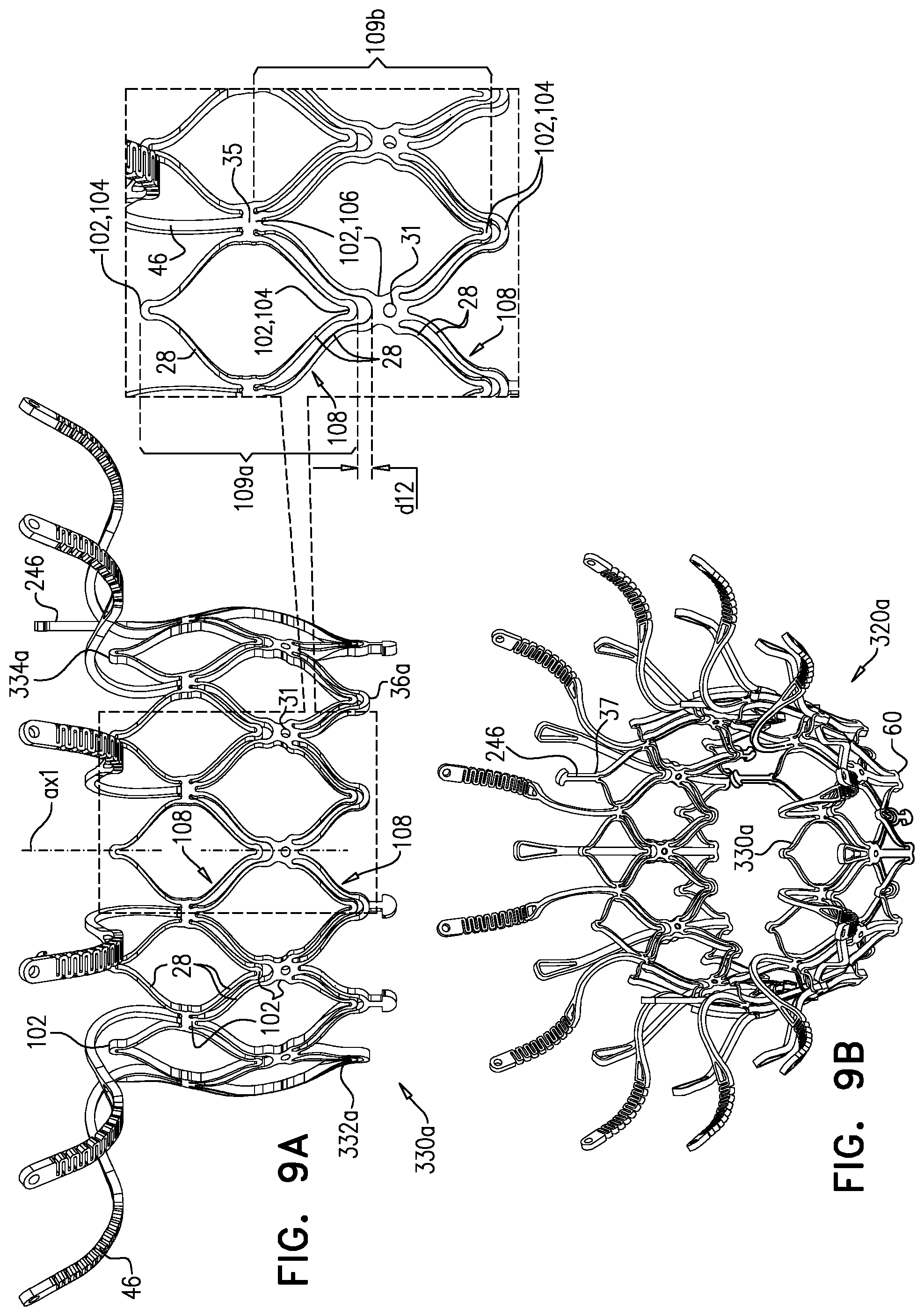
D00013
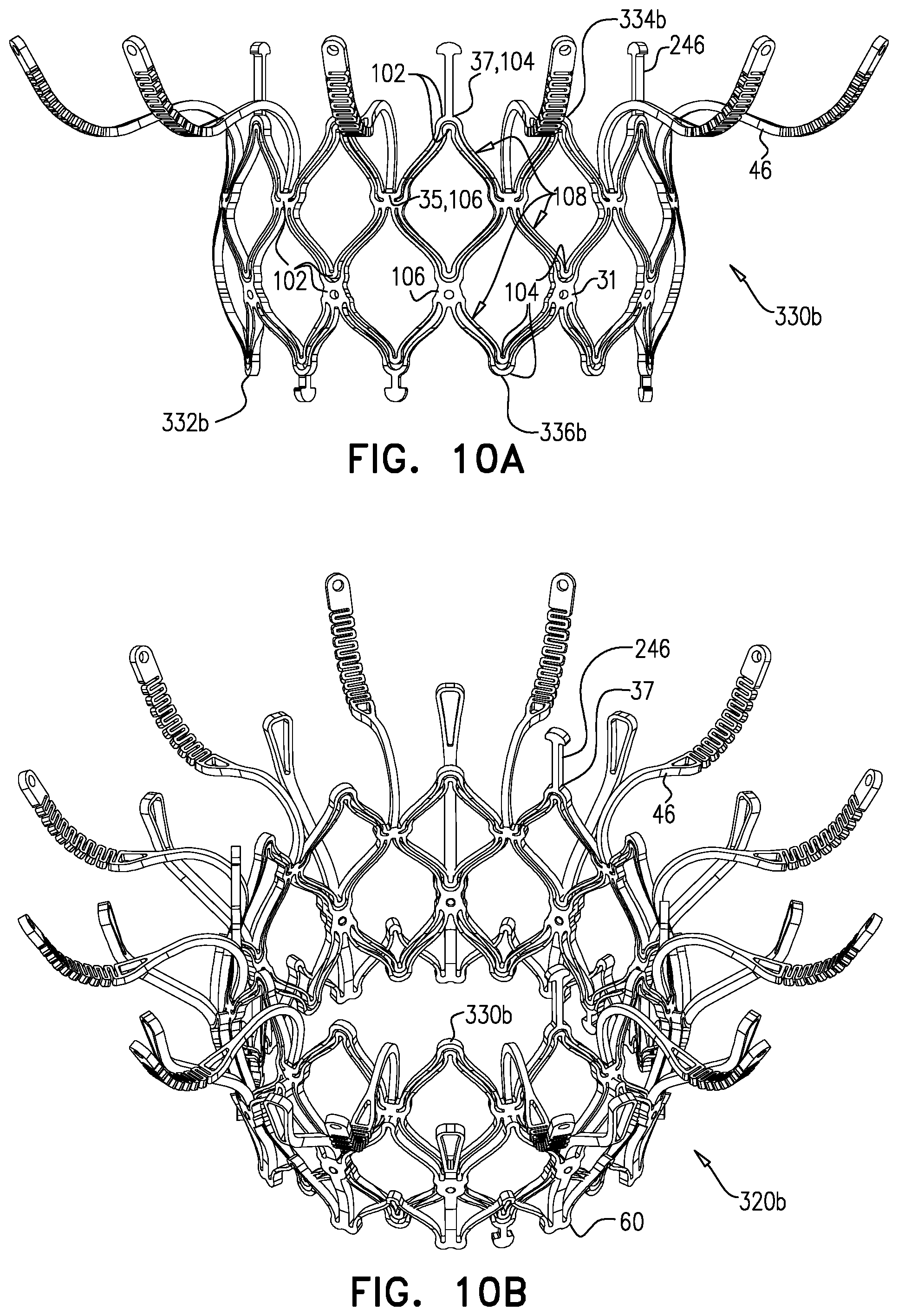
D00014
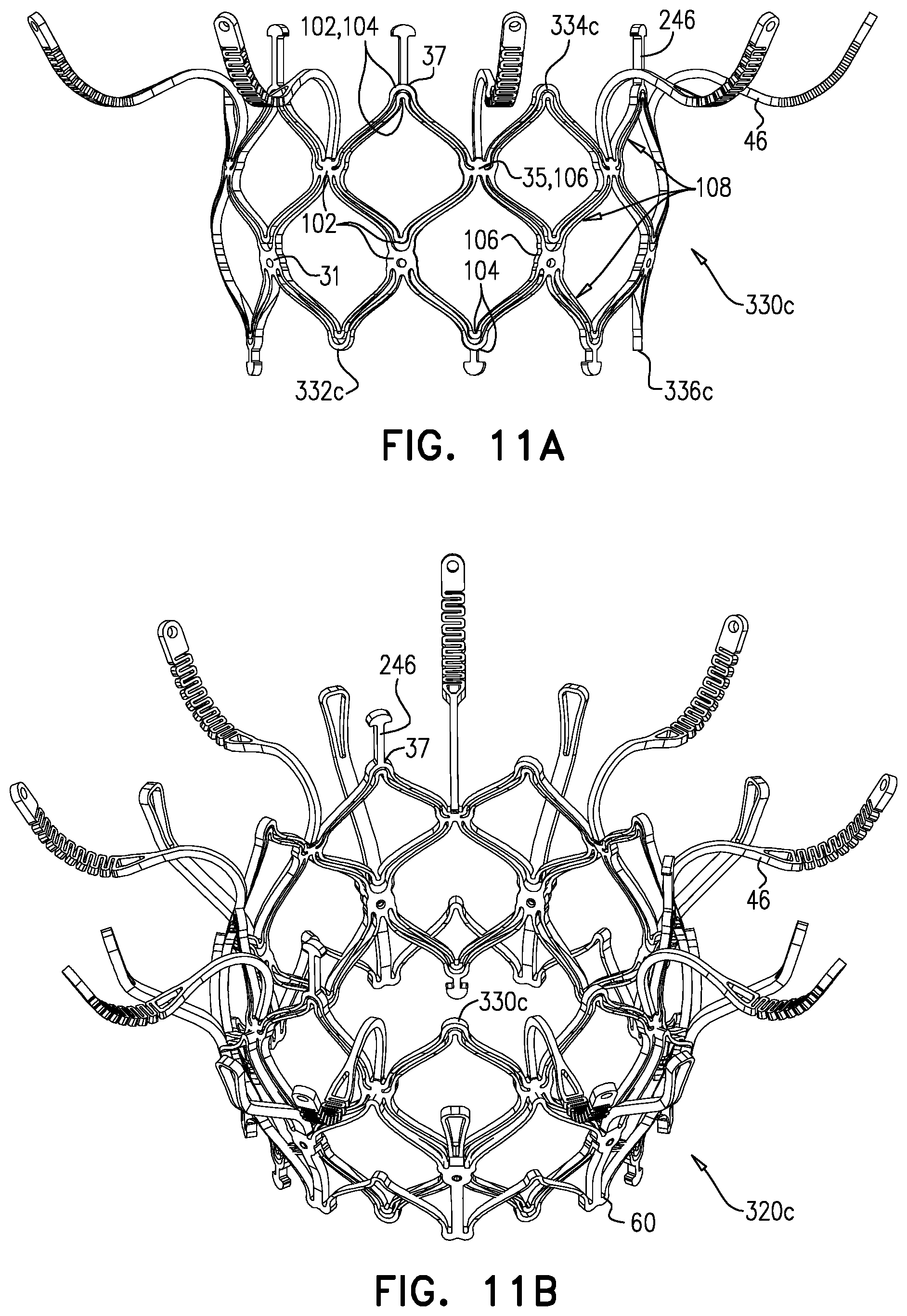
D00015
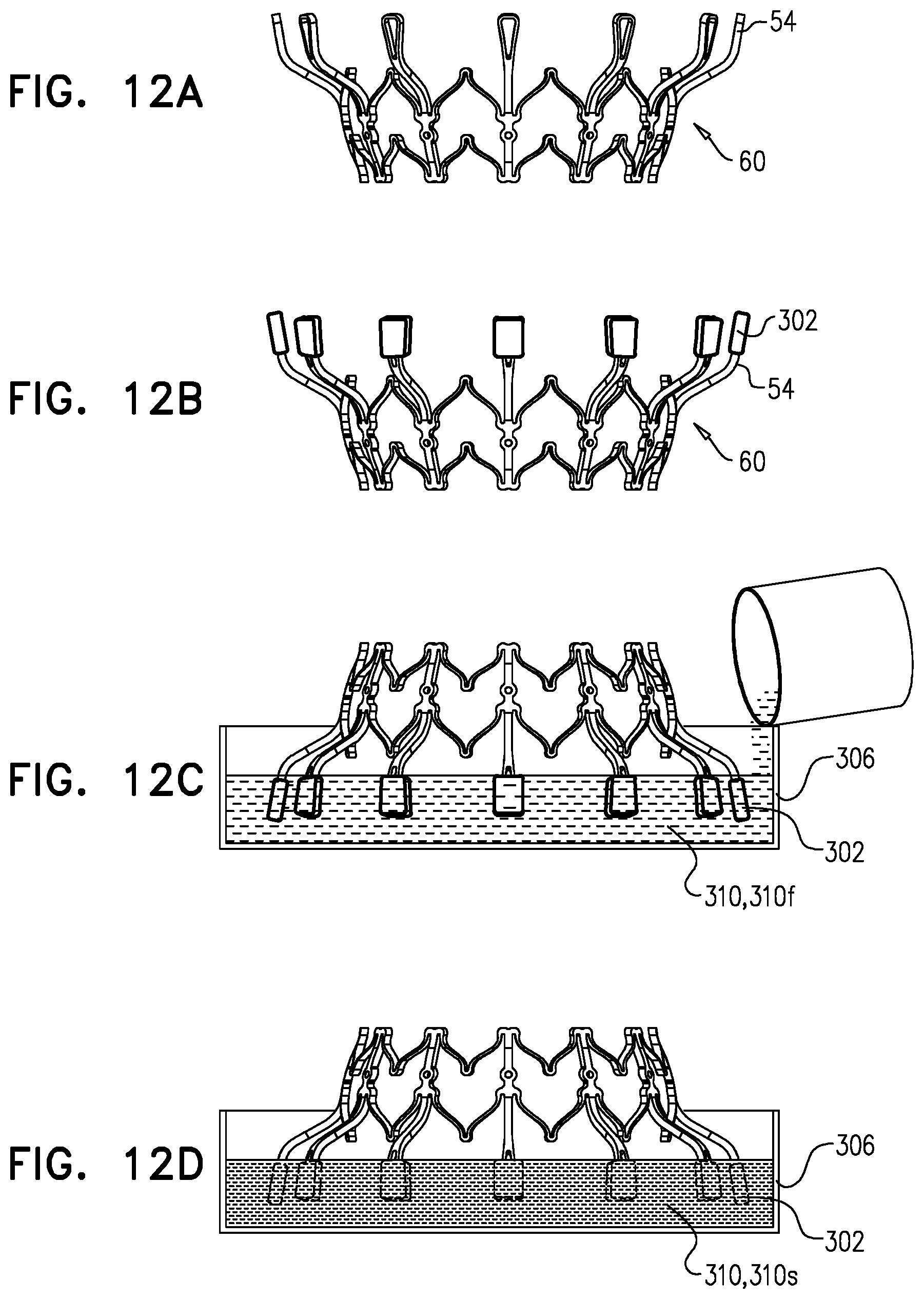
D00016

D00017
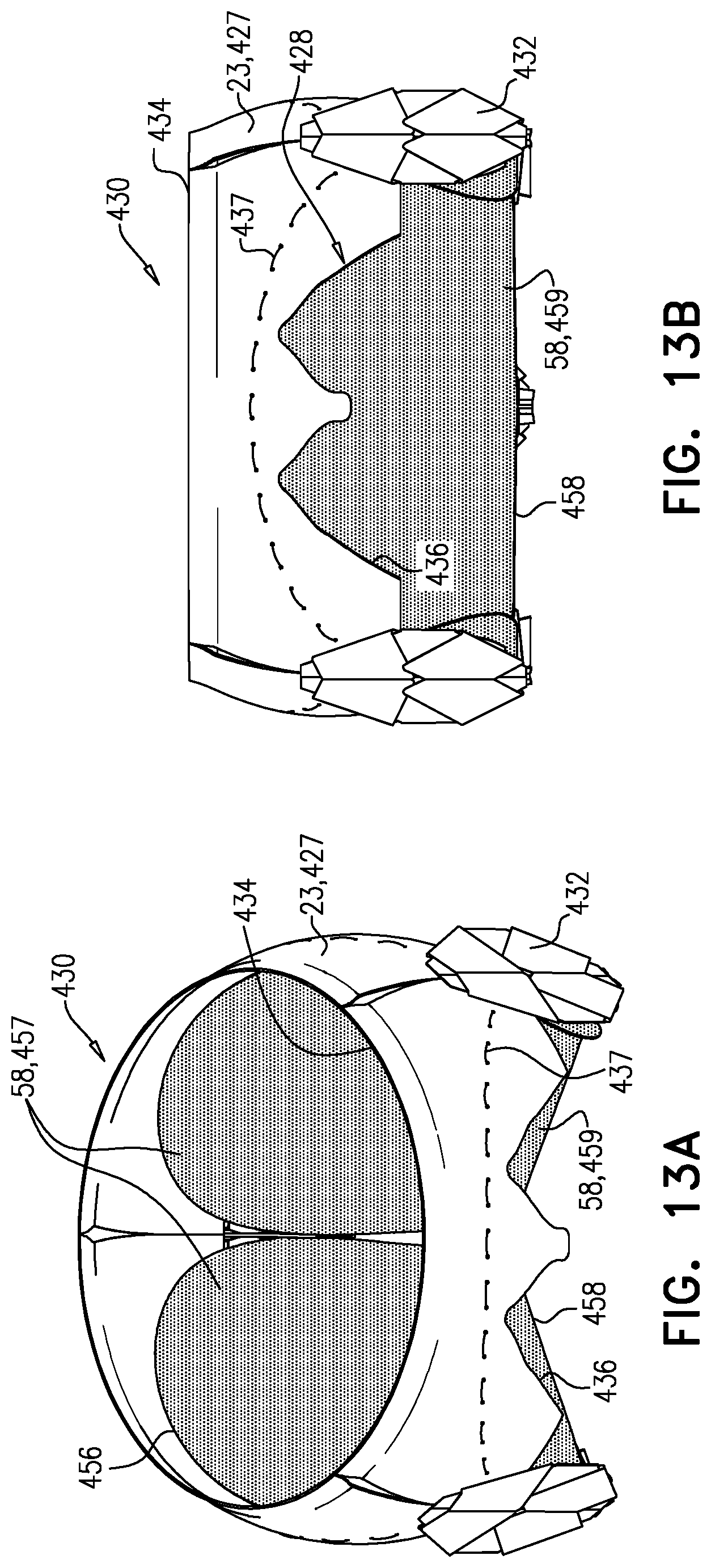
D00018
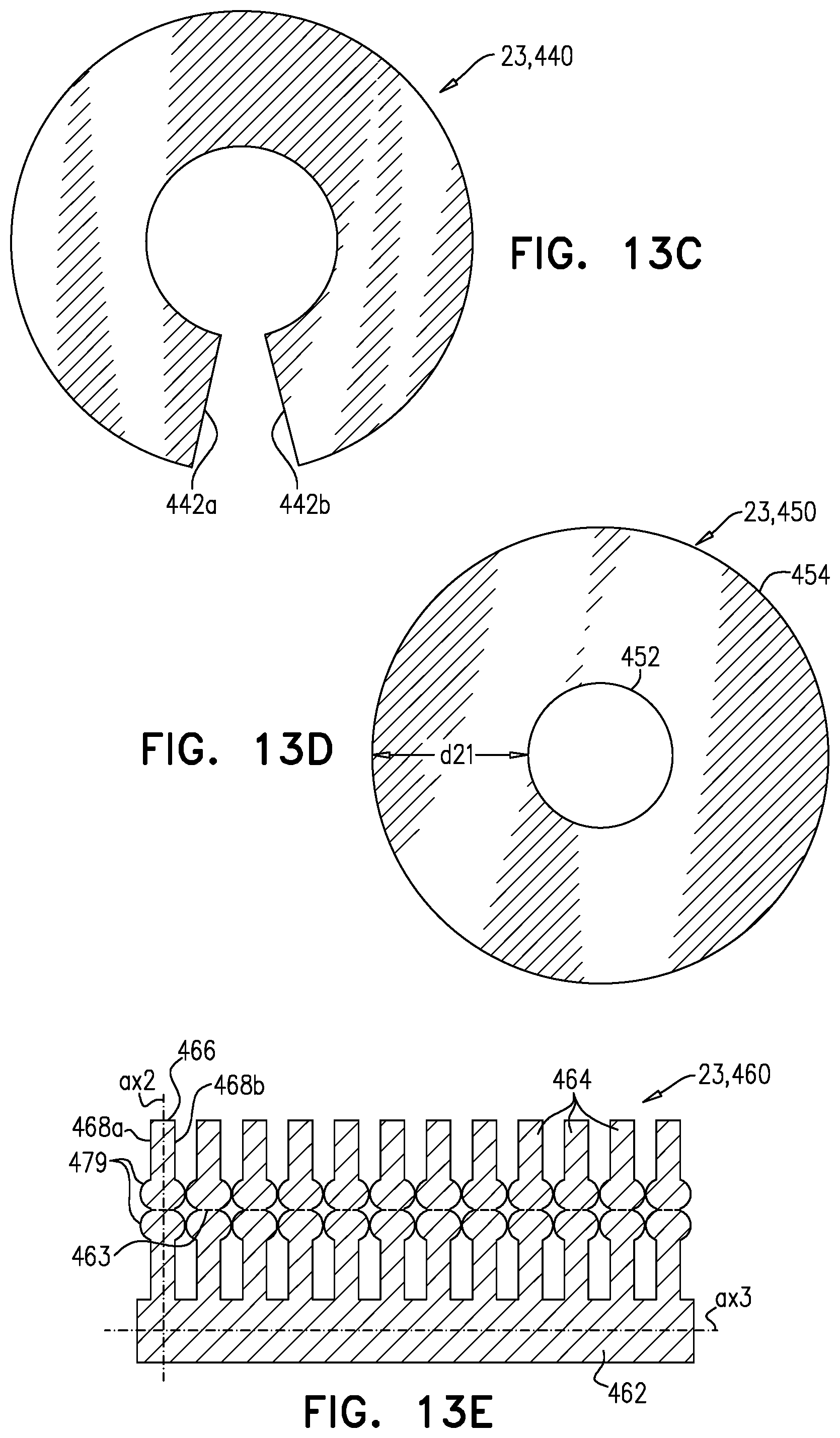
D00019
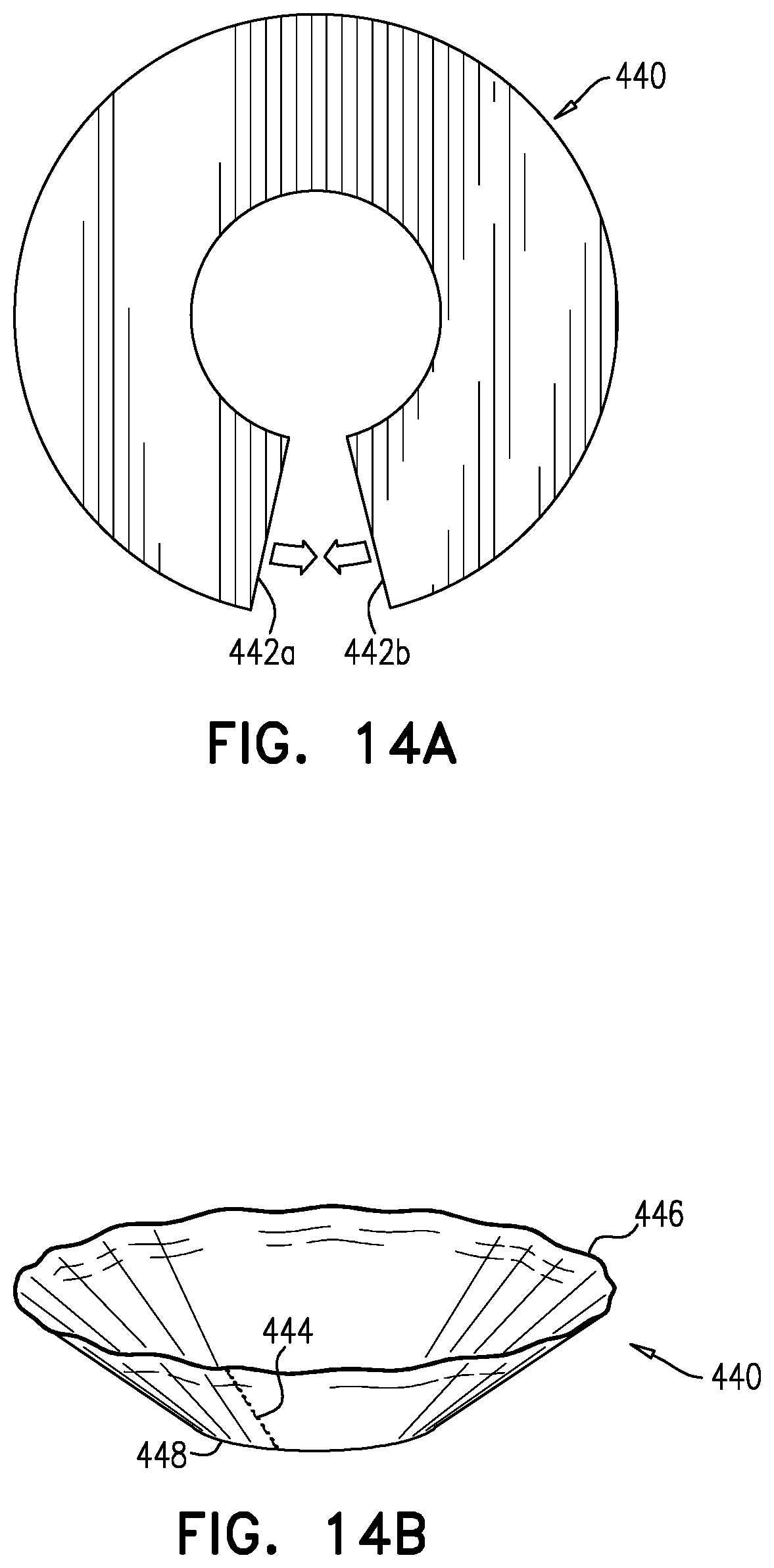
D00020
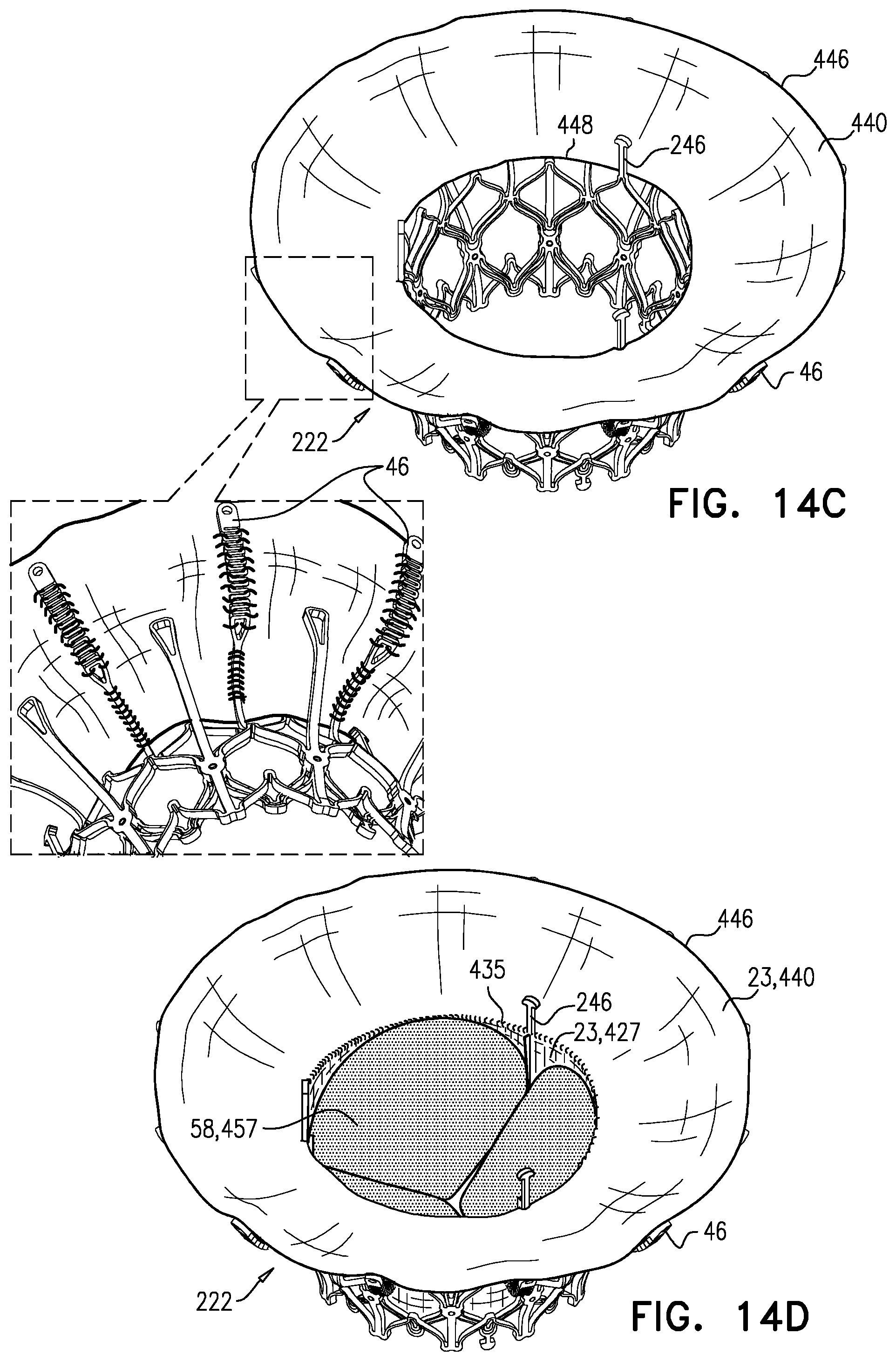
D00021
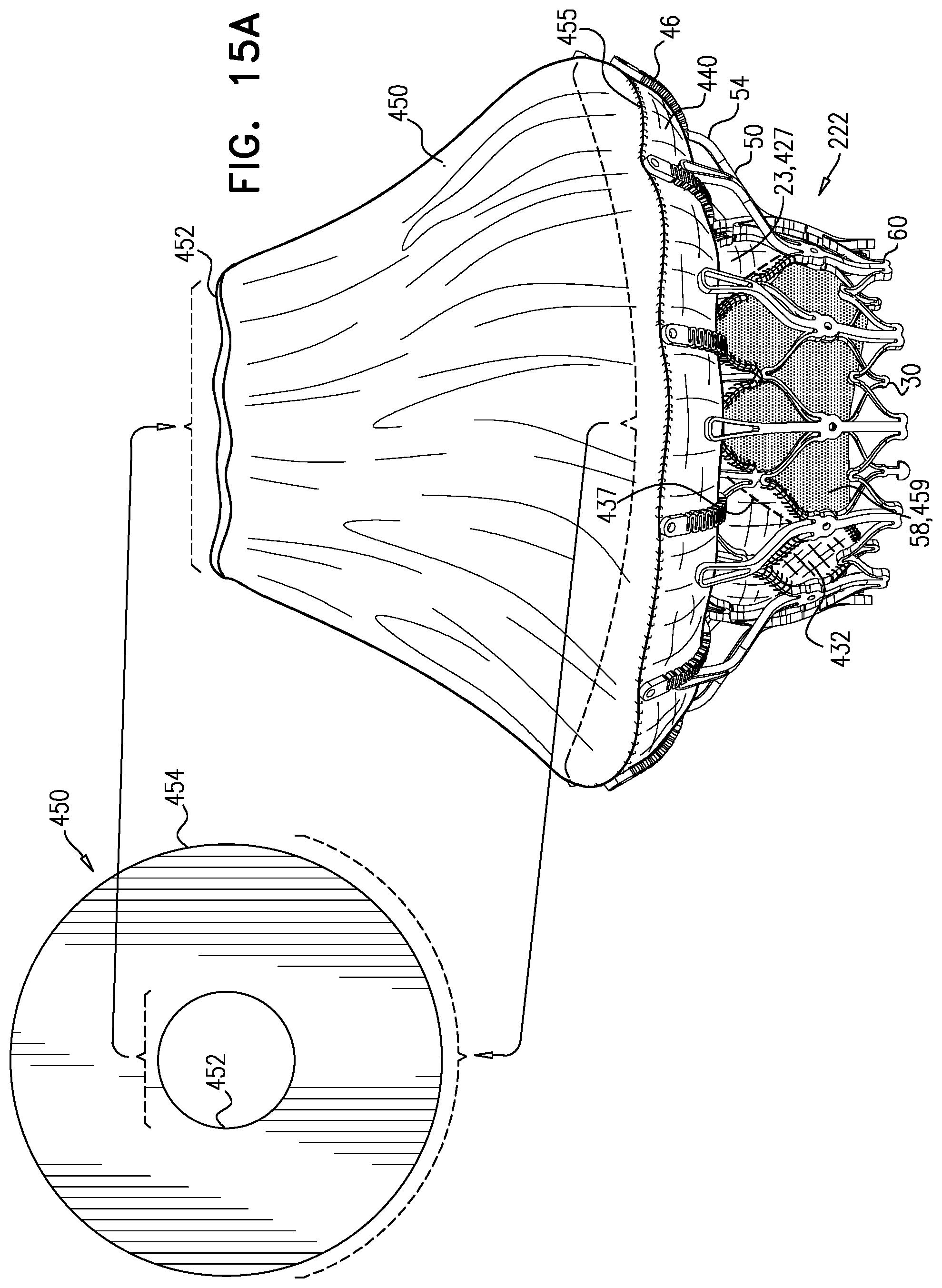
D00022
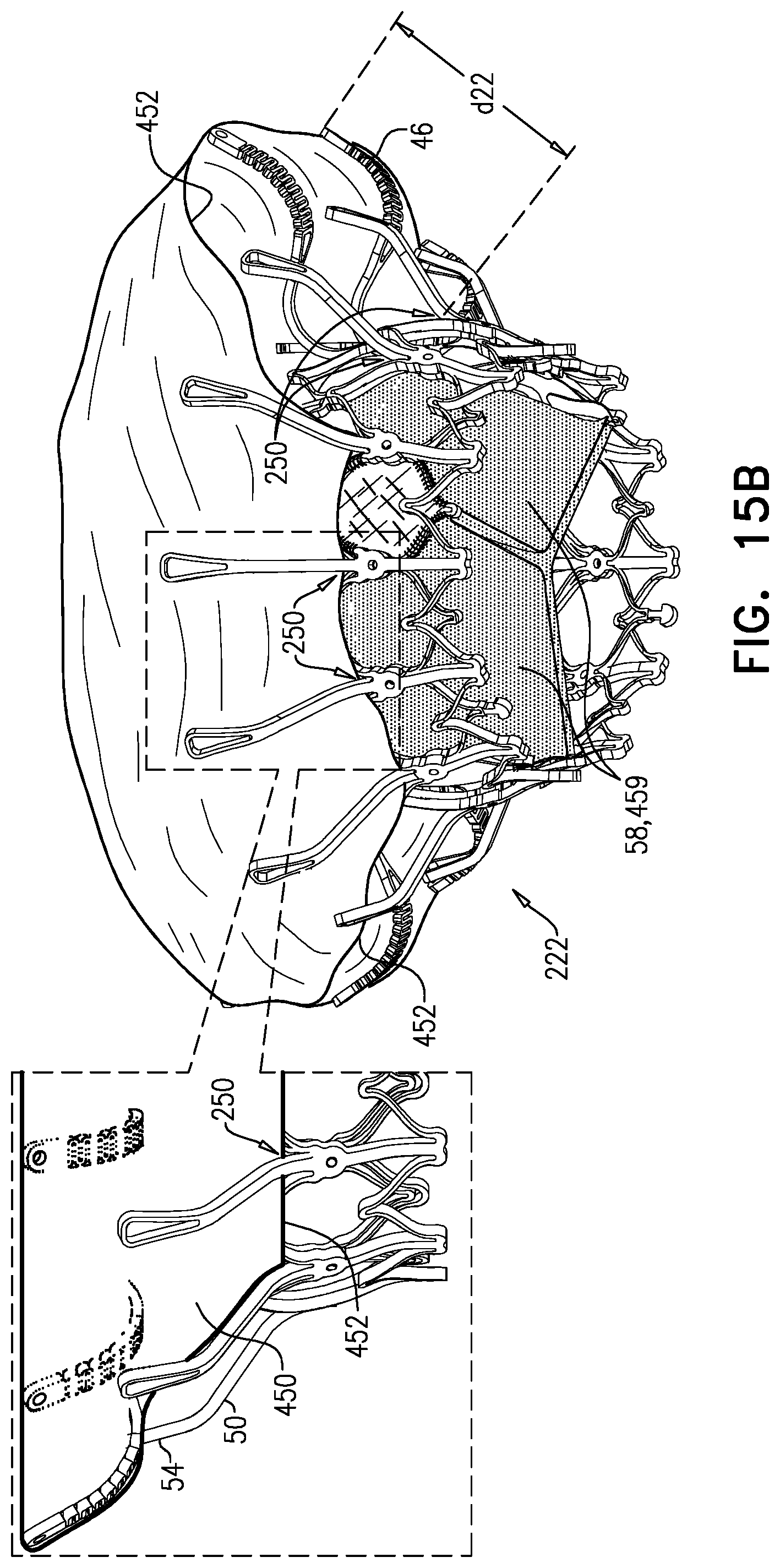
D00023
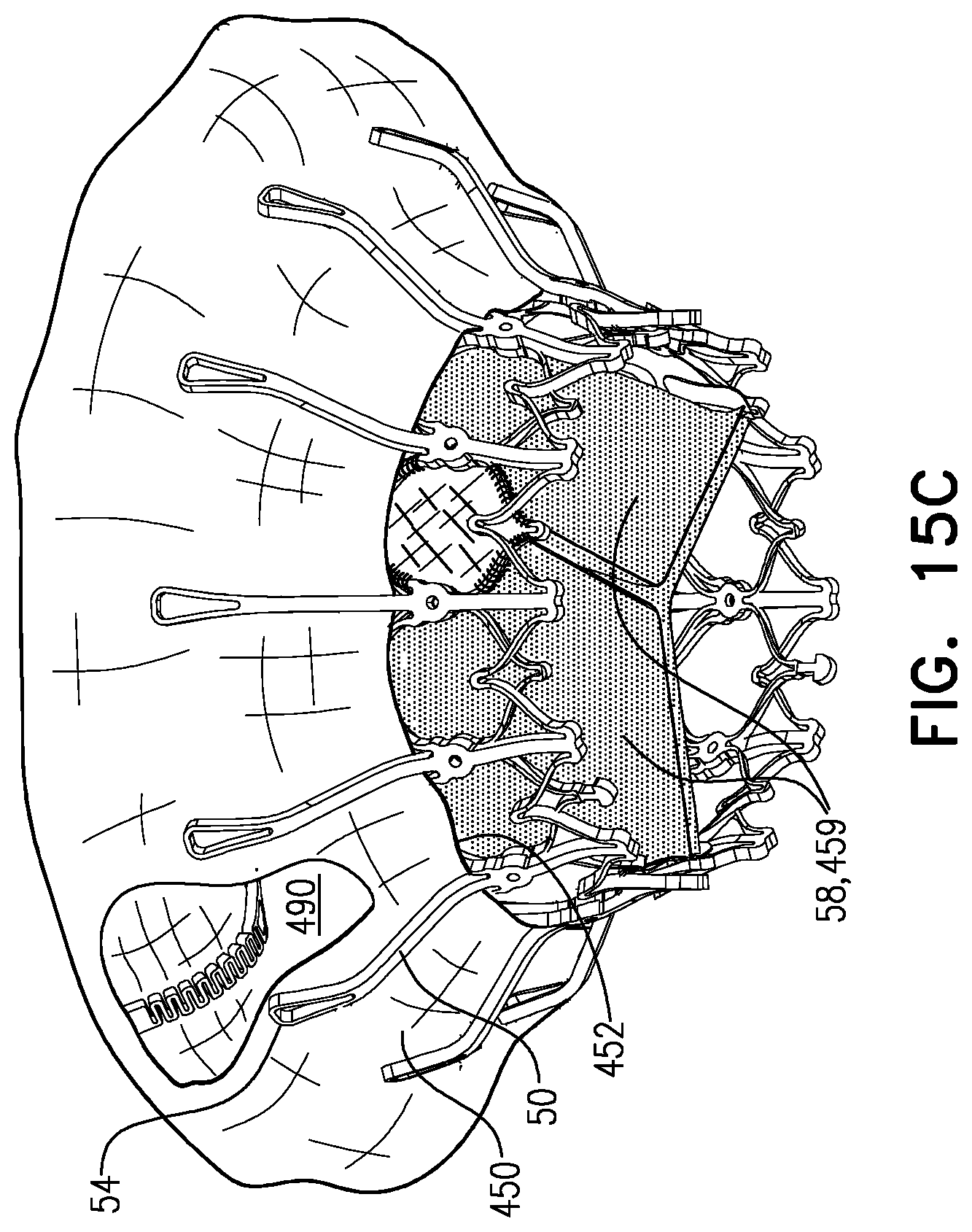
D00024
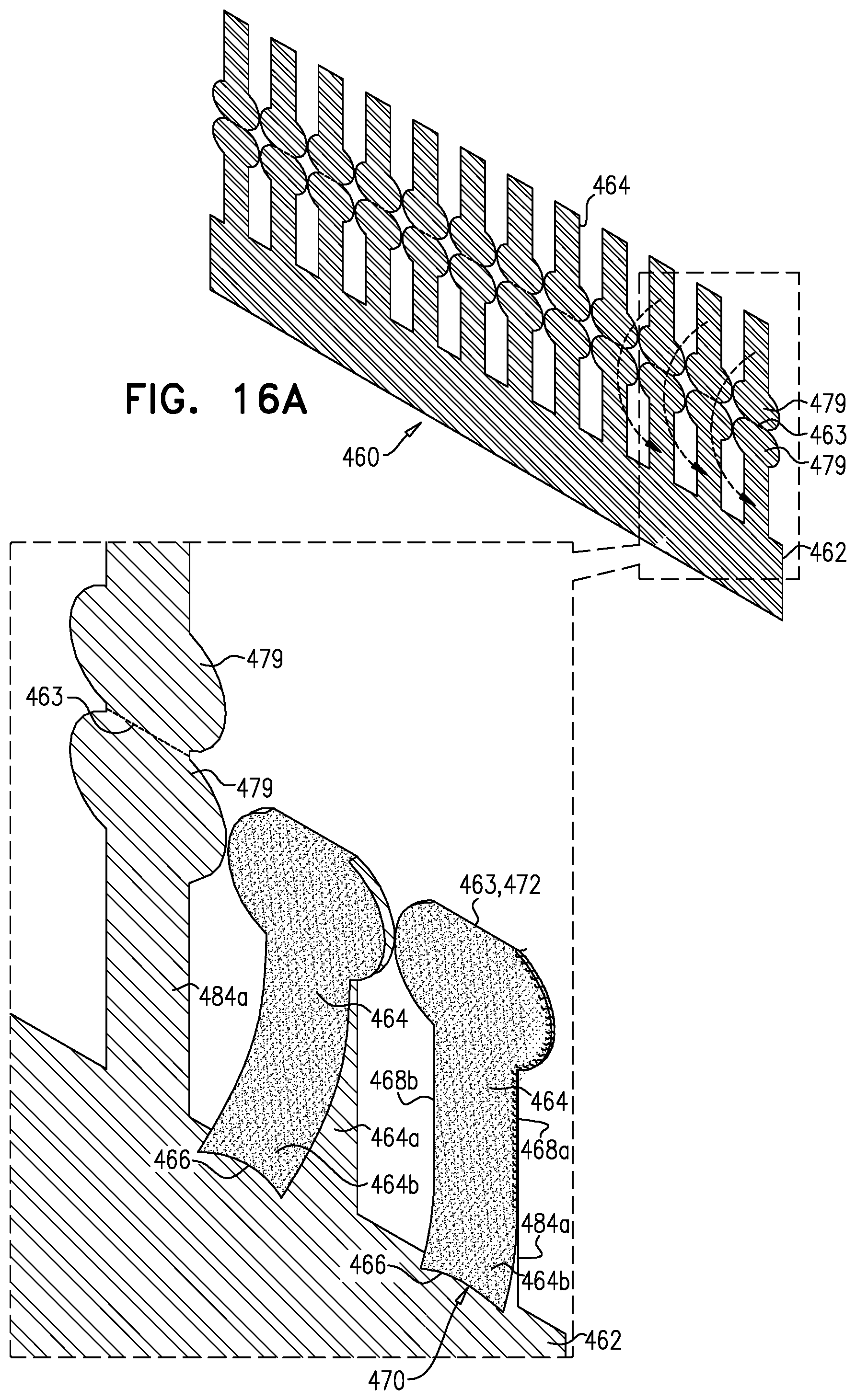
D00025
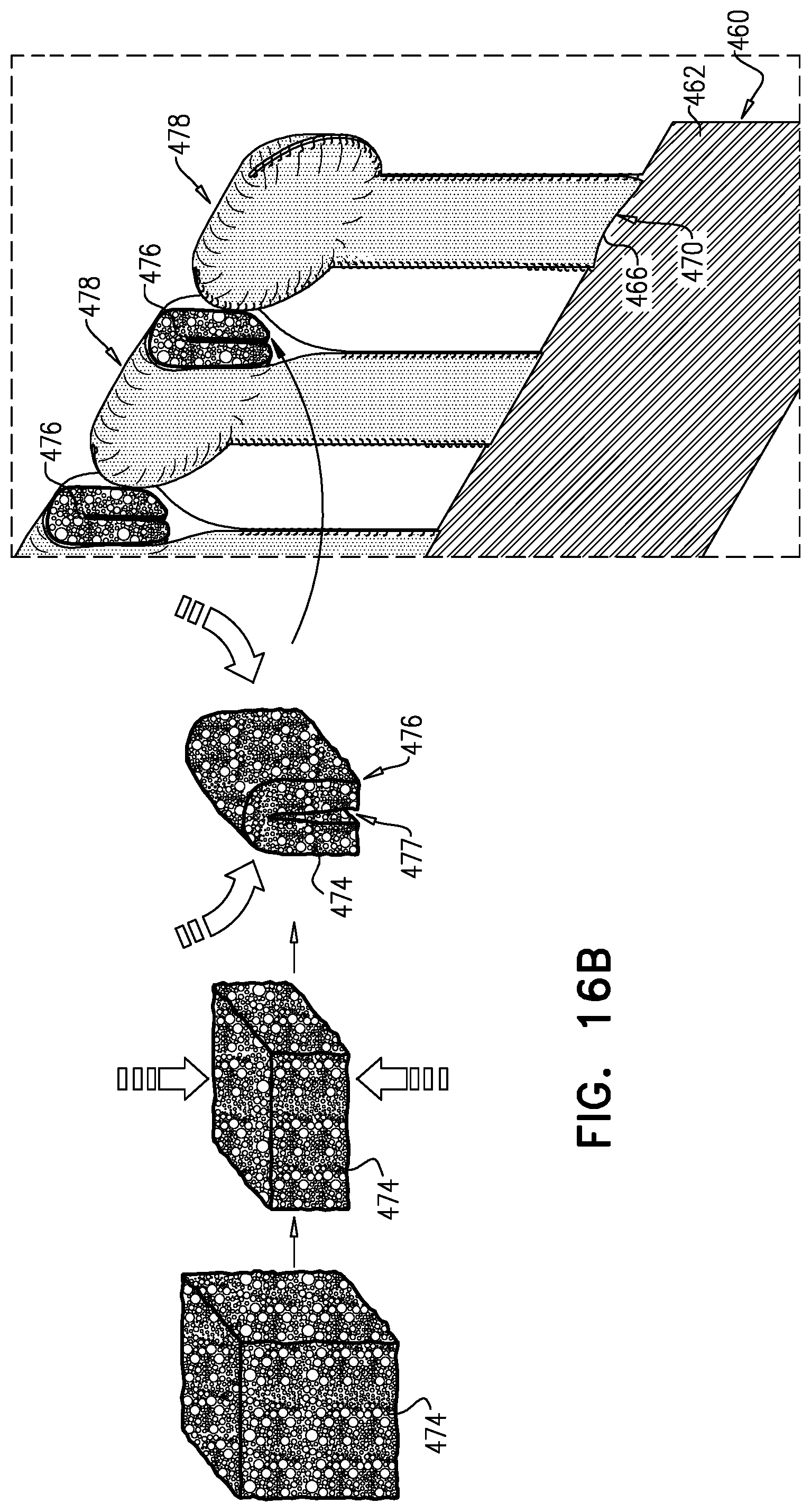
D00026
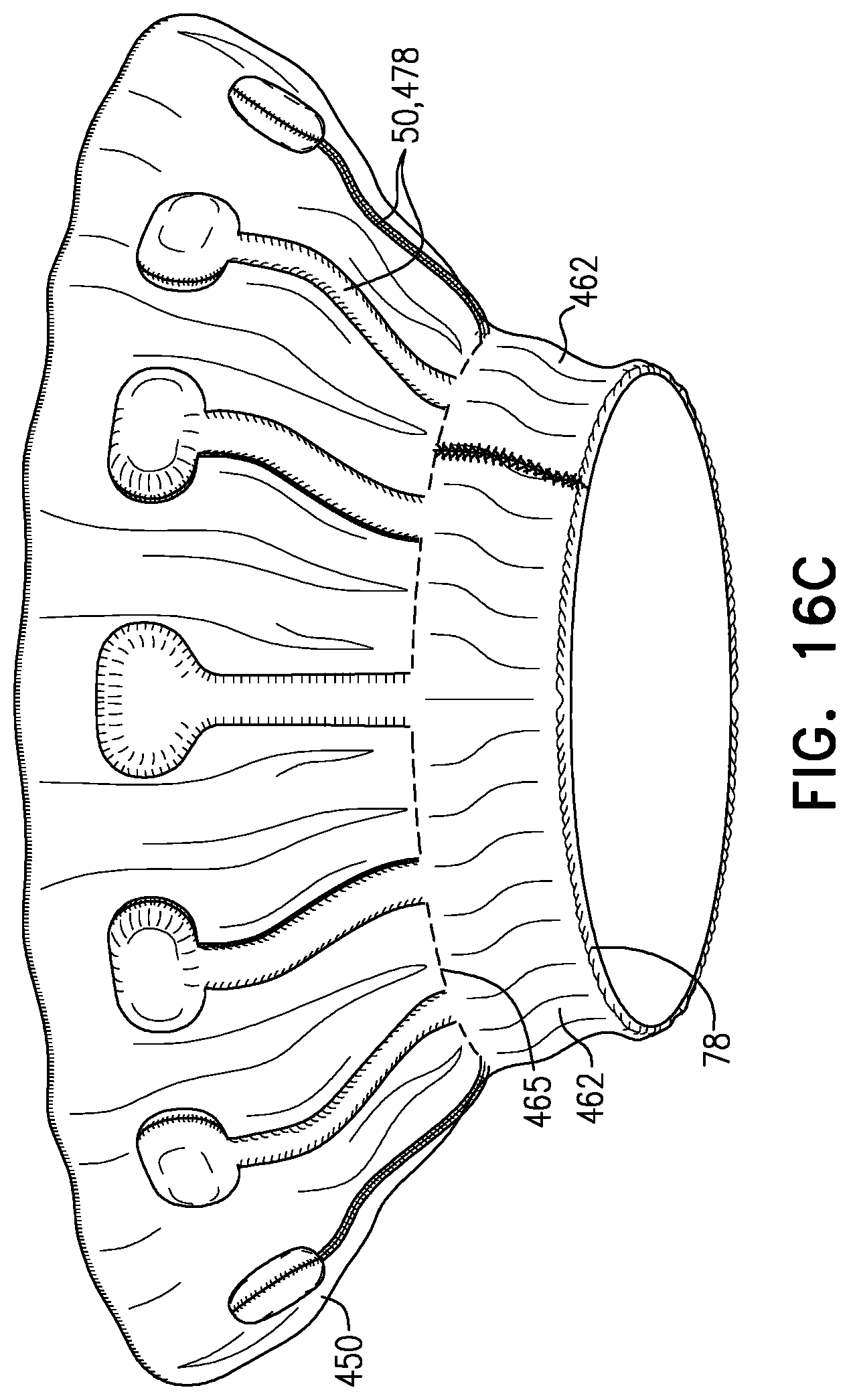
D00027
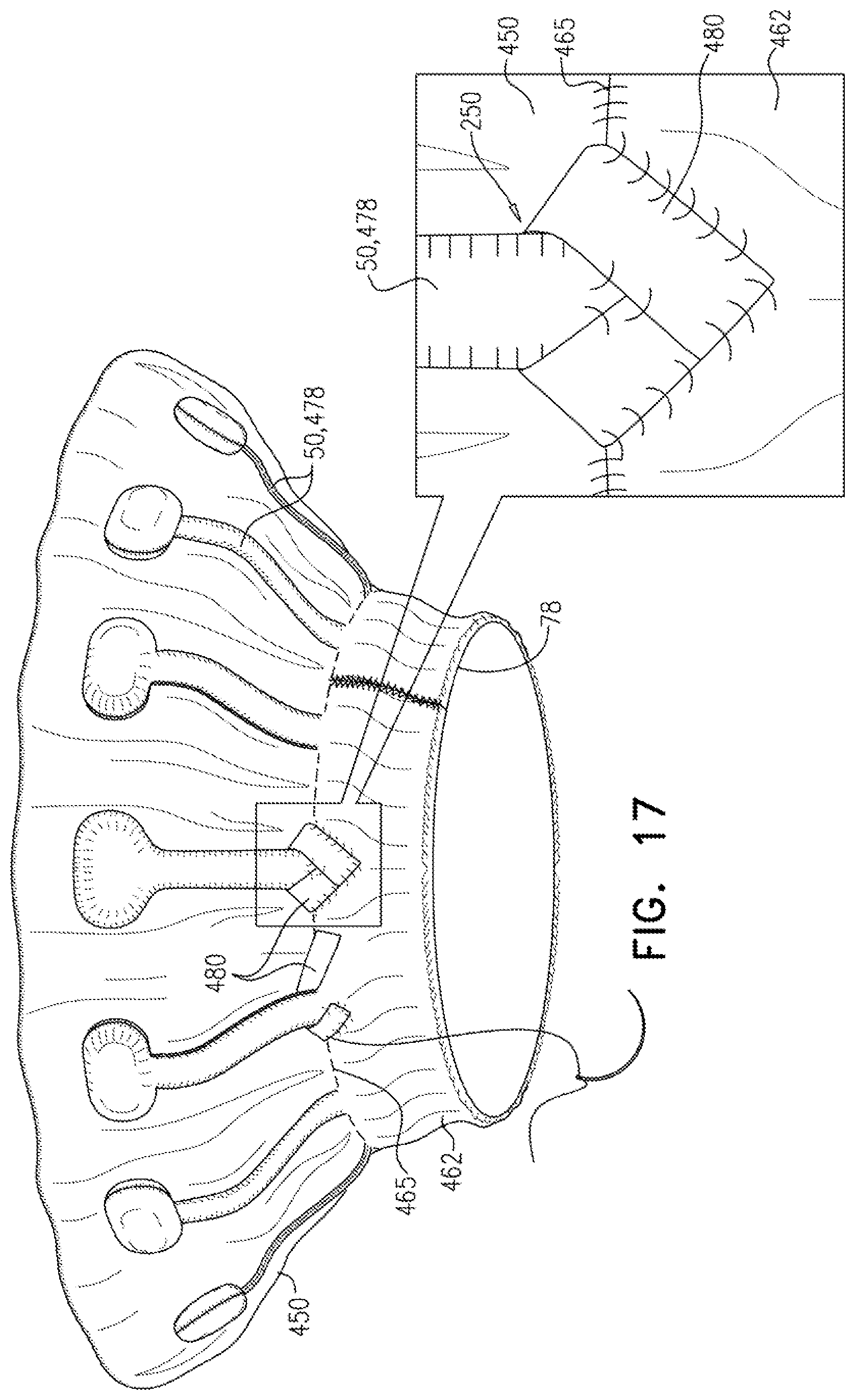
D00028
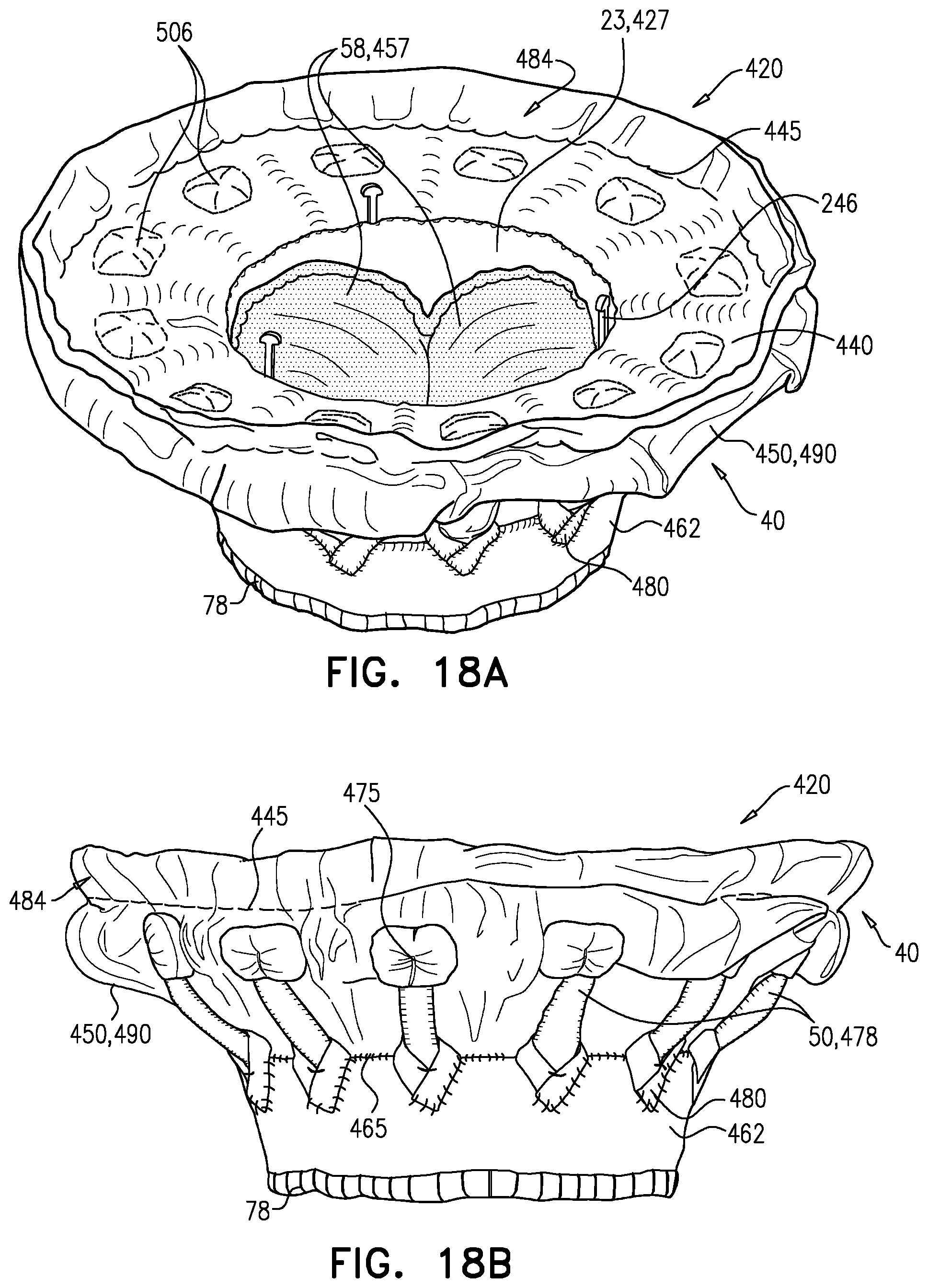
D00029
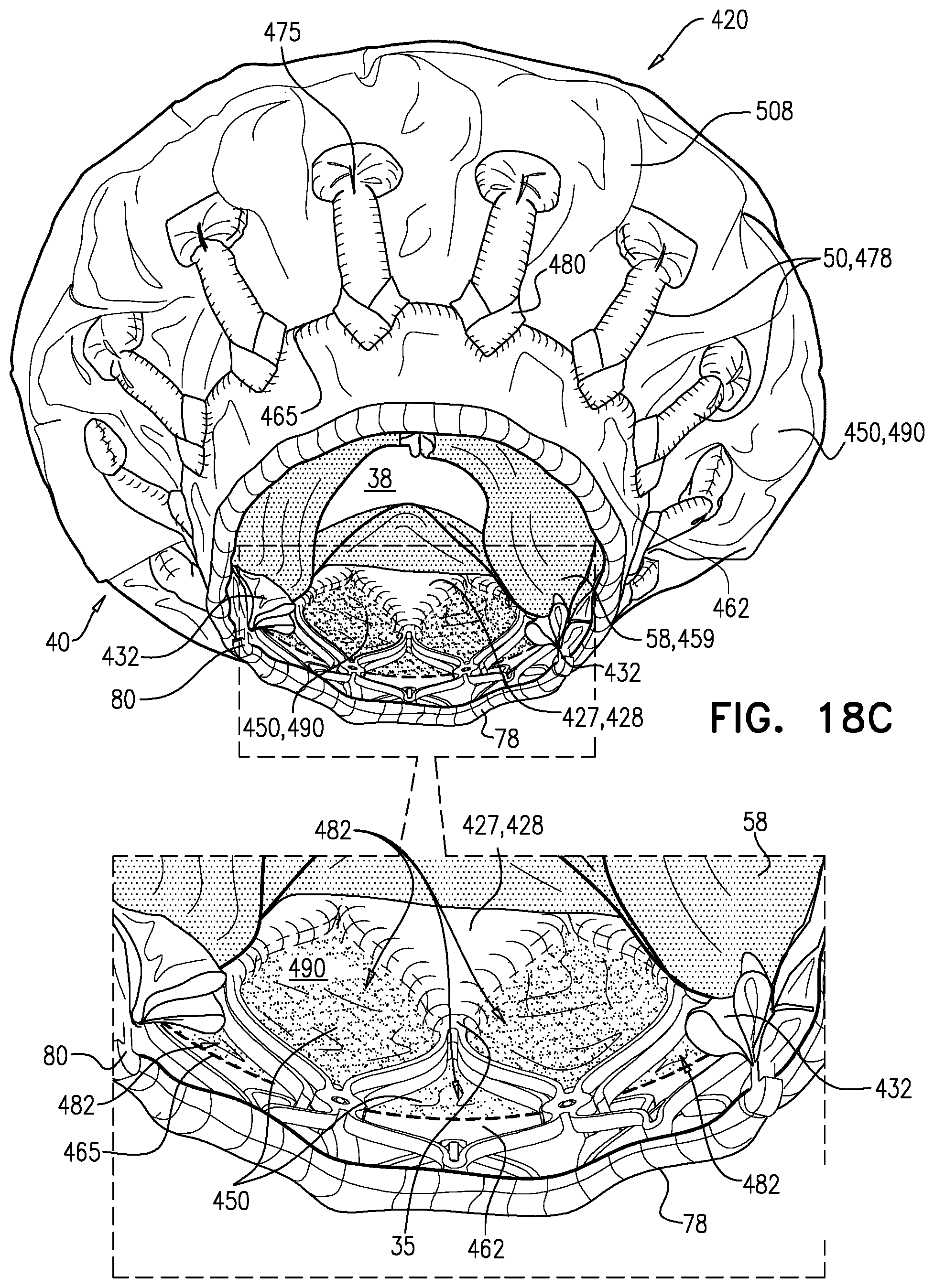
D00030
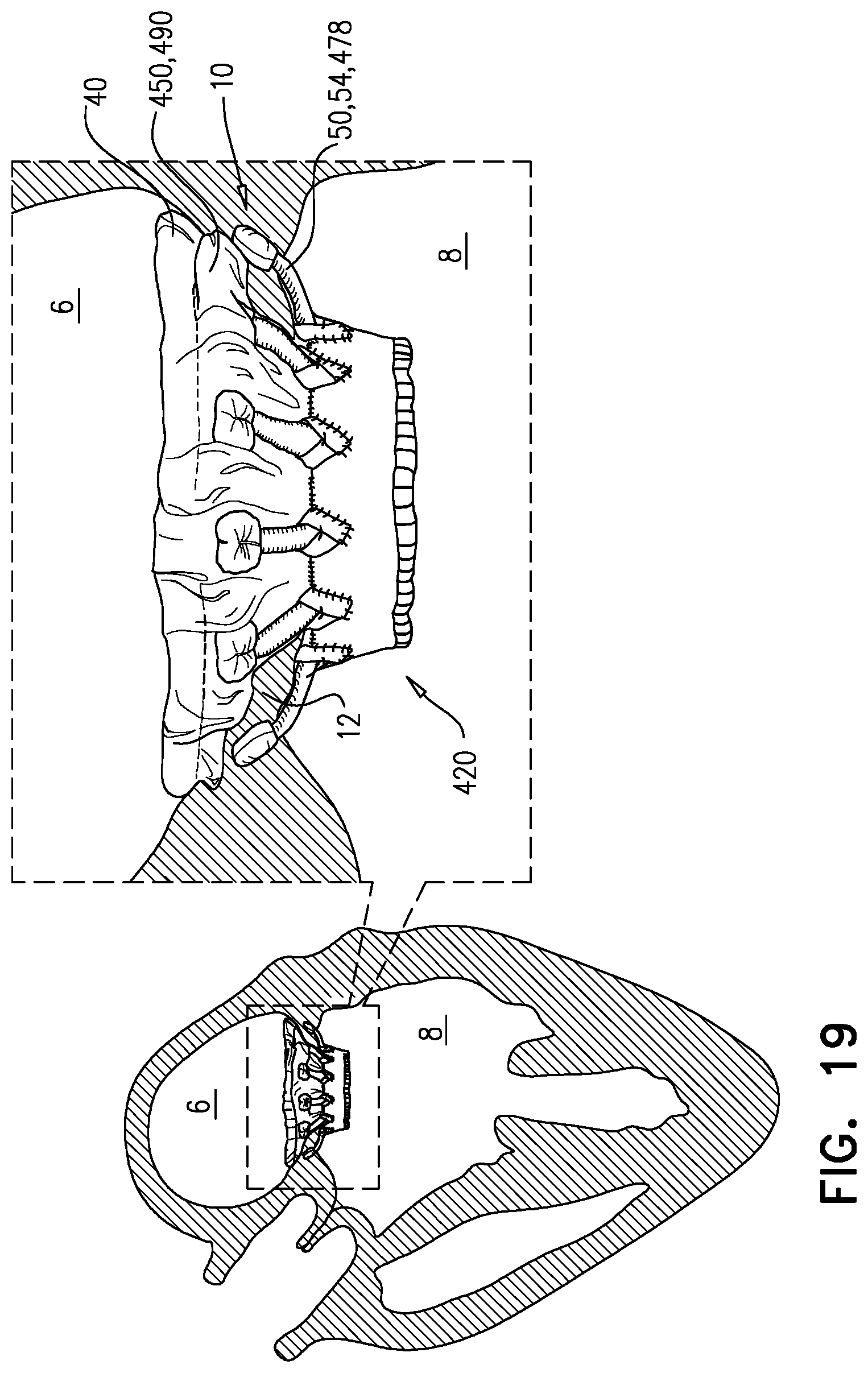
D00031
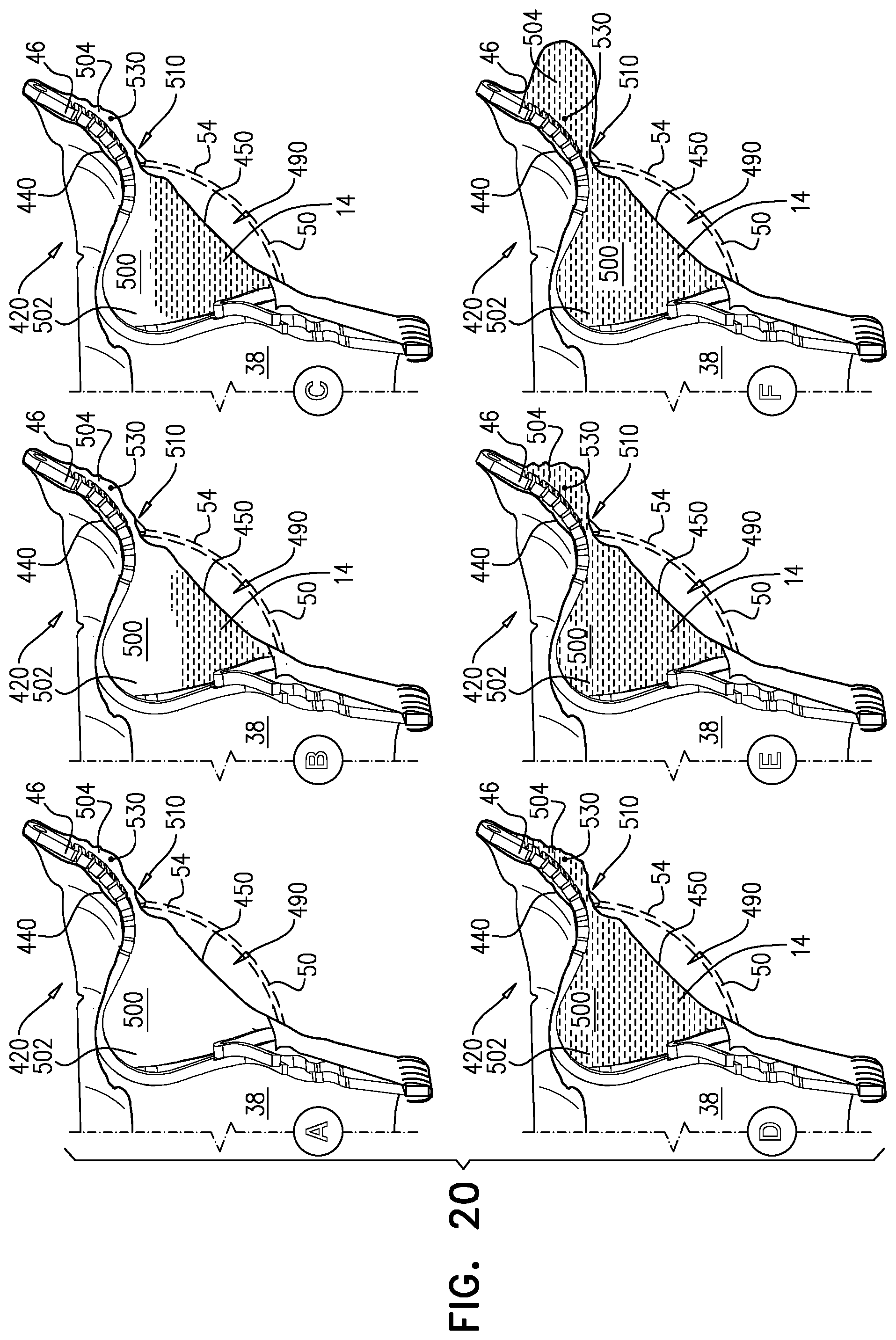
D00032
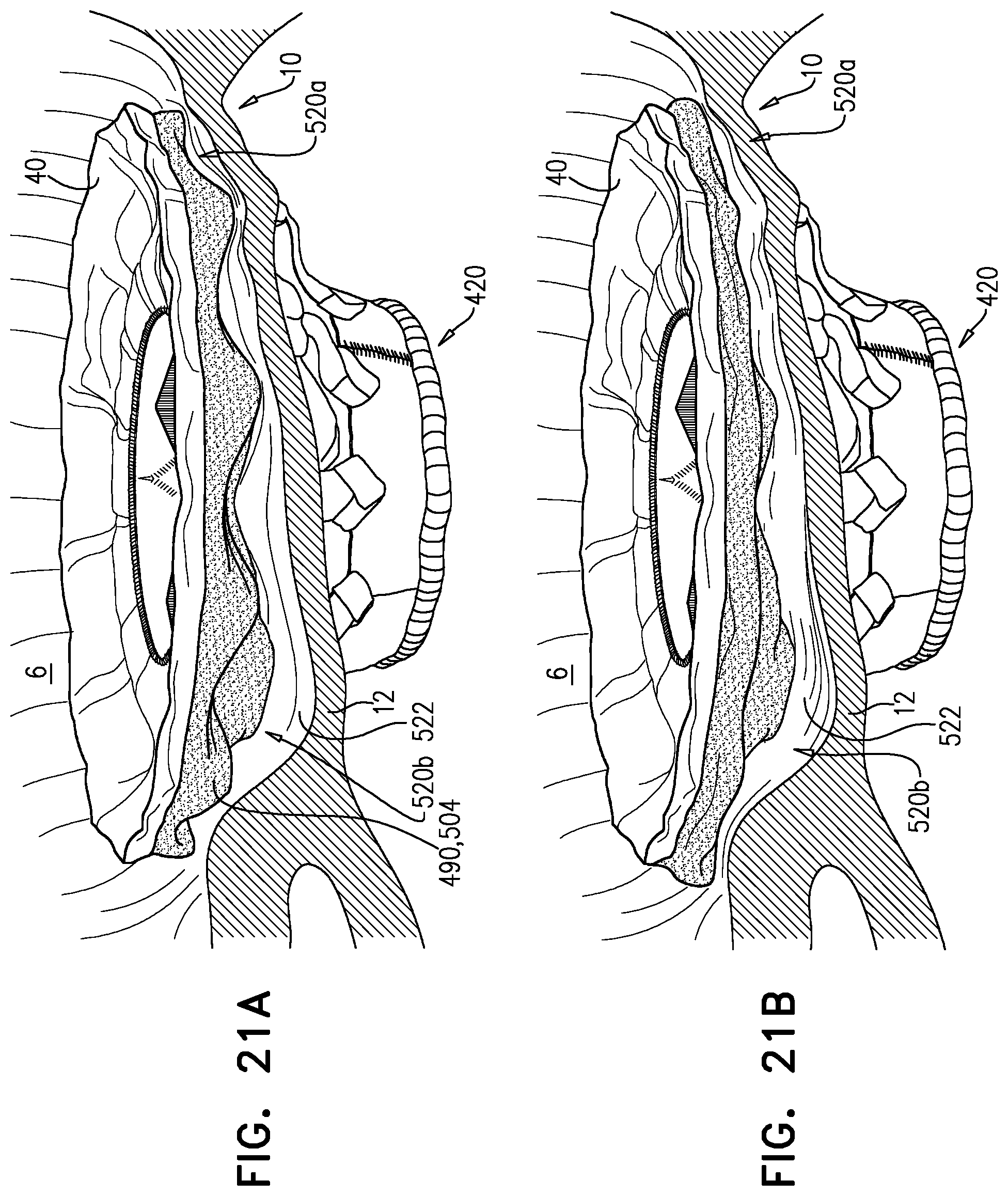
D00033
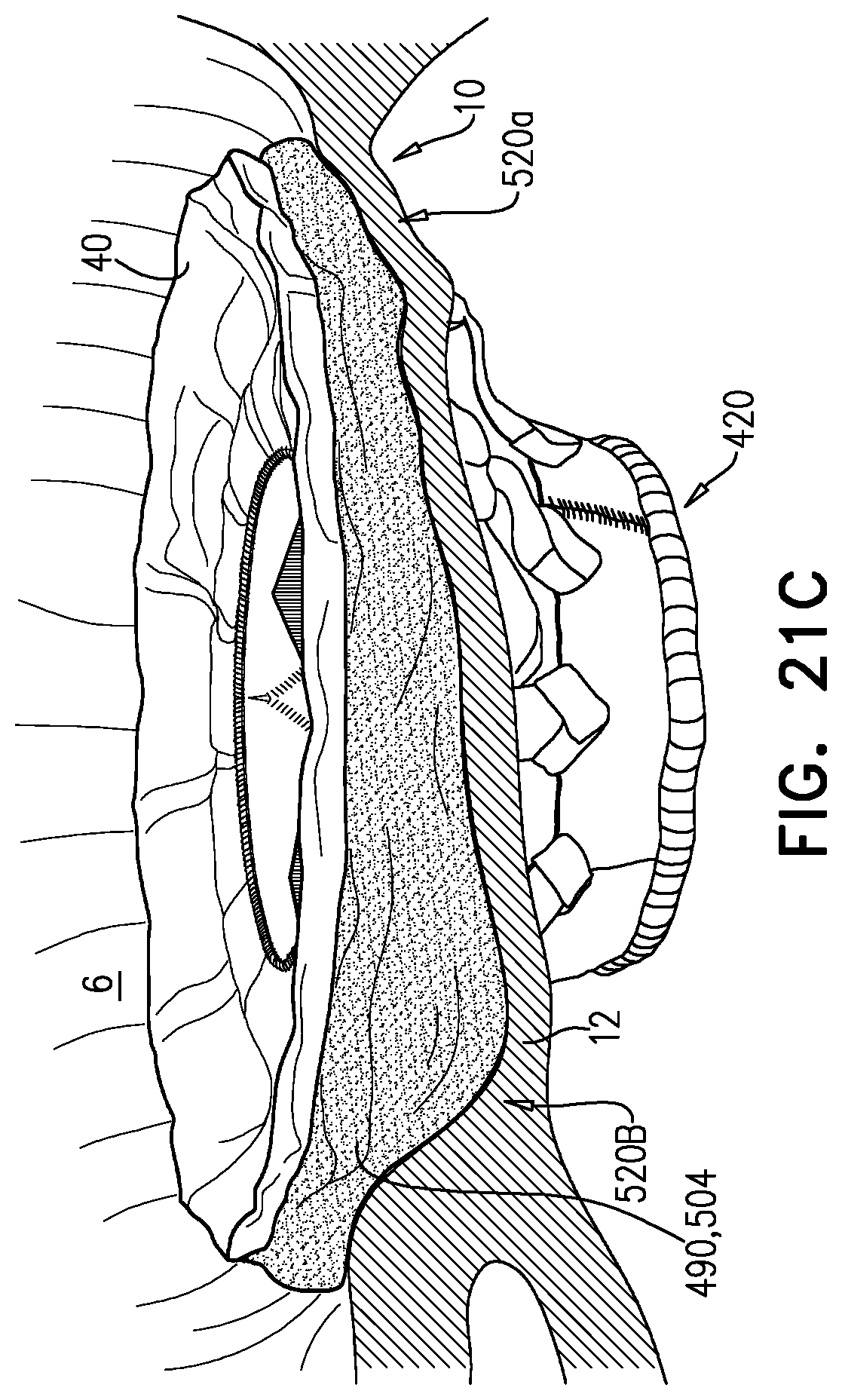
XML
uspto.report is an independent third-party trademark research tool that is not affiliated, endorsed, or sponsored by the United States Patent and Trademark Office (USPTO) or any other governmental organization. The information provided by uspto.report is based on publicly available data at the time of writing and is intended for informational purposes only.
While we strive to provide accurate and up-to-date information, we do not guarantee the accuracy, completeness, reliability, or suitability of the information displayed on this site. The use of this site is at your own risk. Any reliance you place on such information is therefore strictly at your own risk.
All official trademark data, including owner information, should be verified by visiting the official USPTO website at www.uspto.gov. This site is not intended to replace professional legal advice and should not be used as a substitute for consulting with a legal professional who is knowledgeable about trademark law.